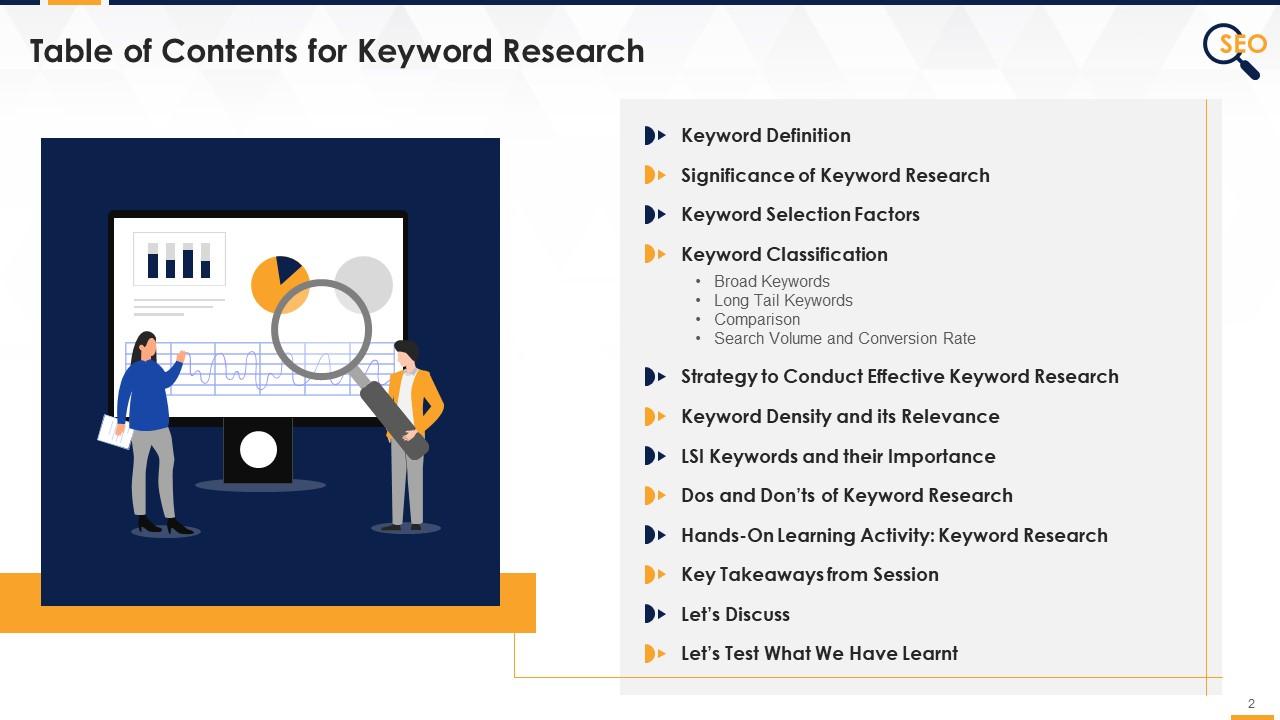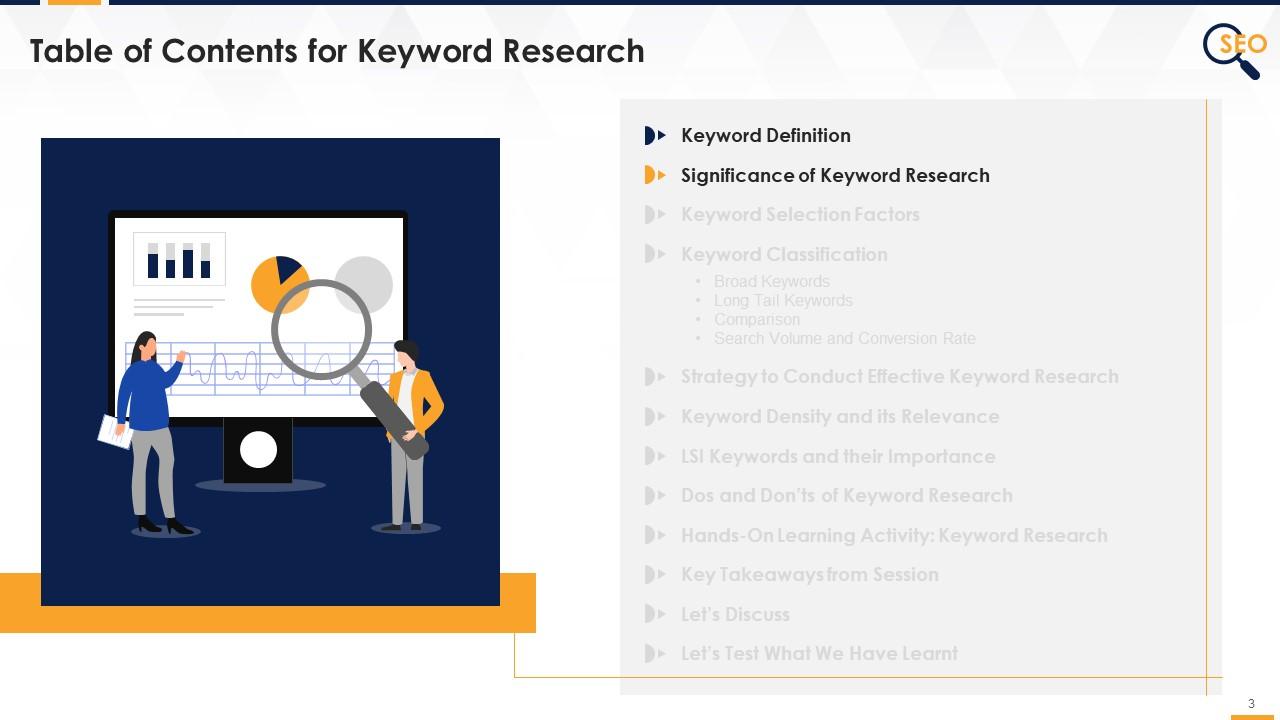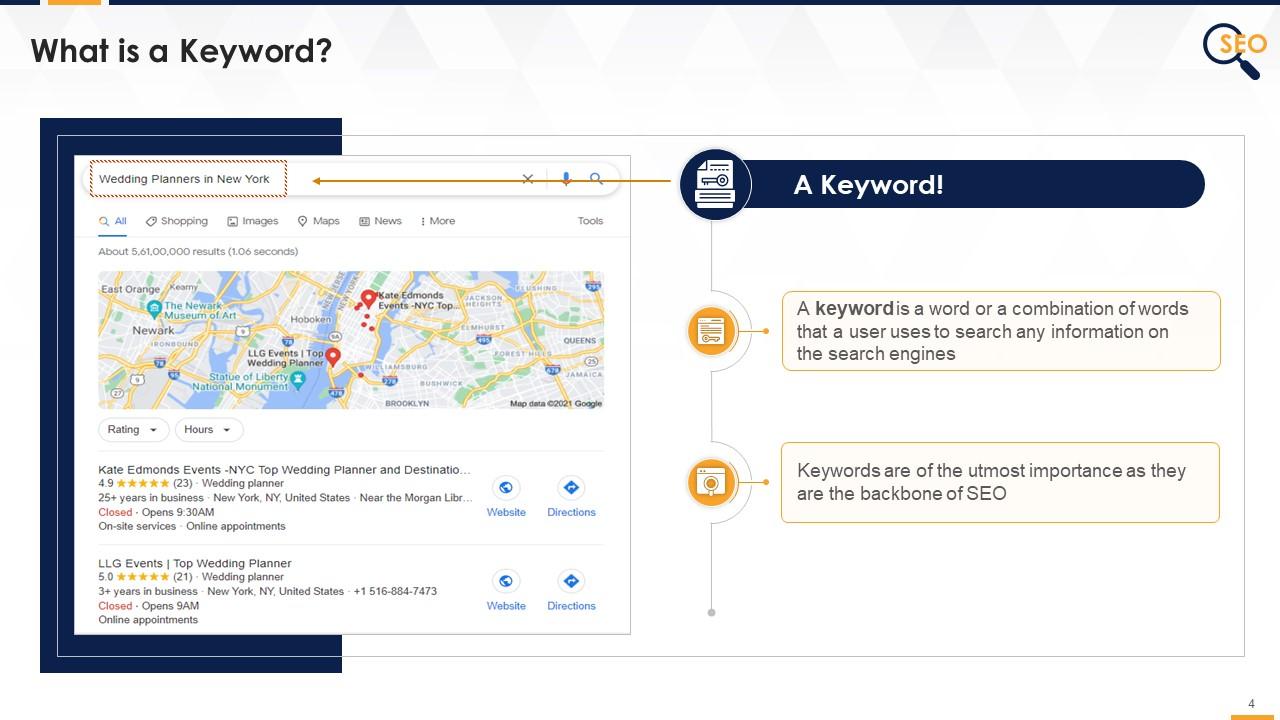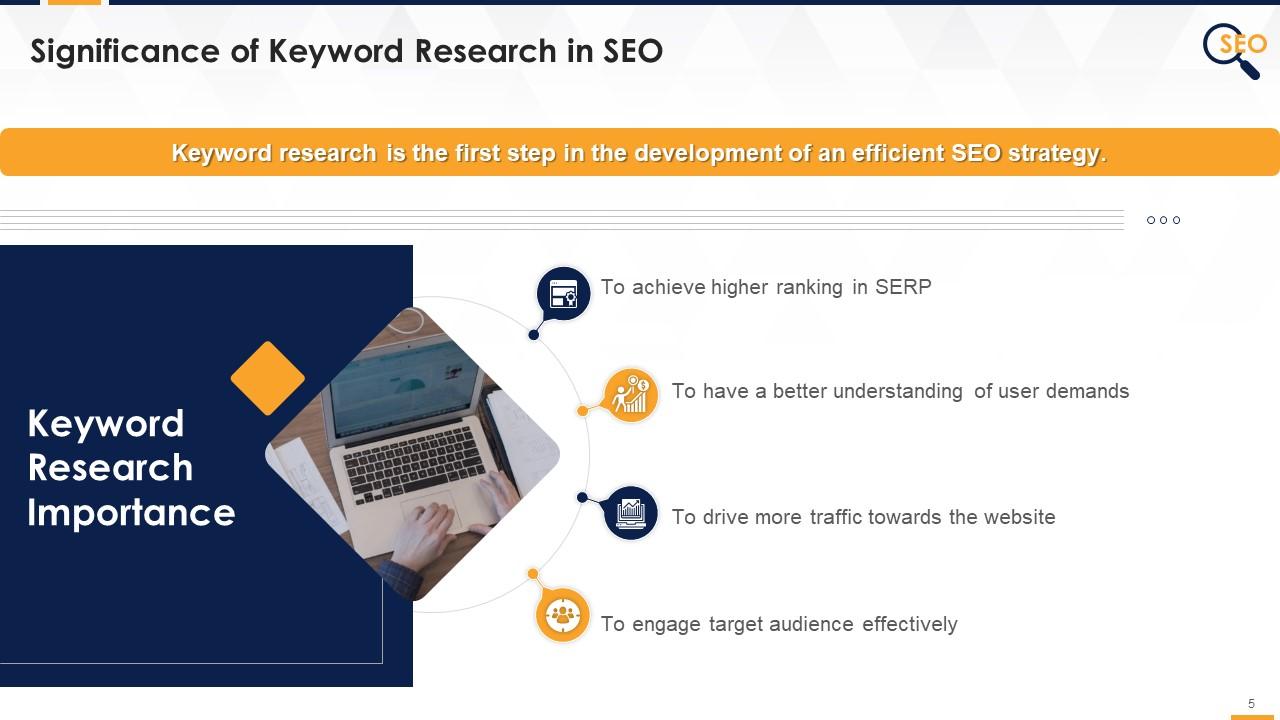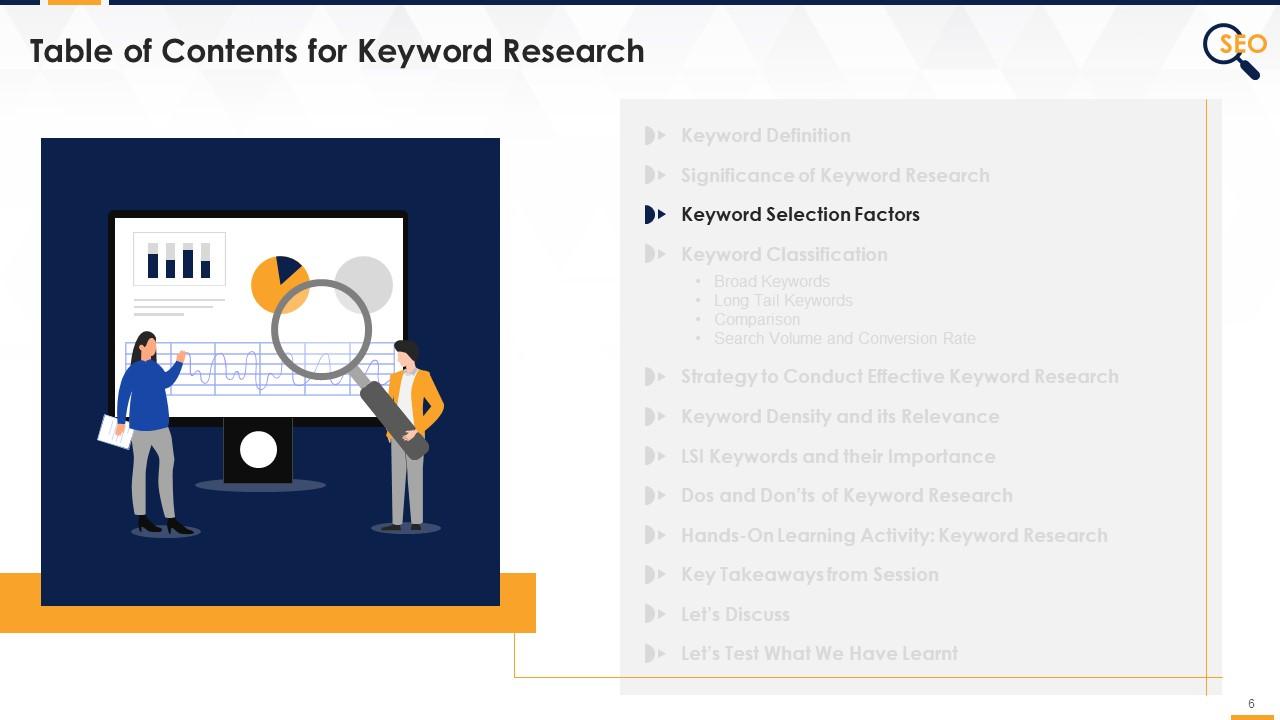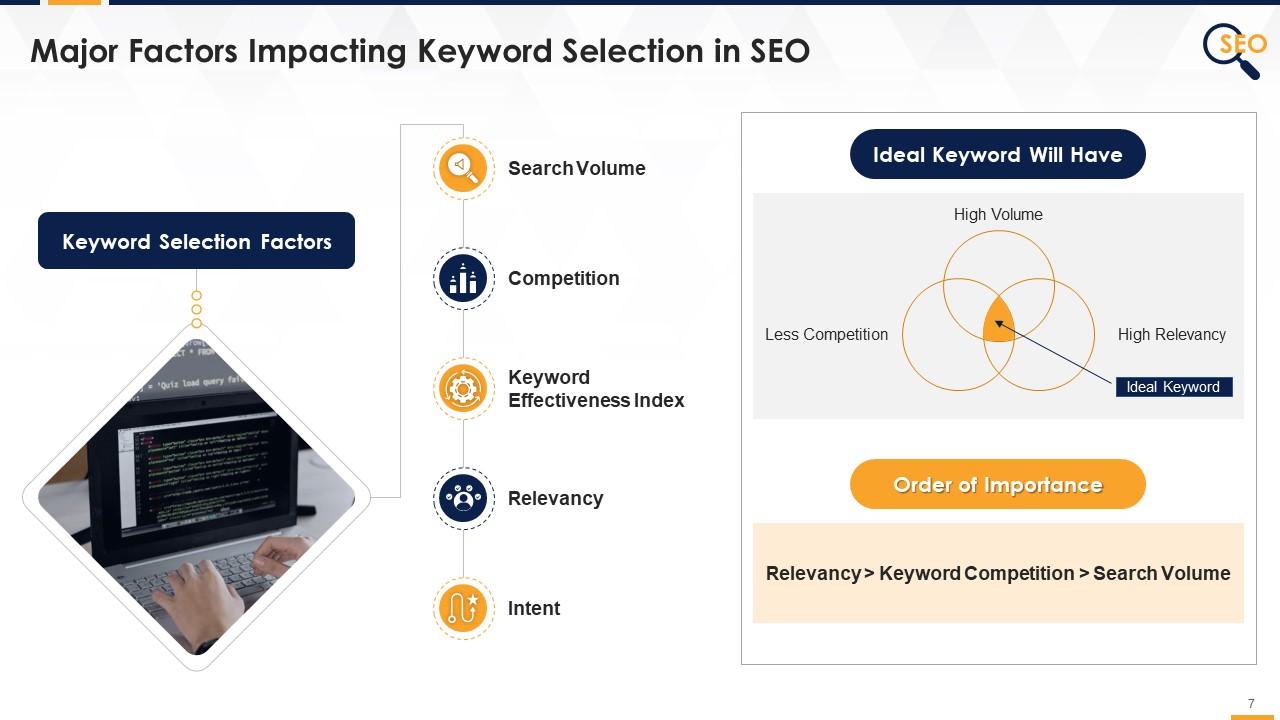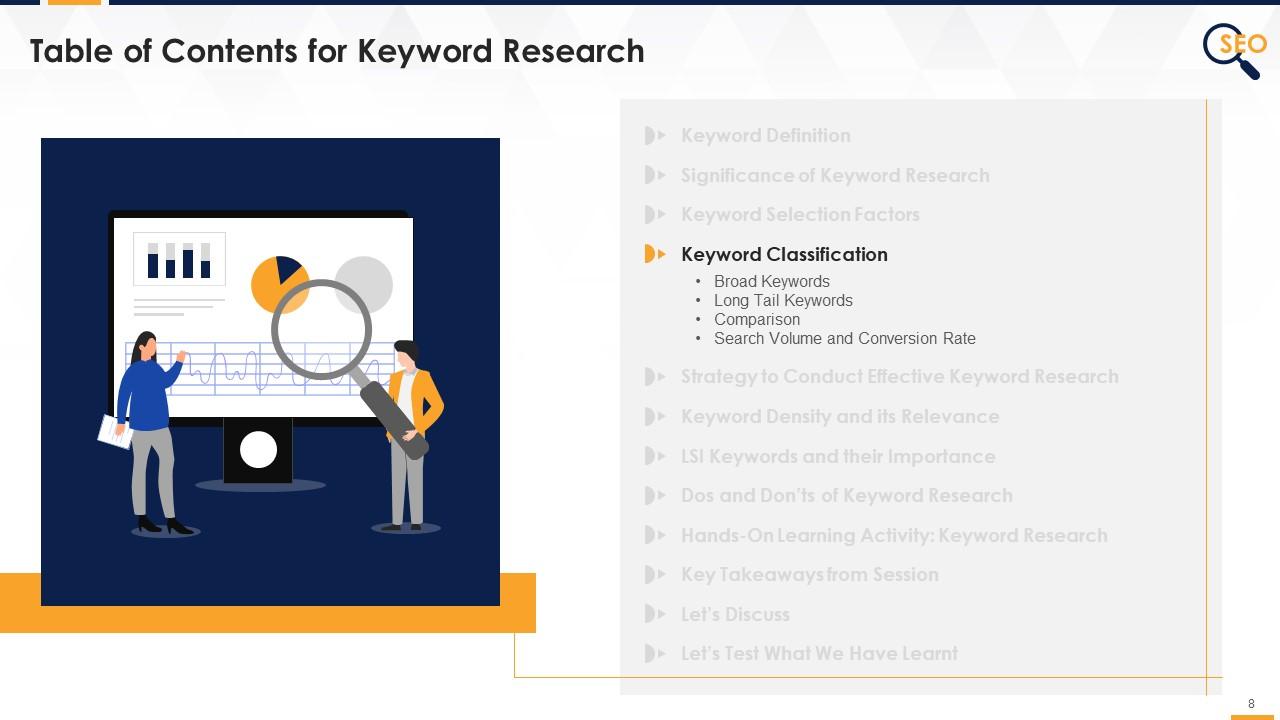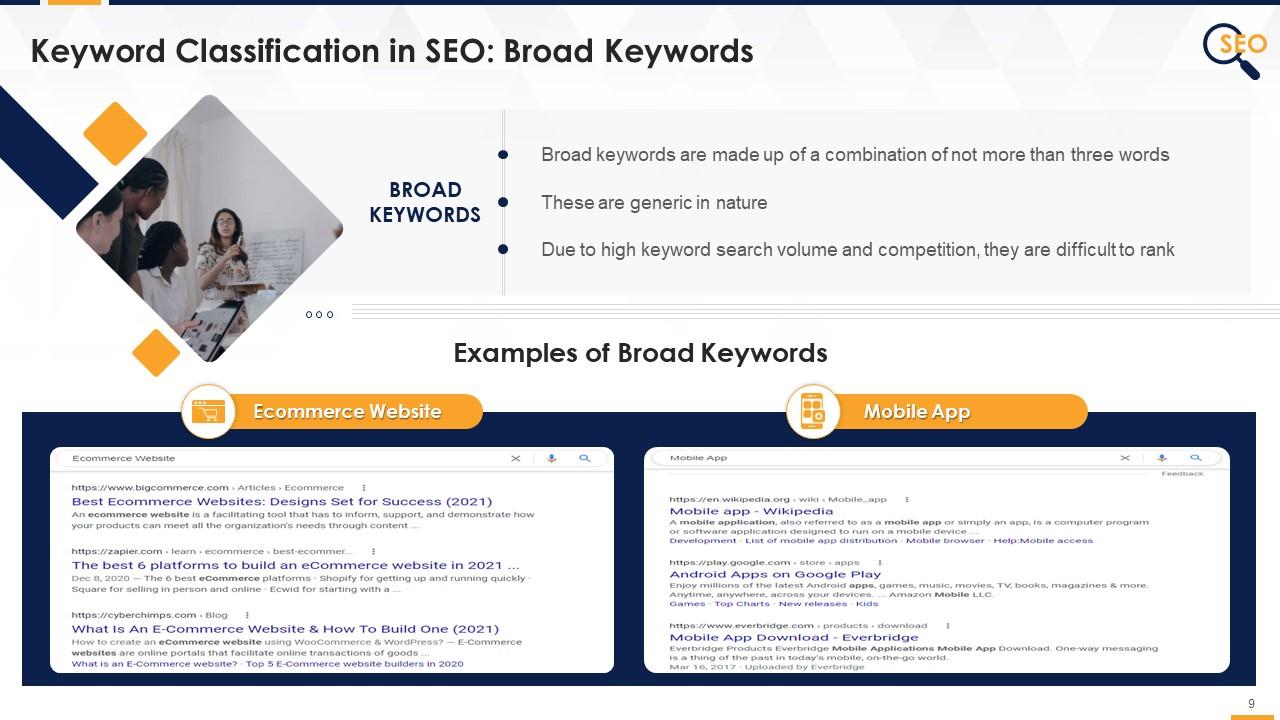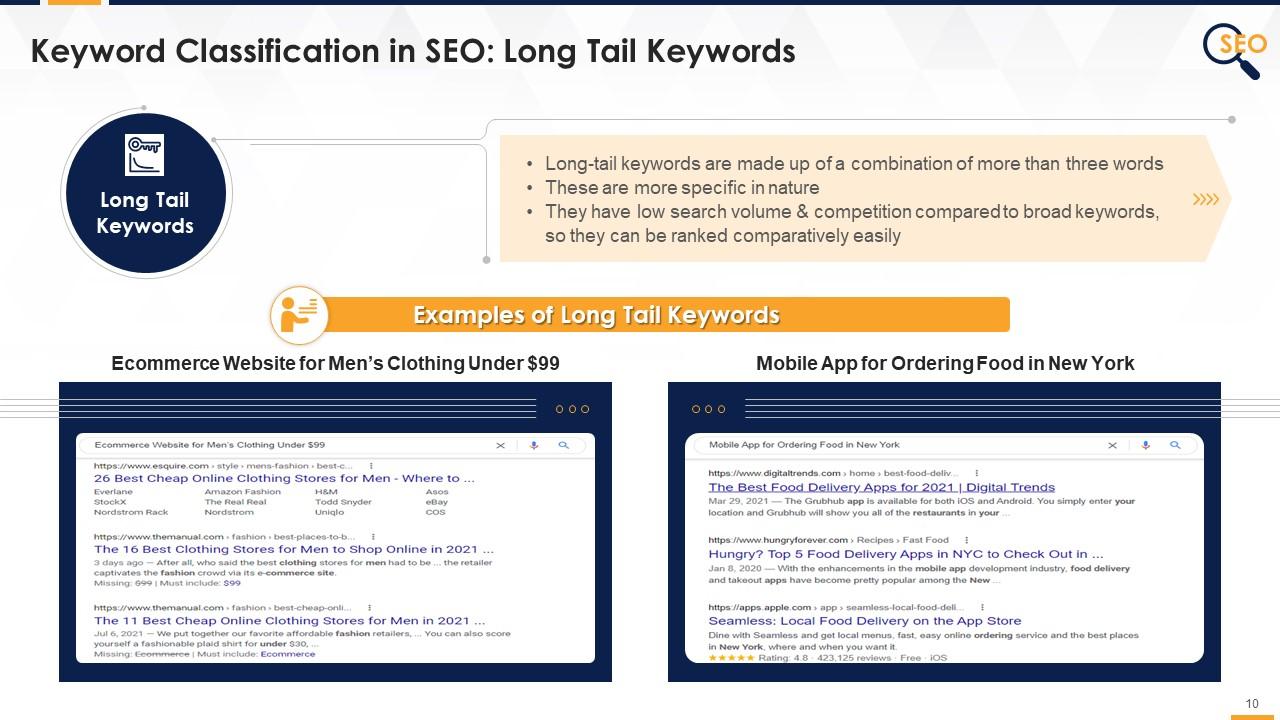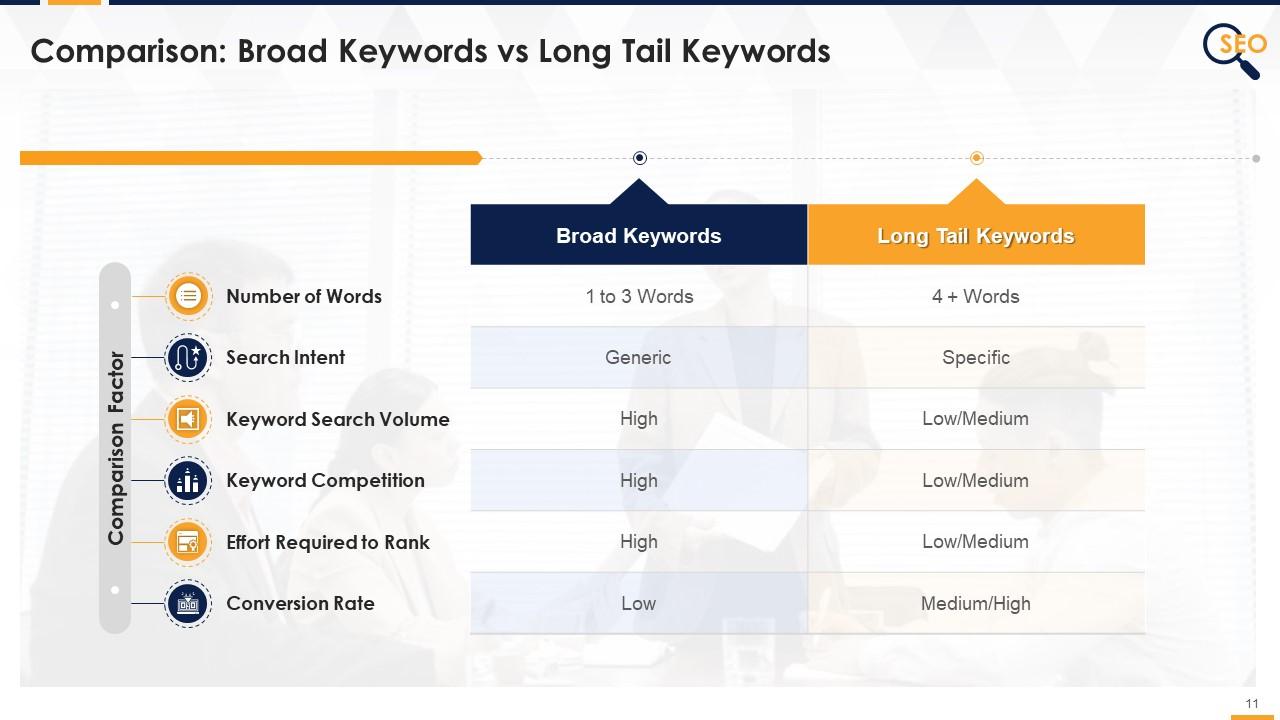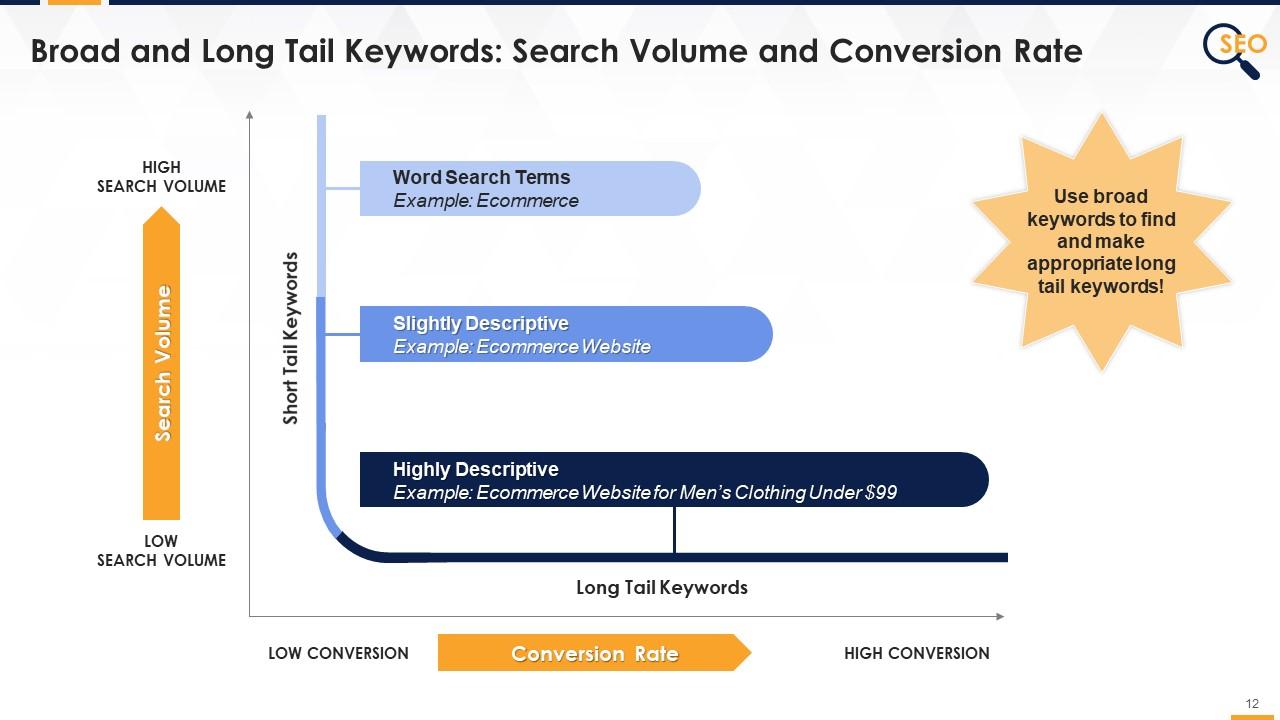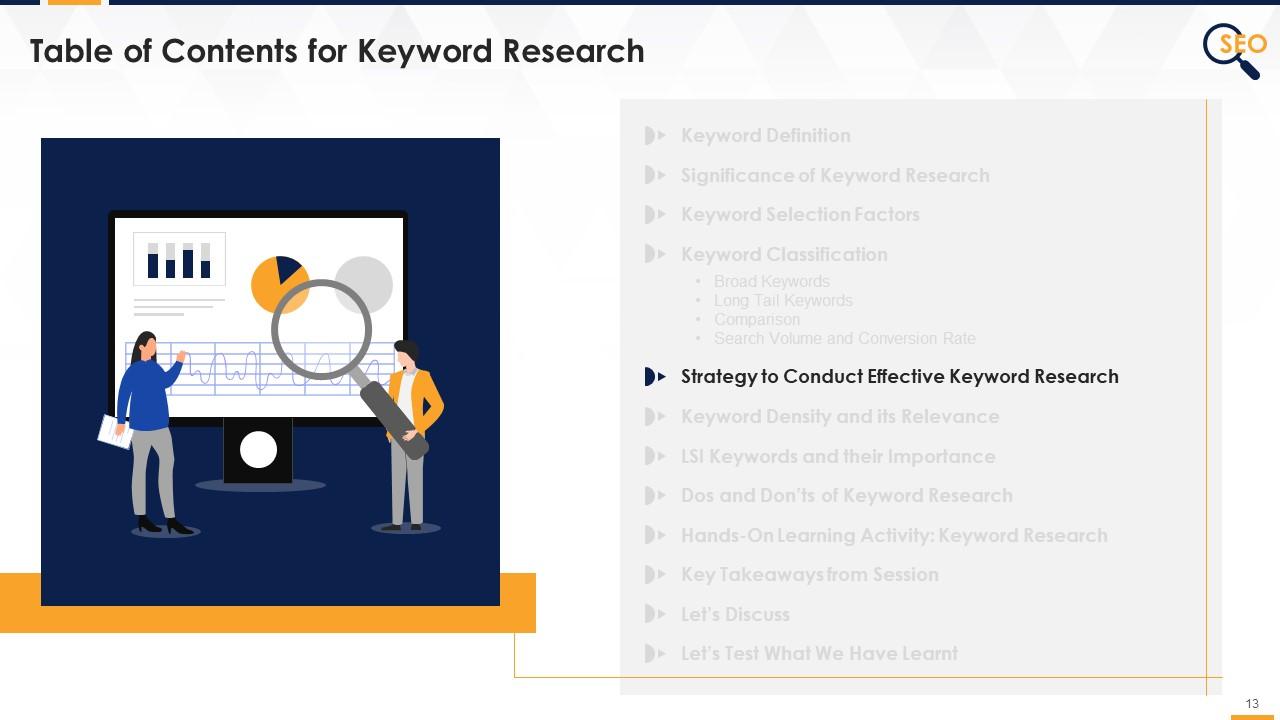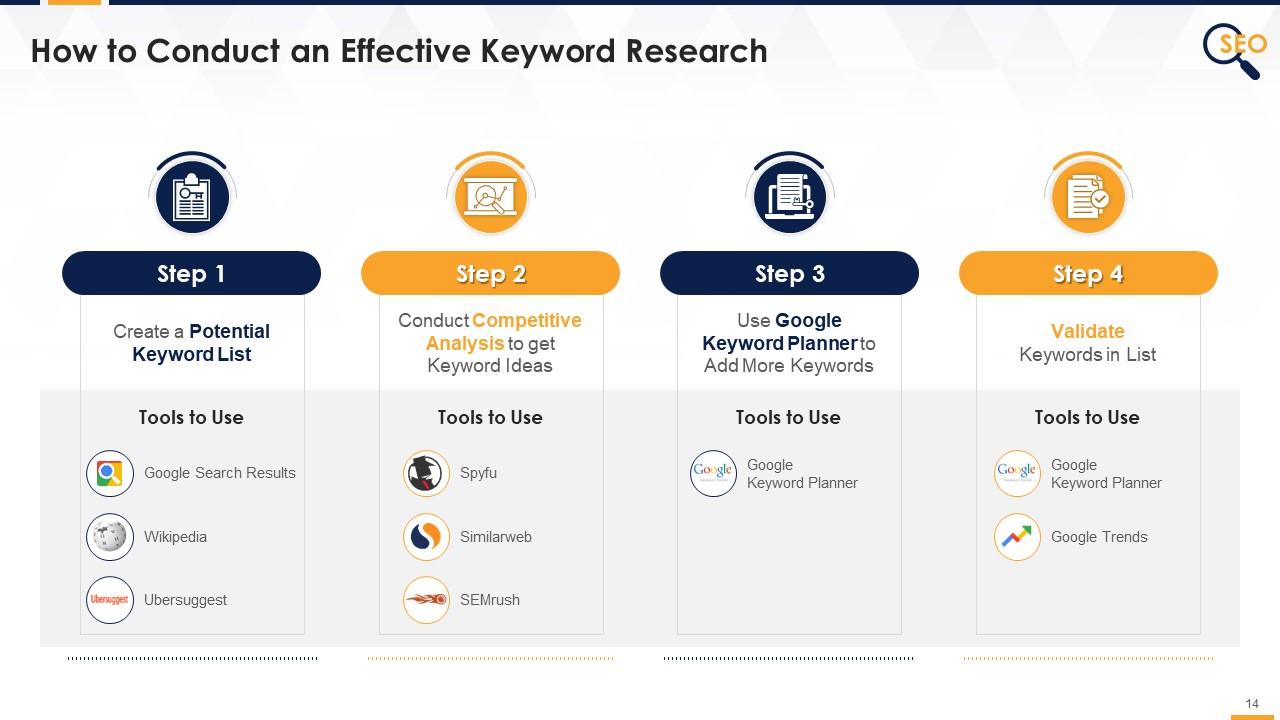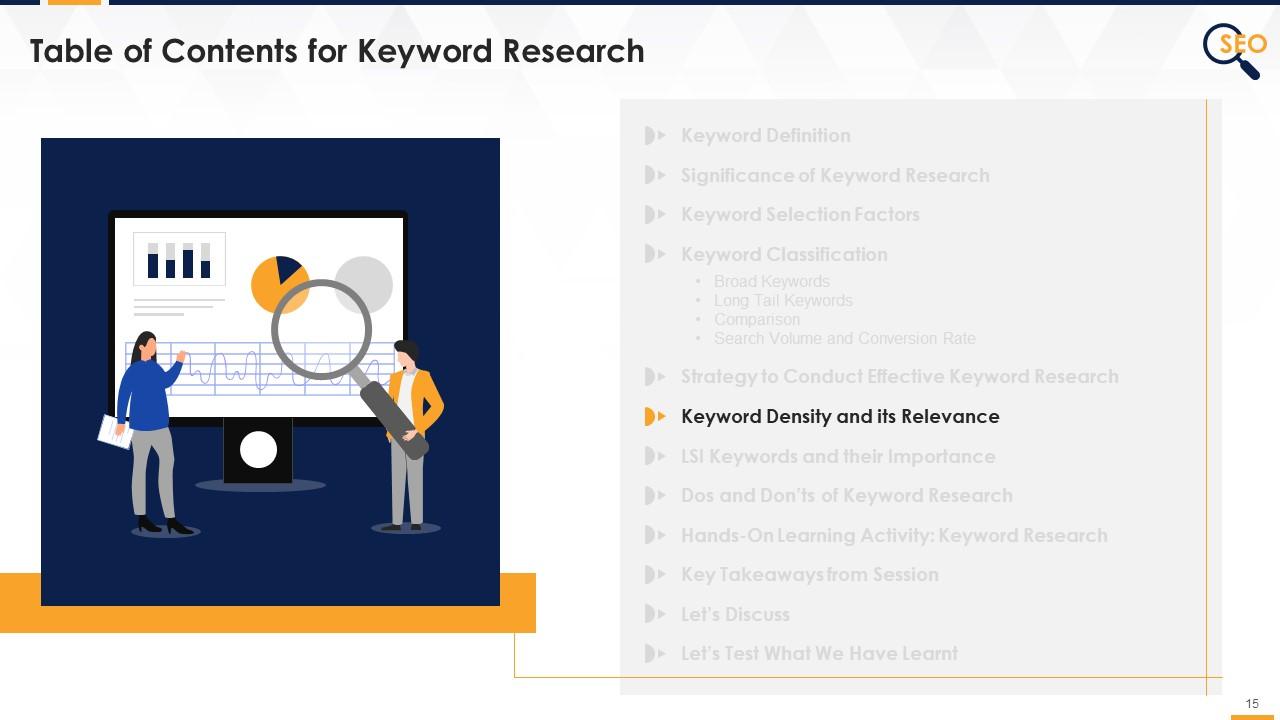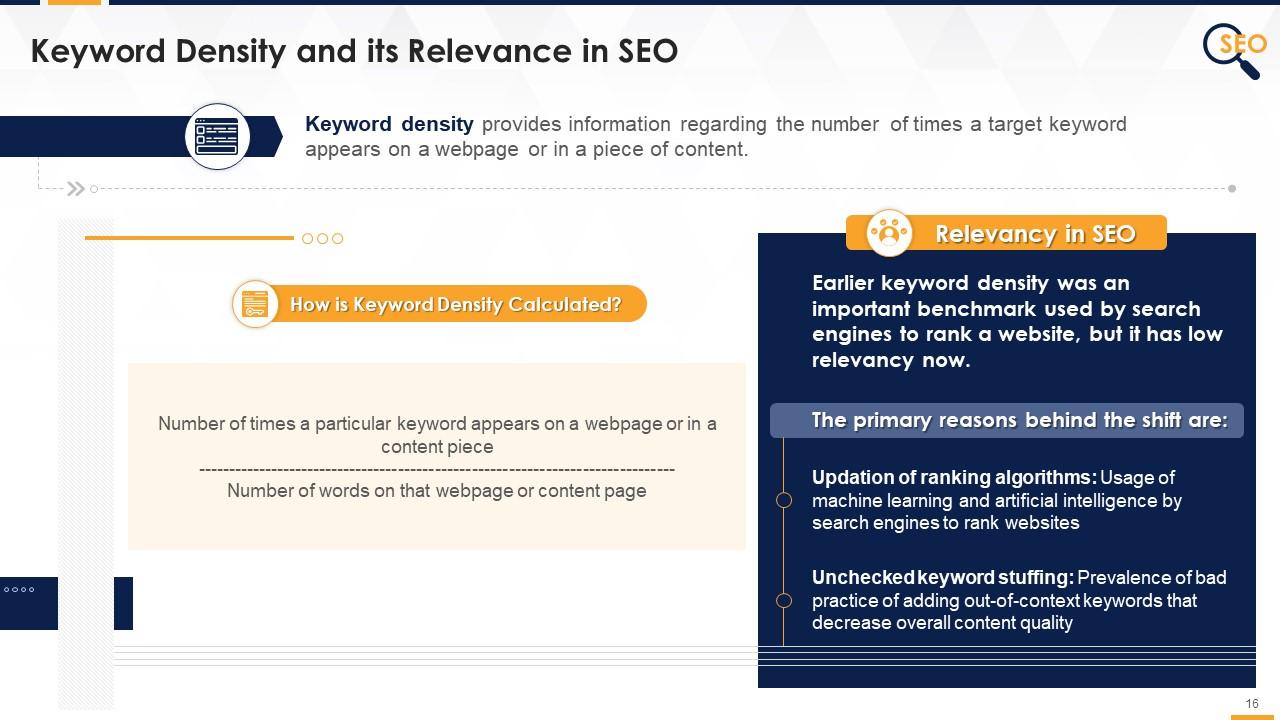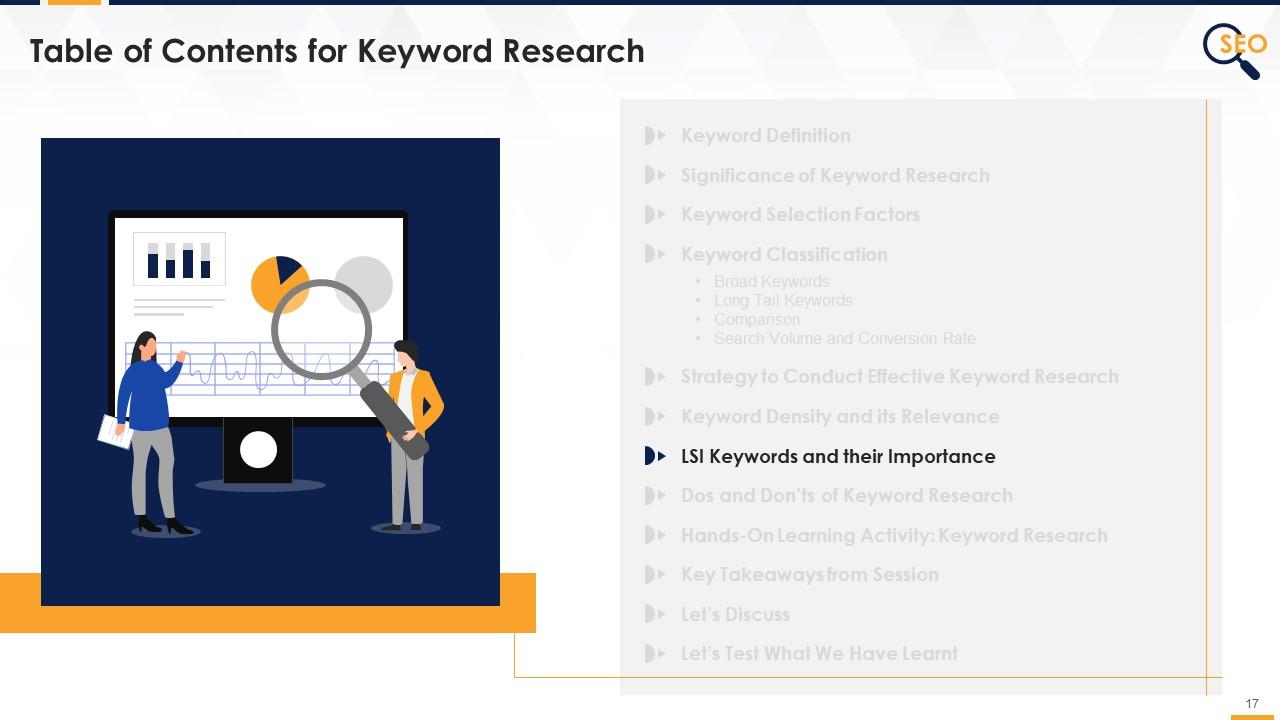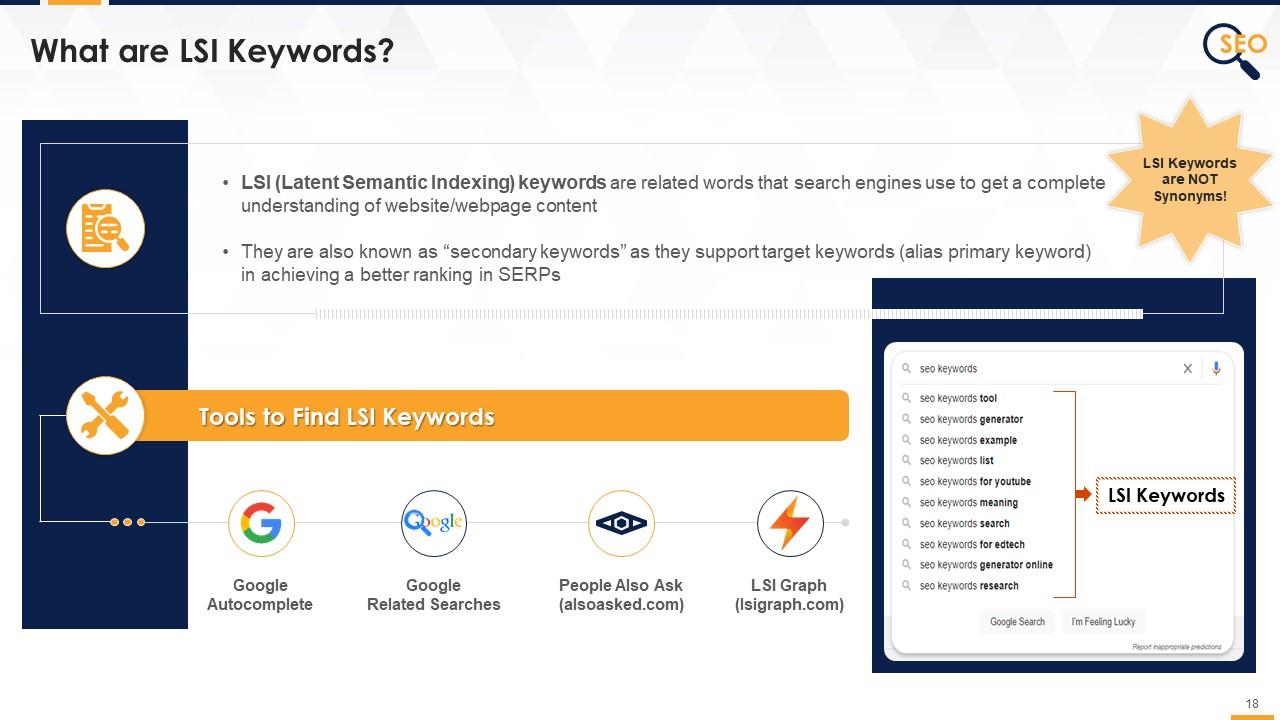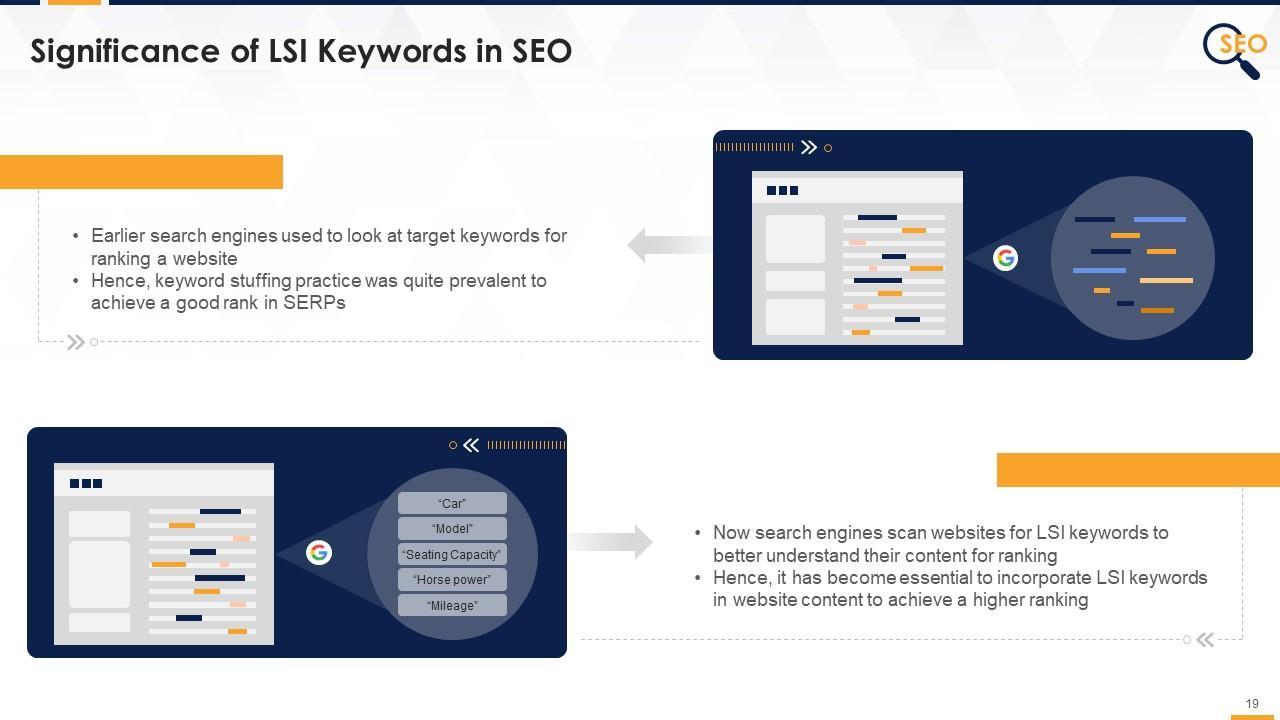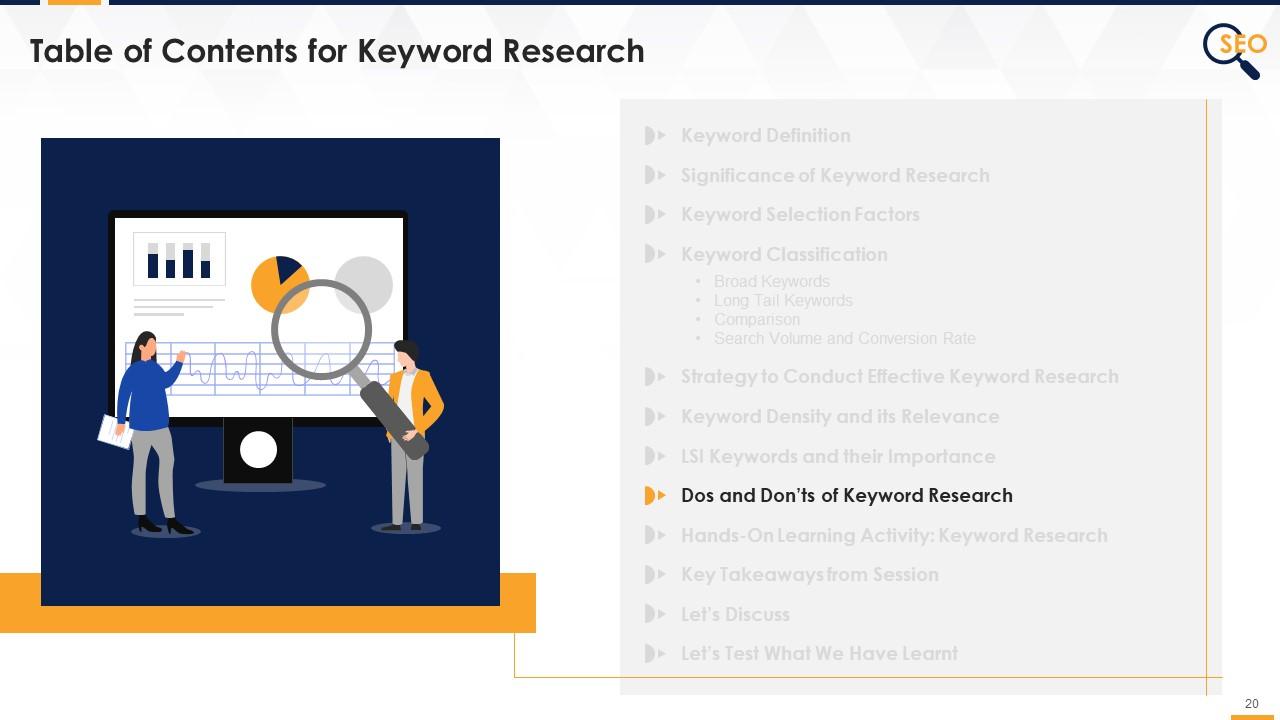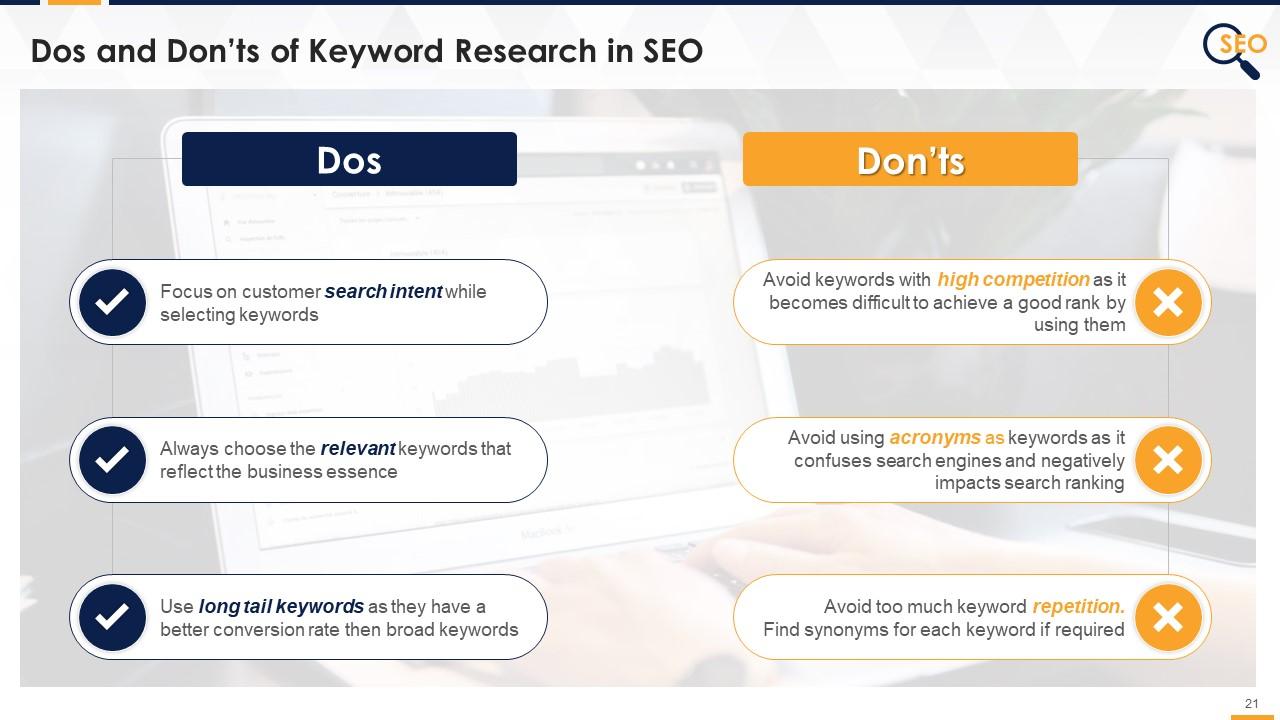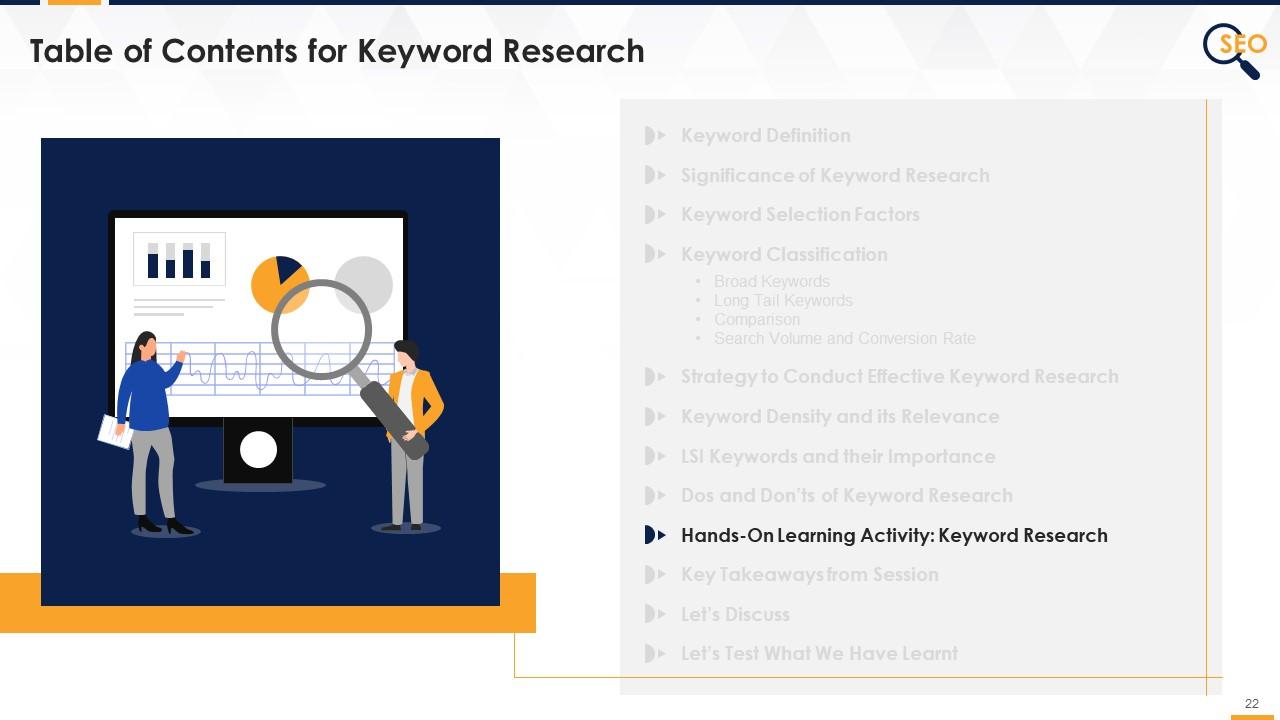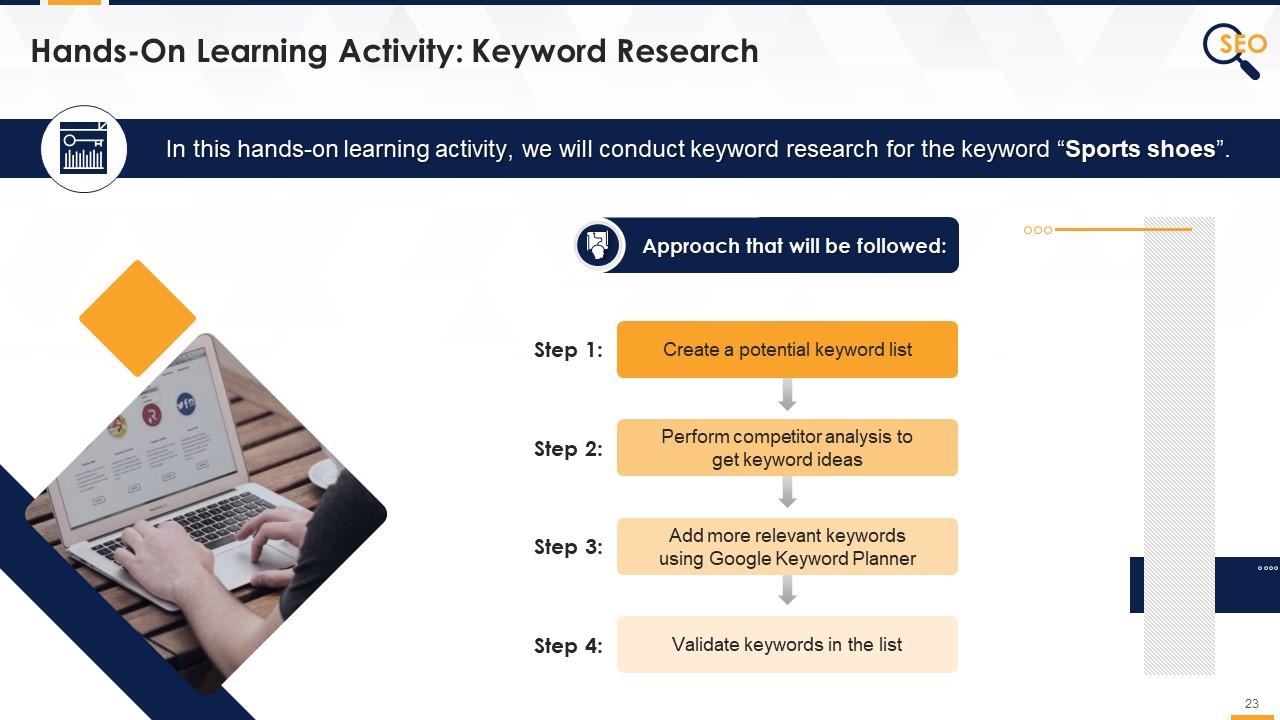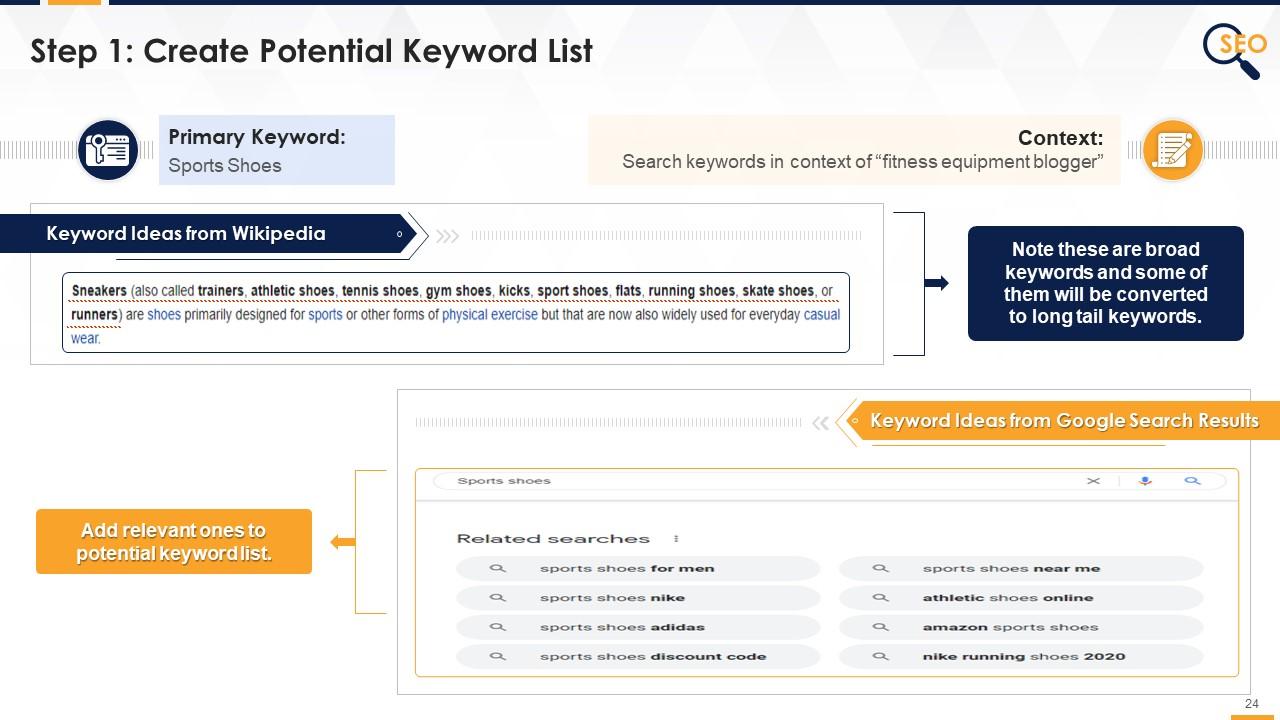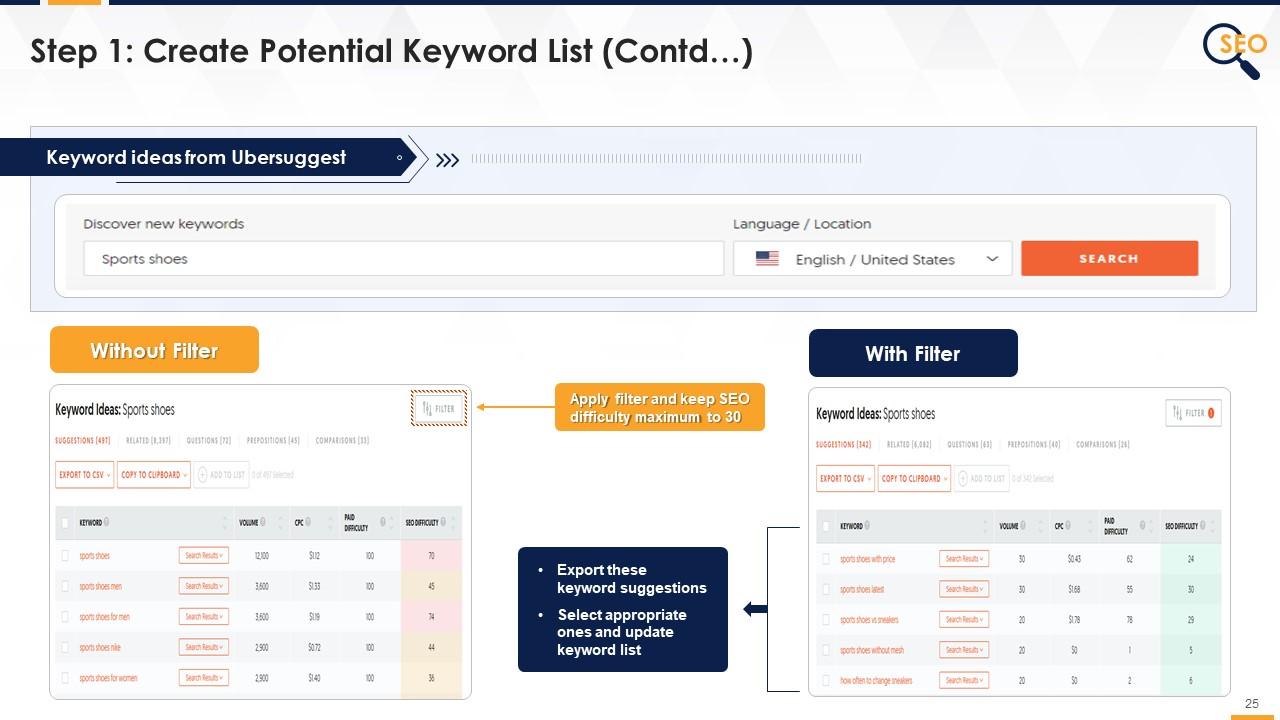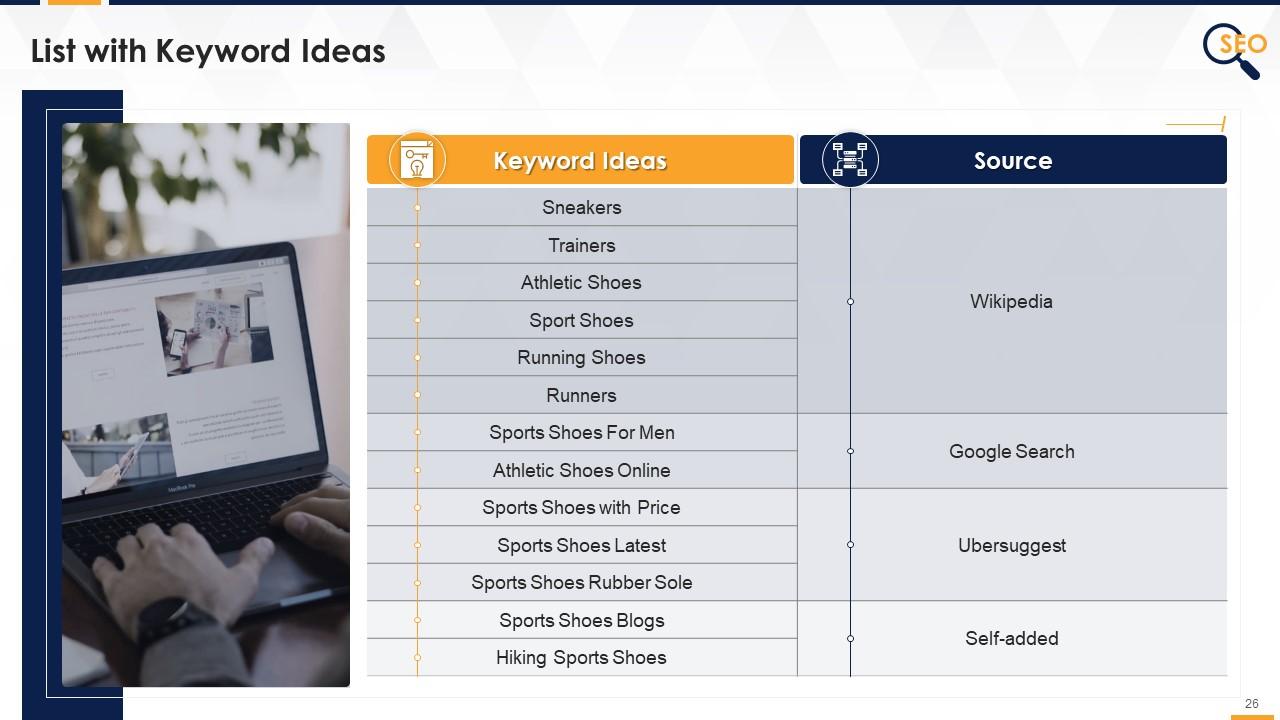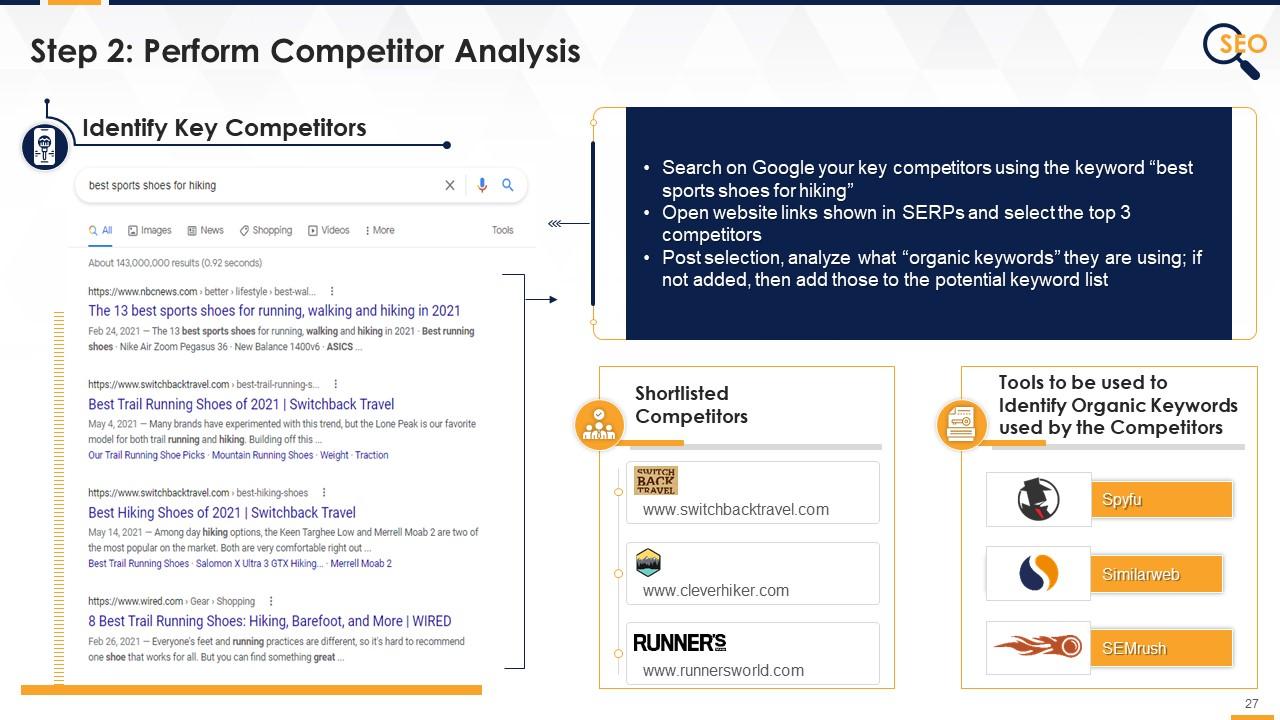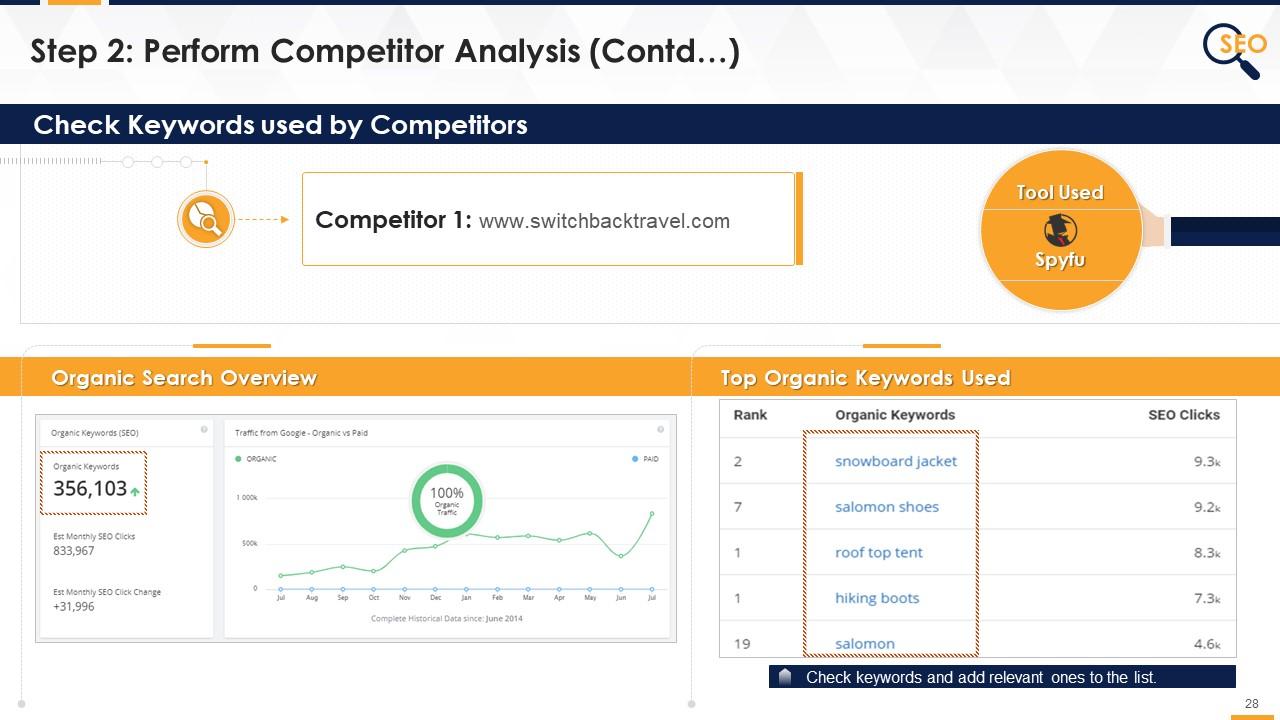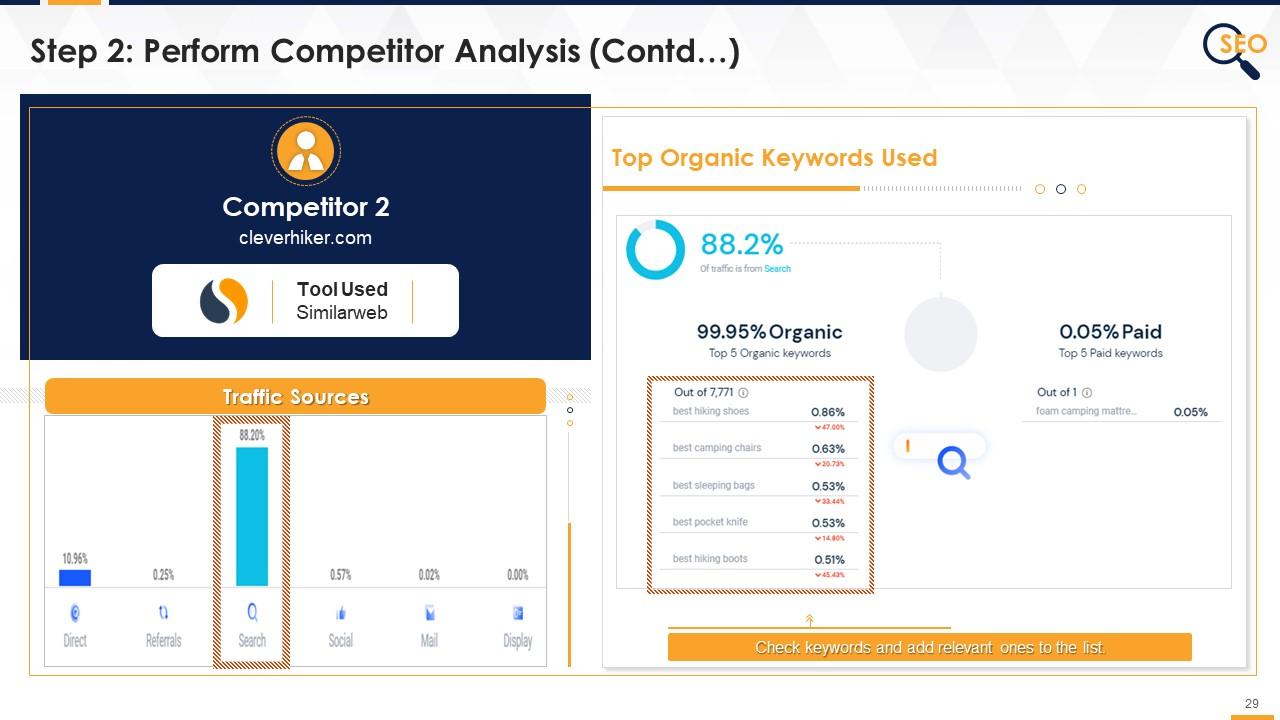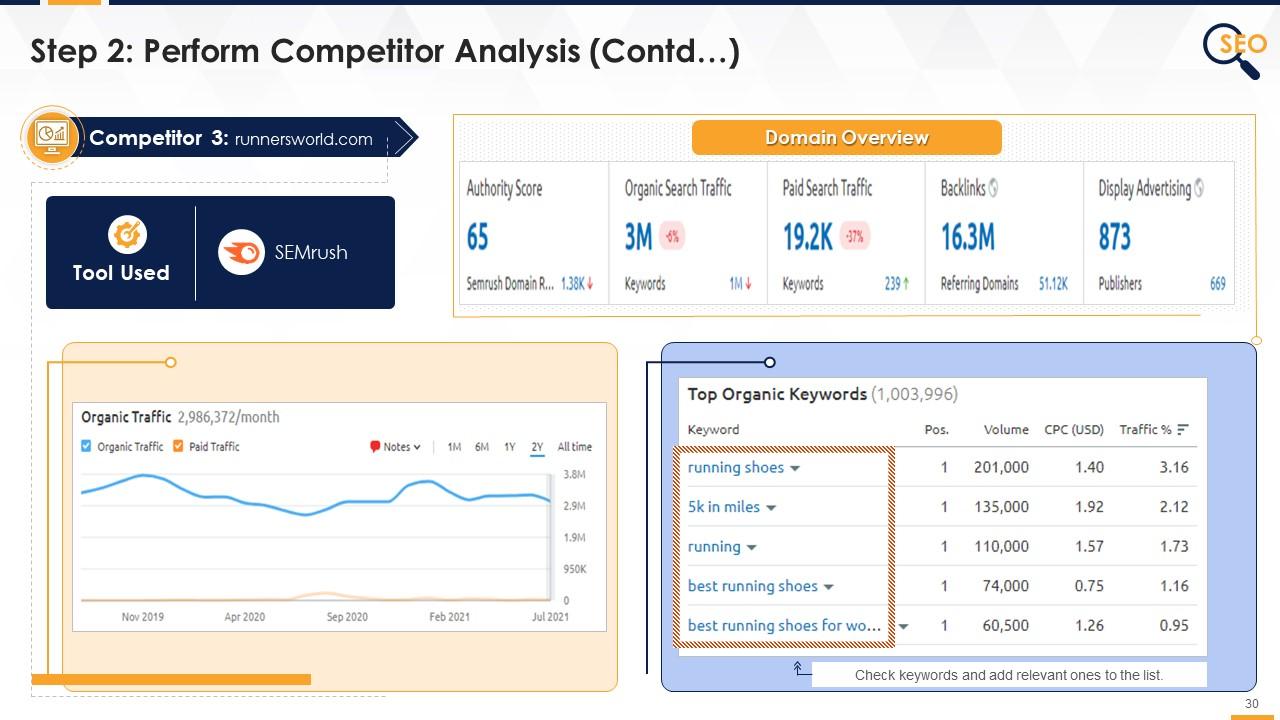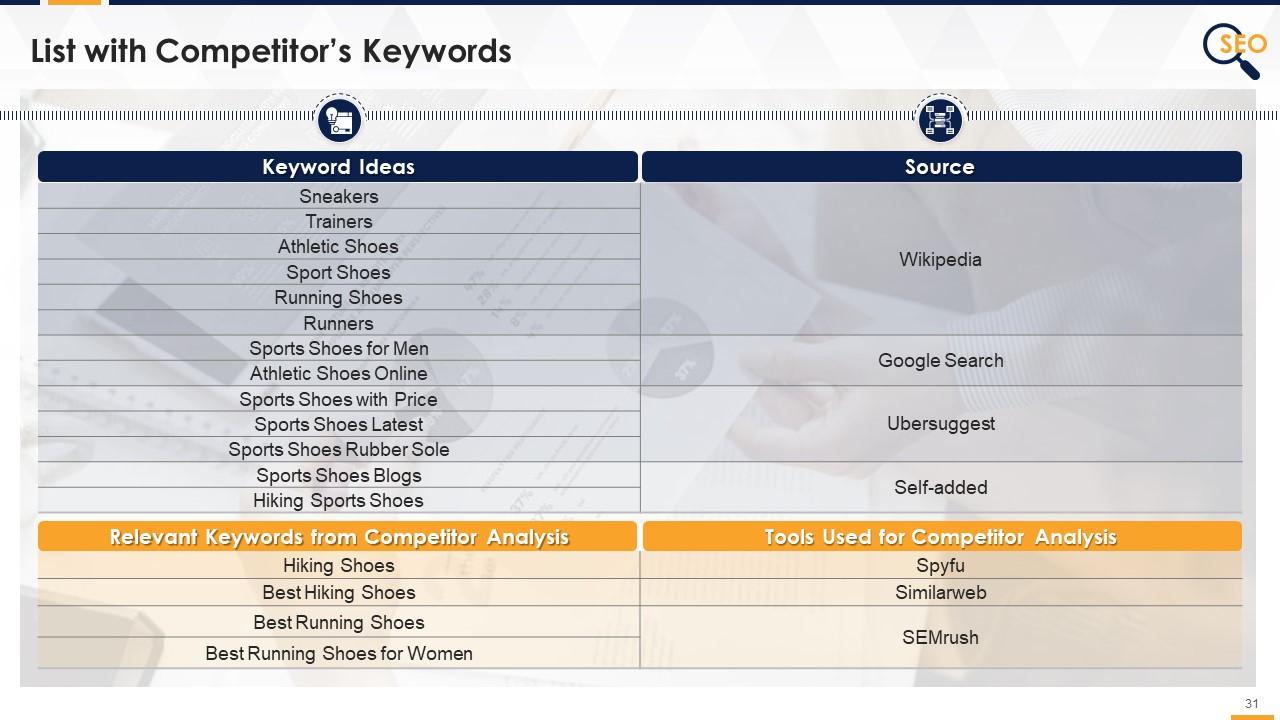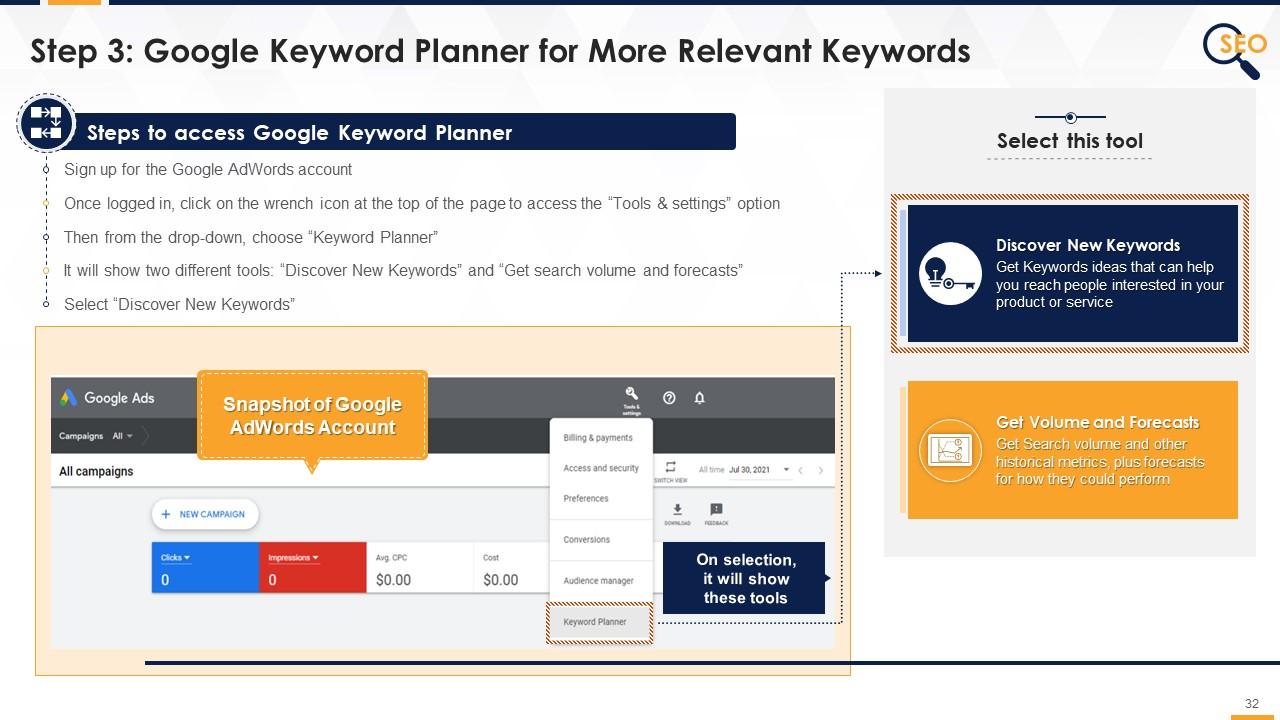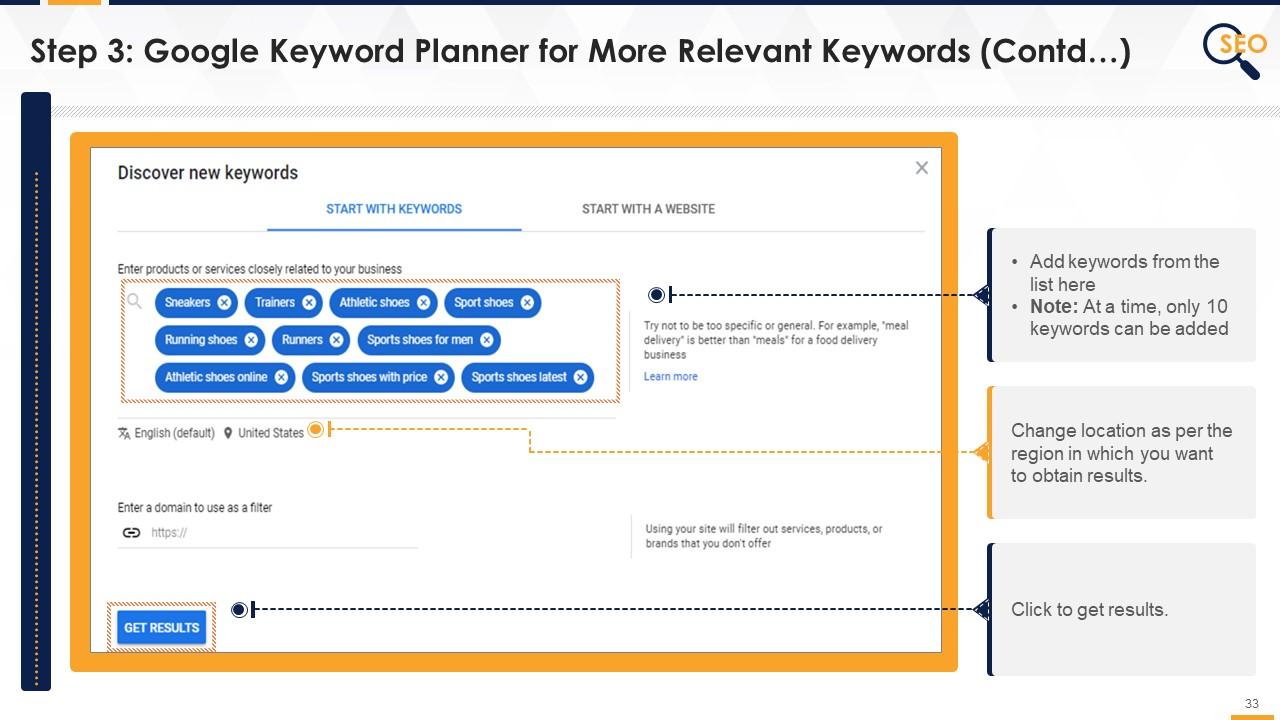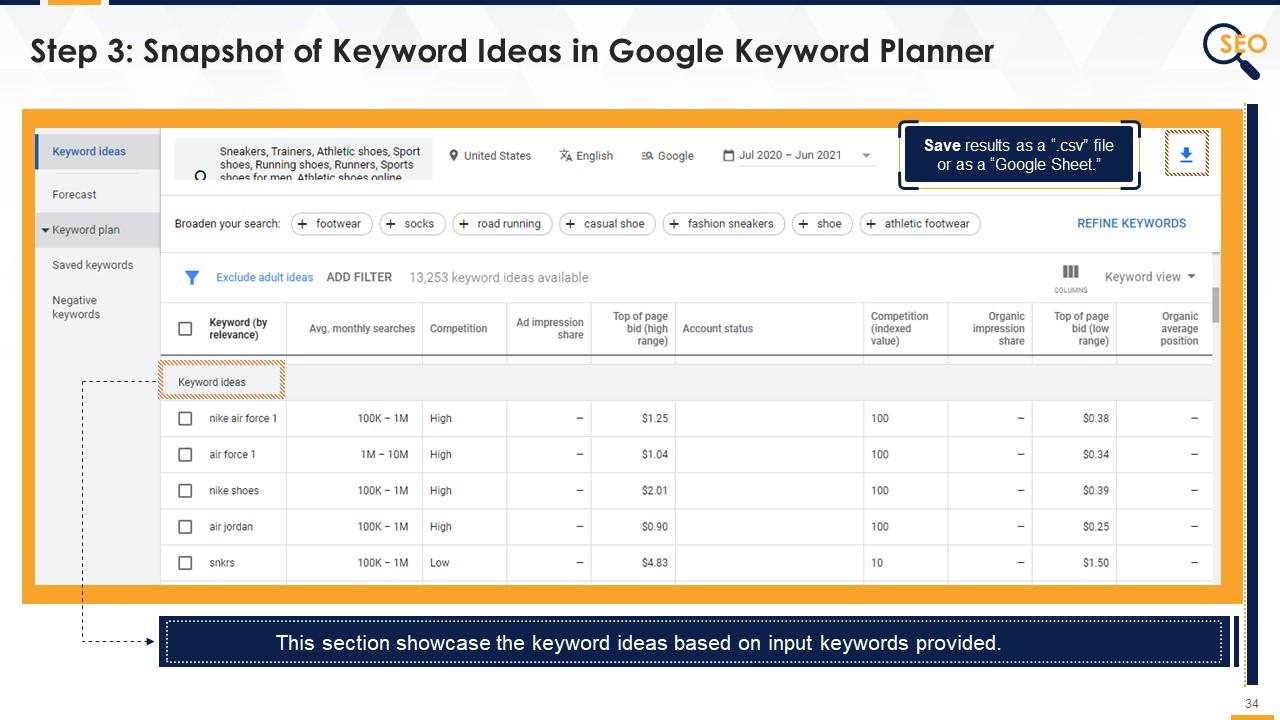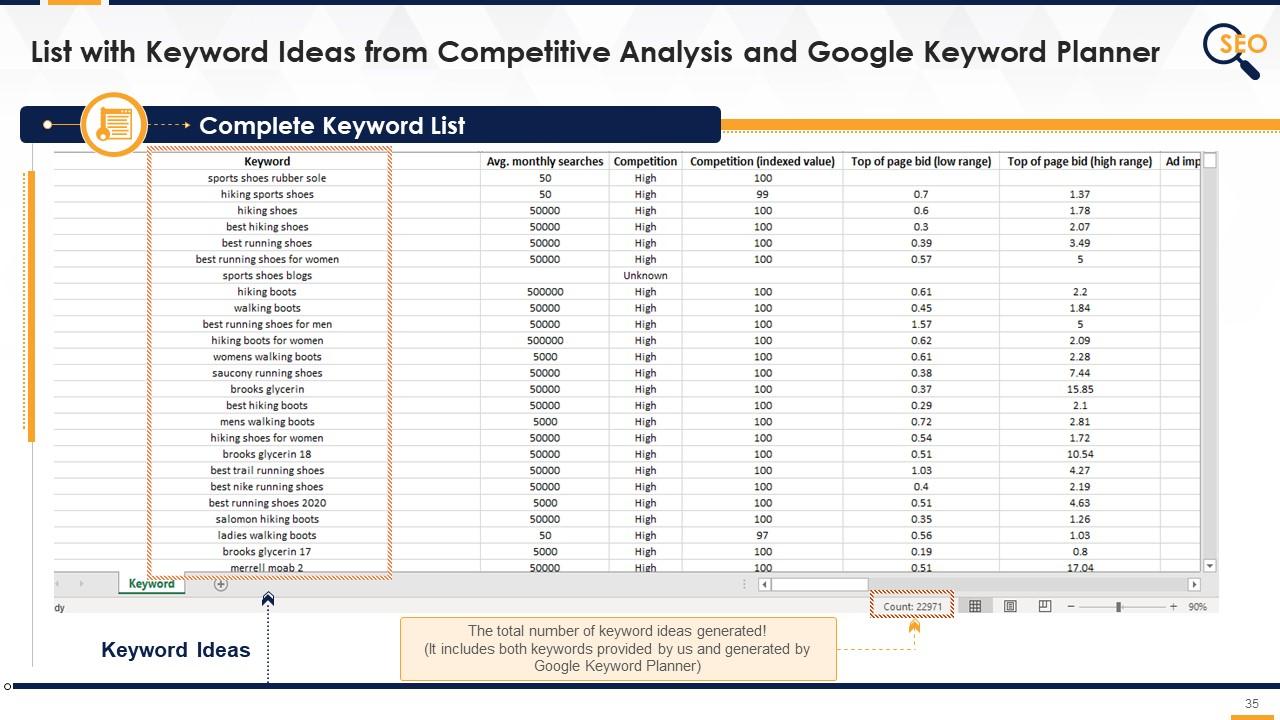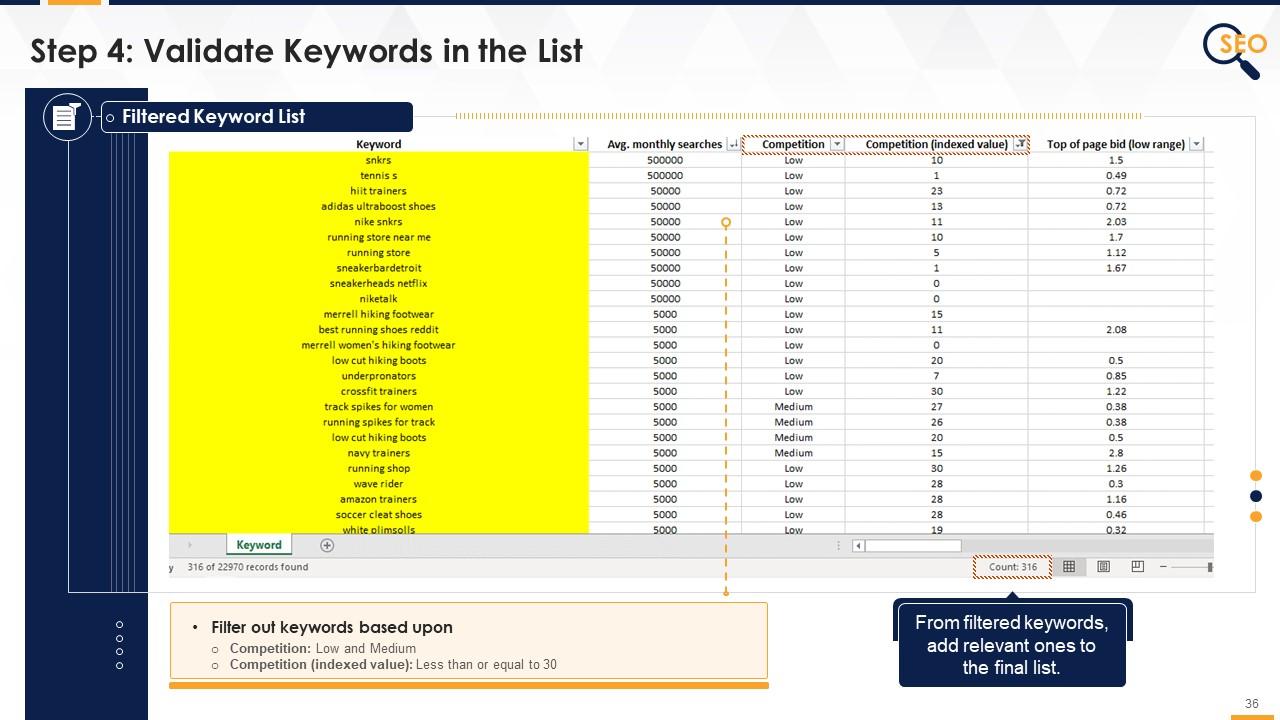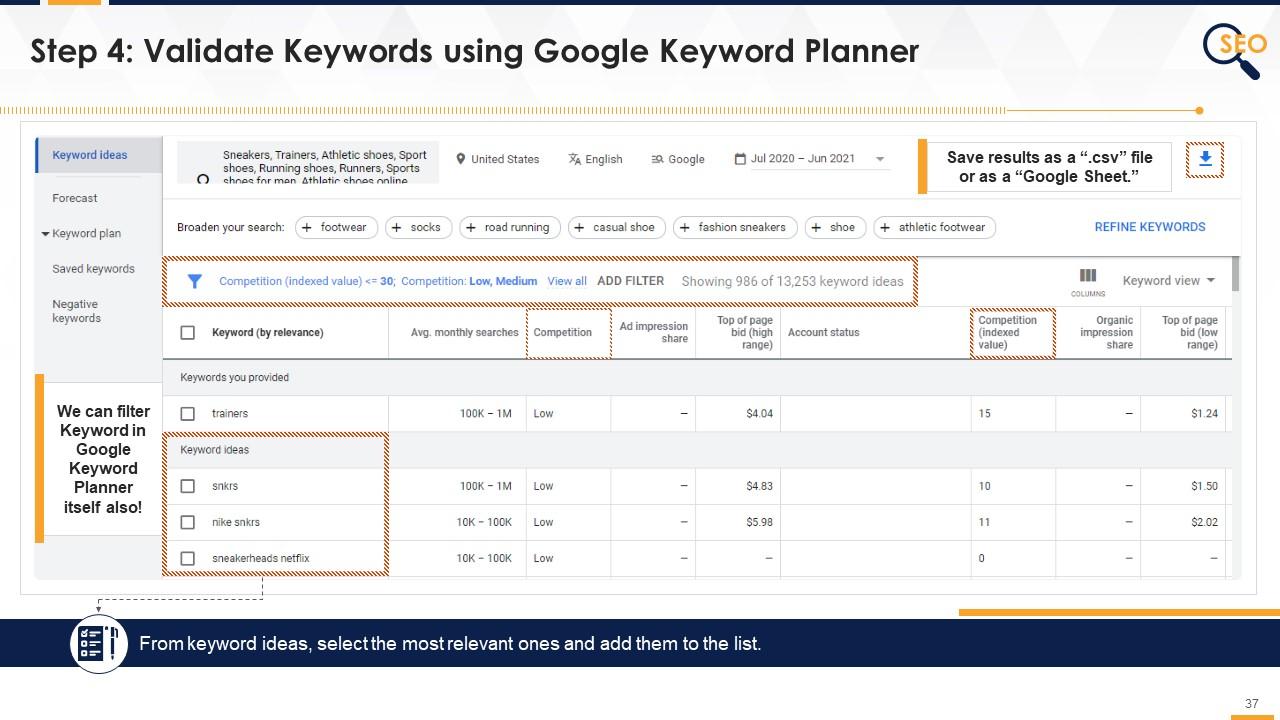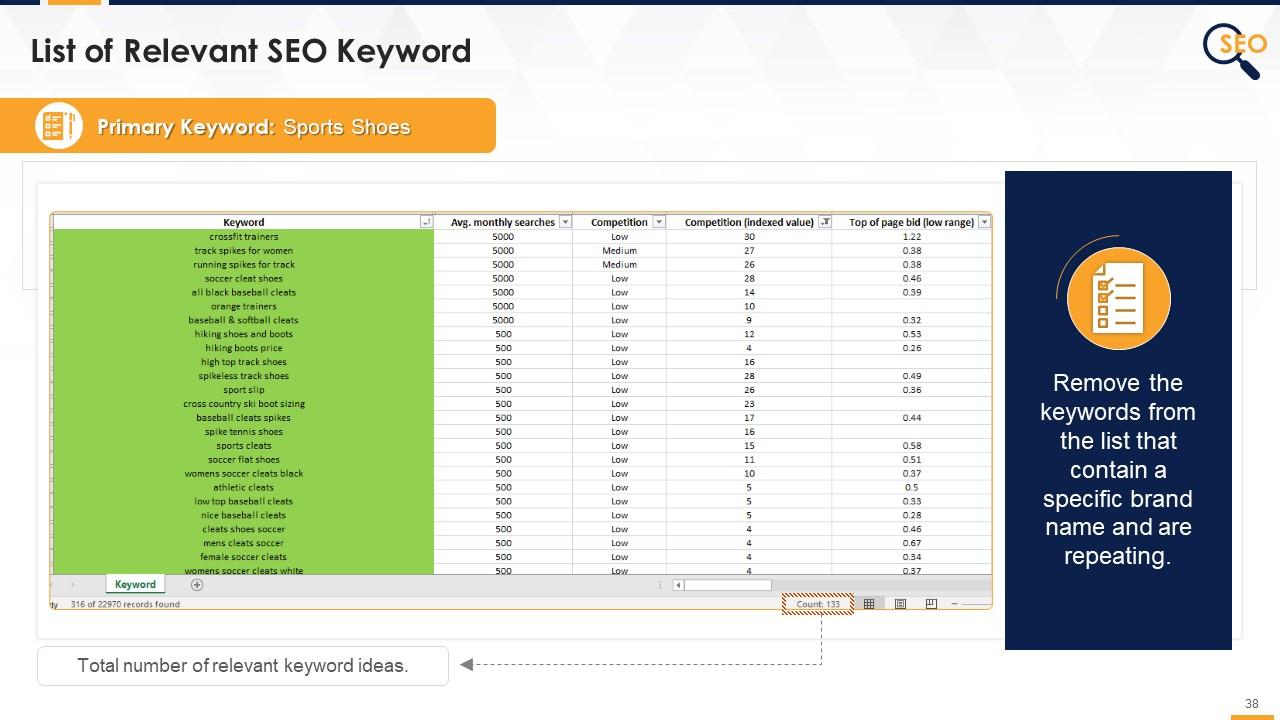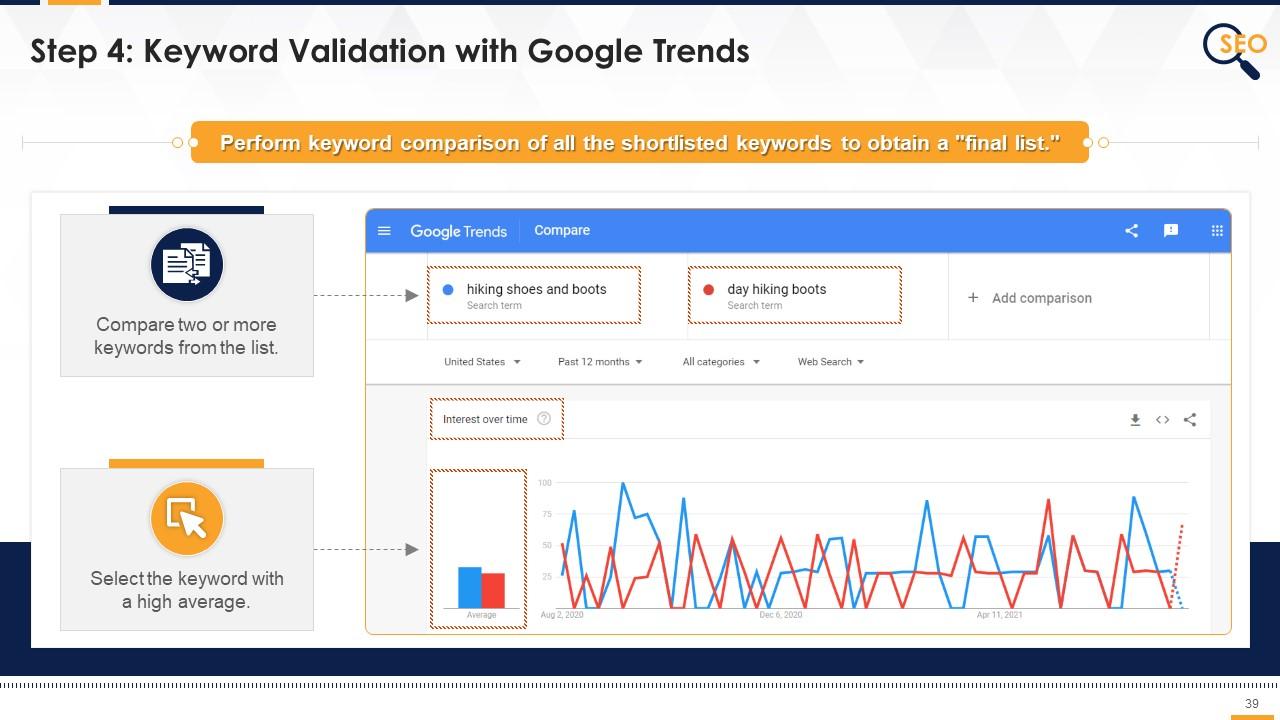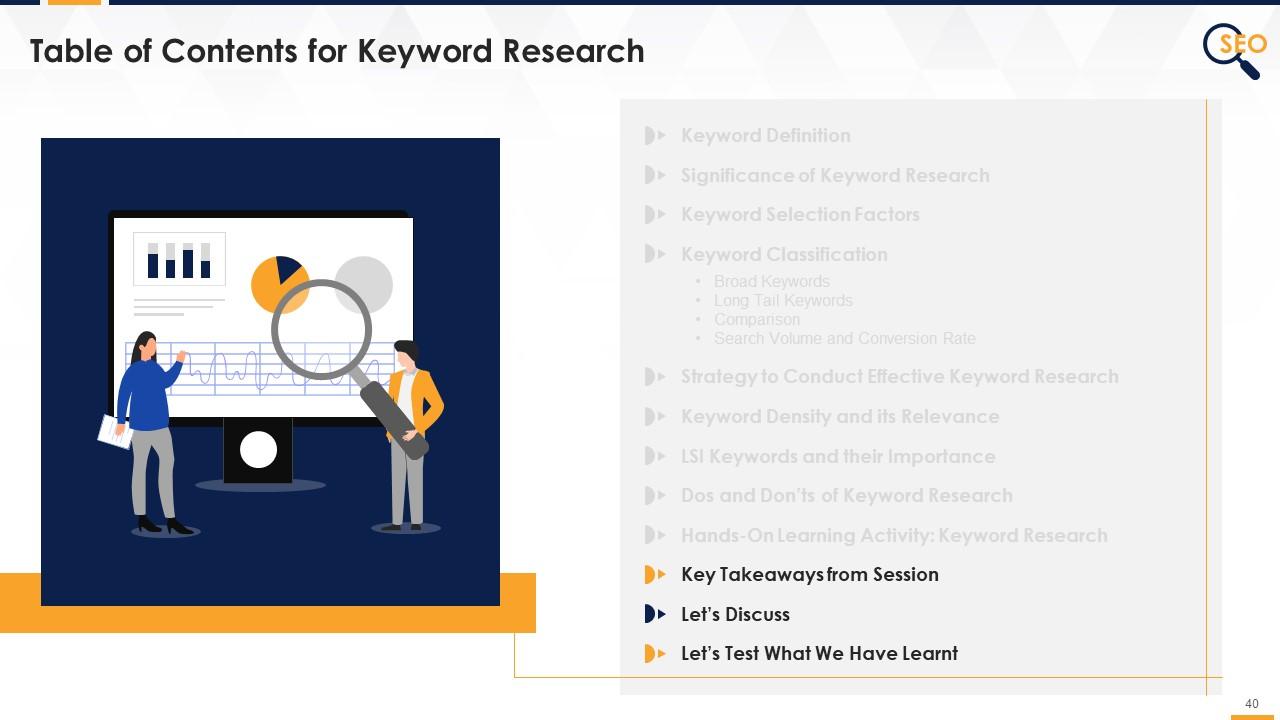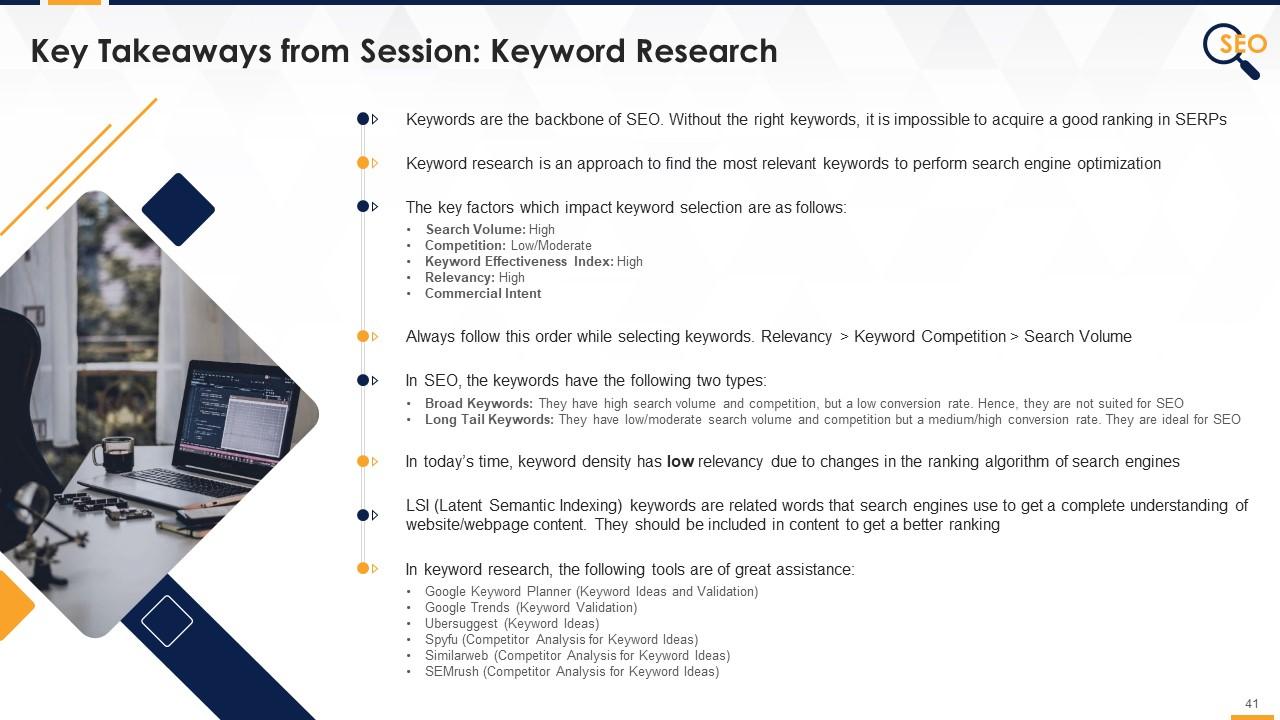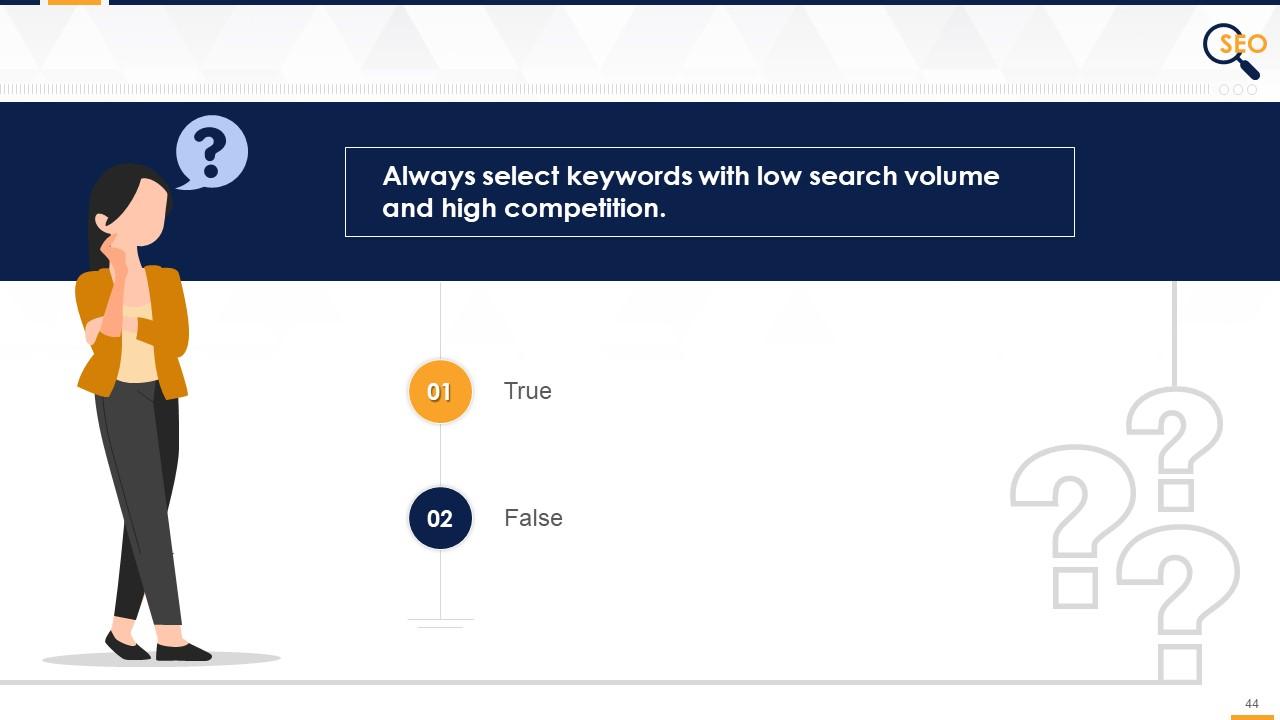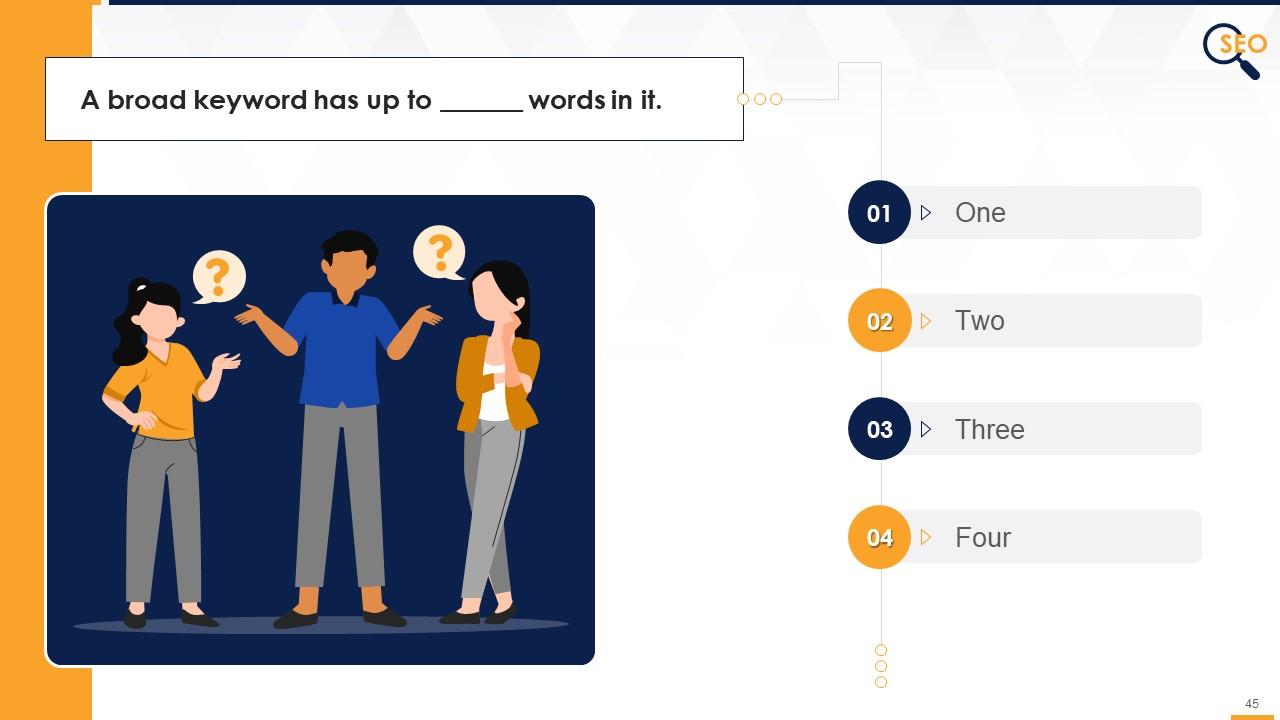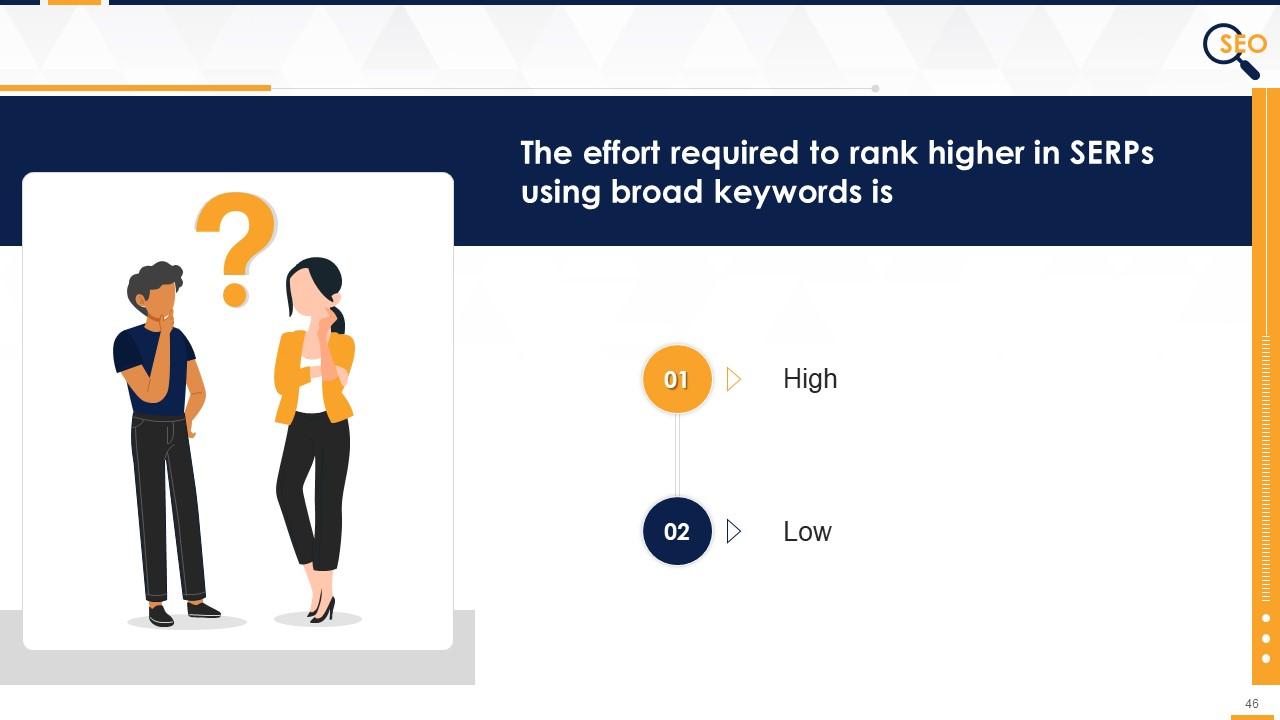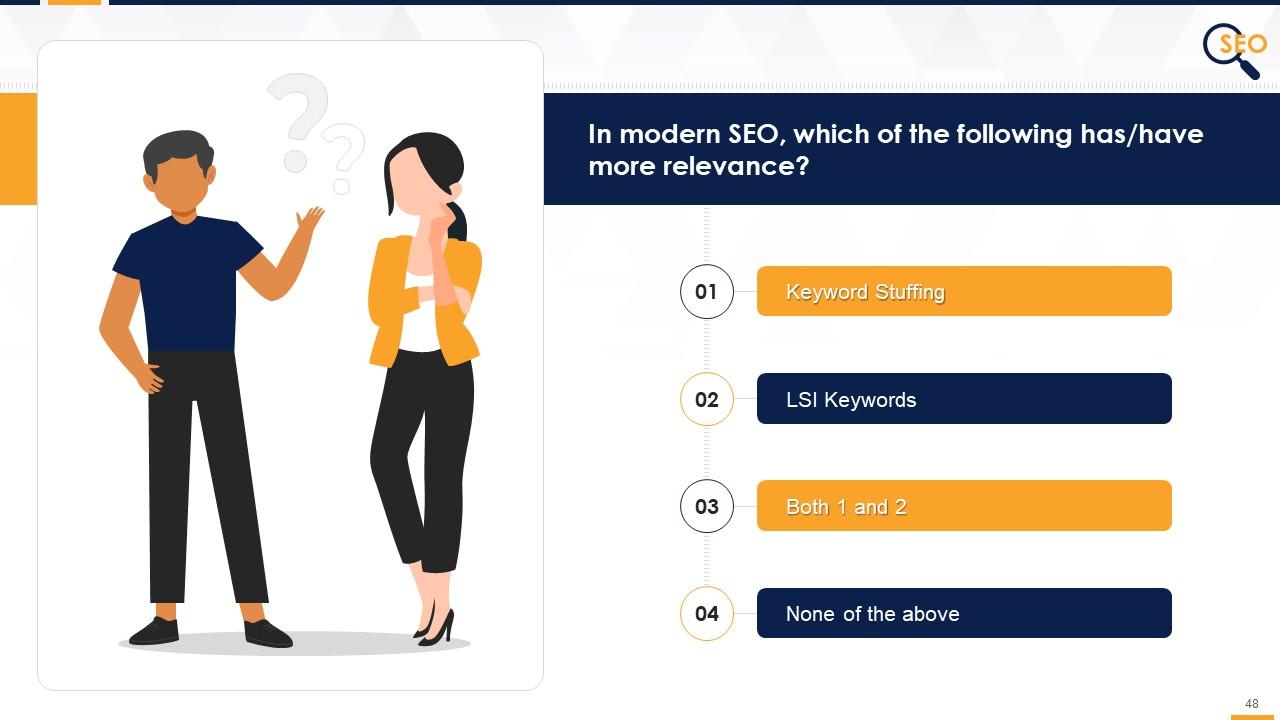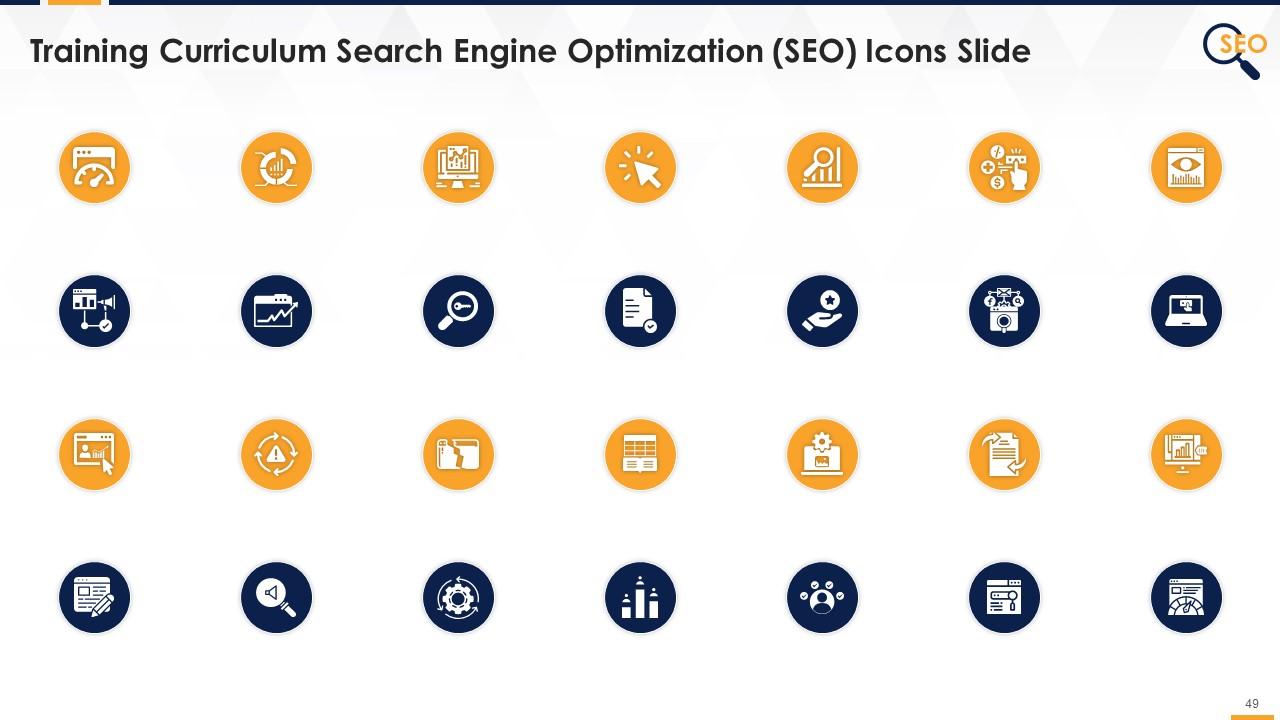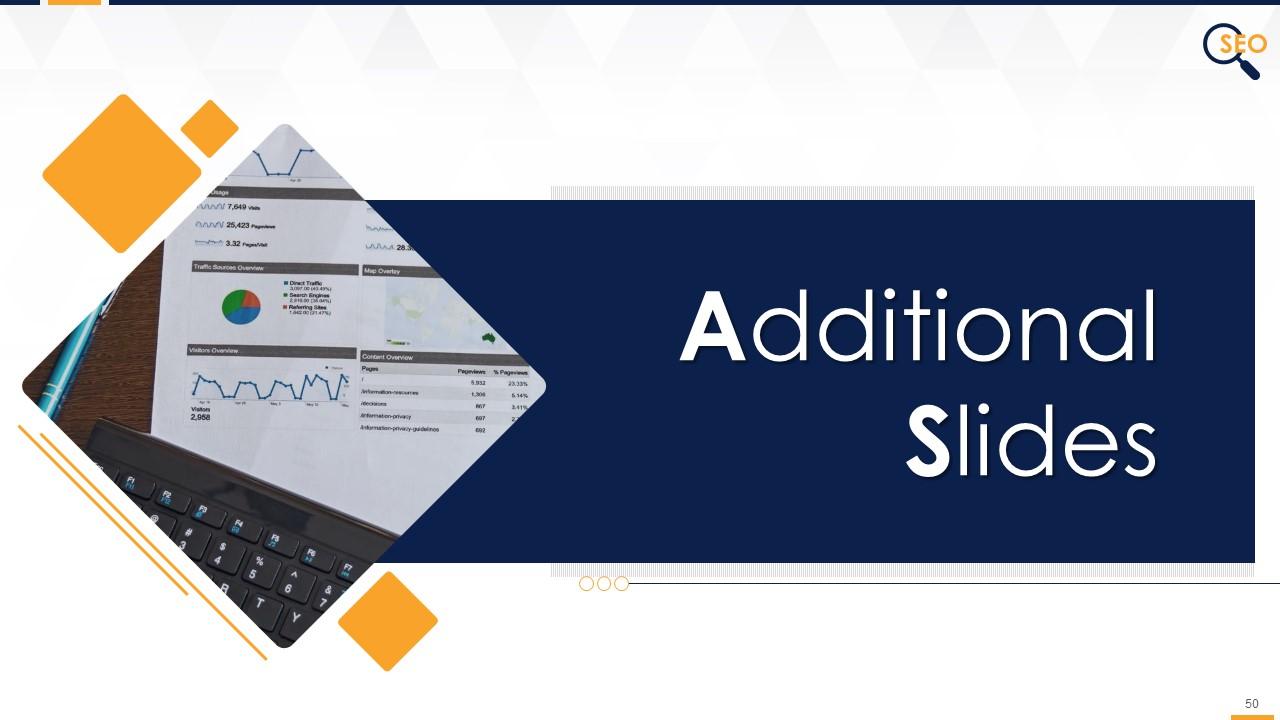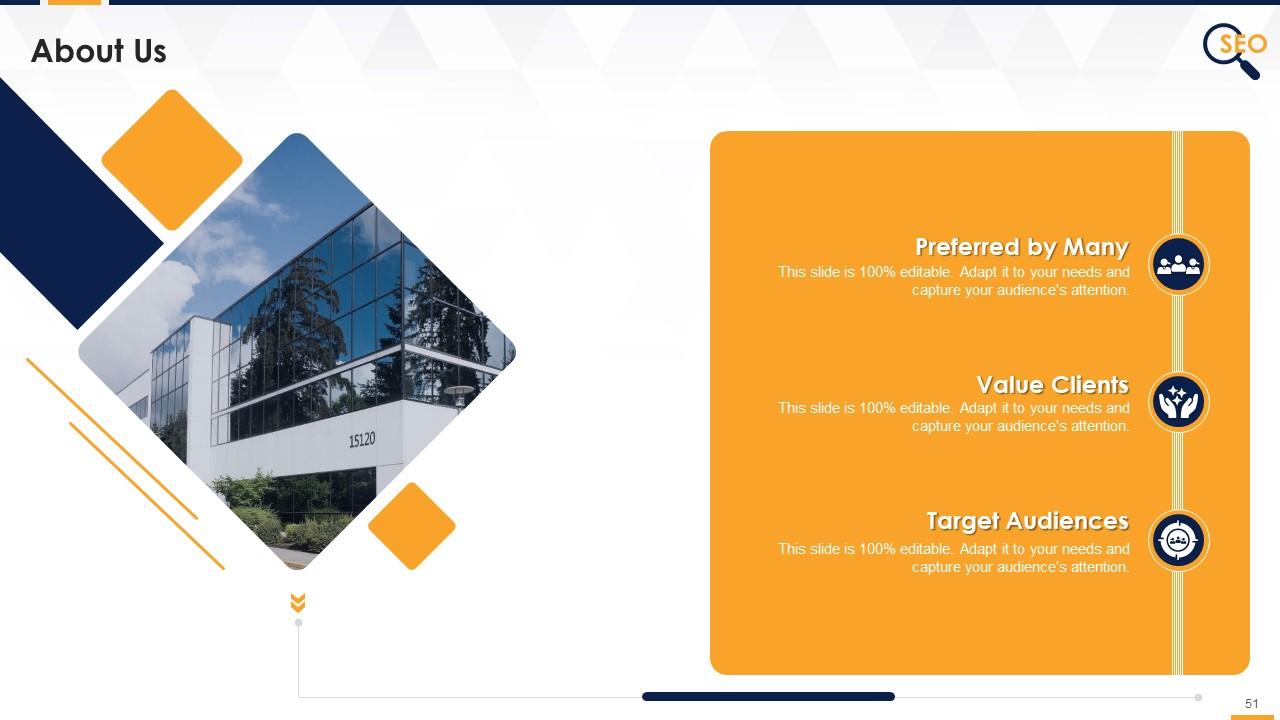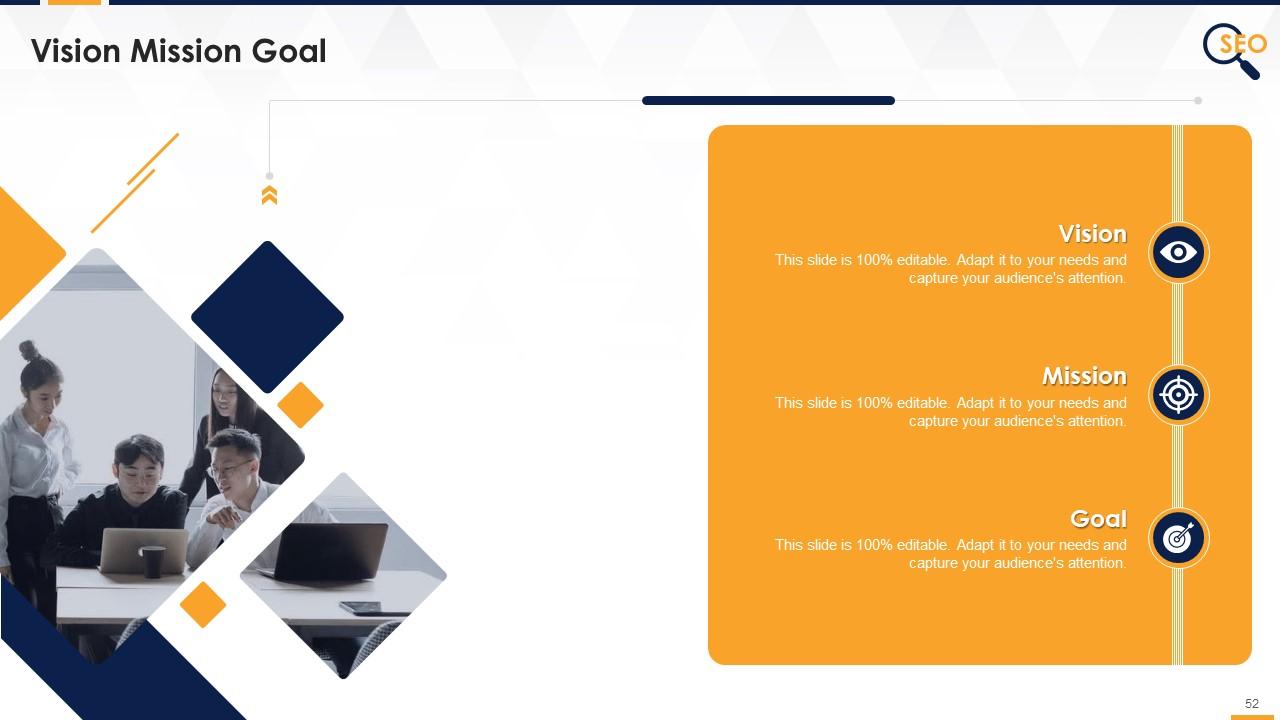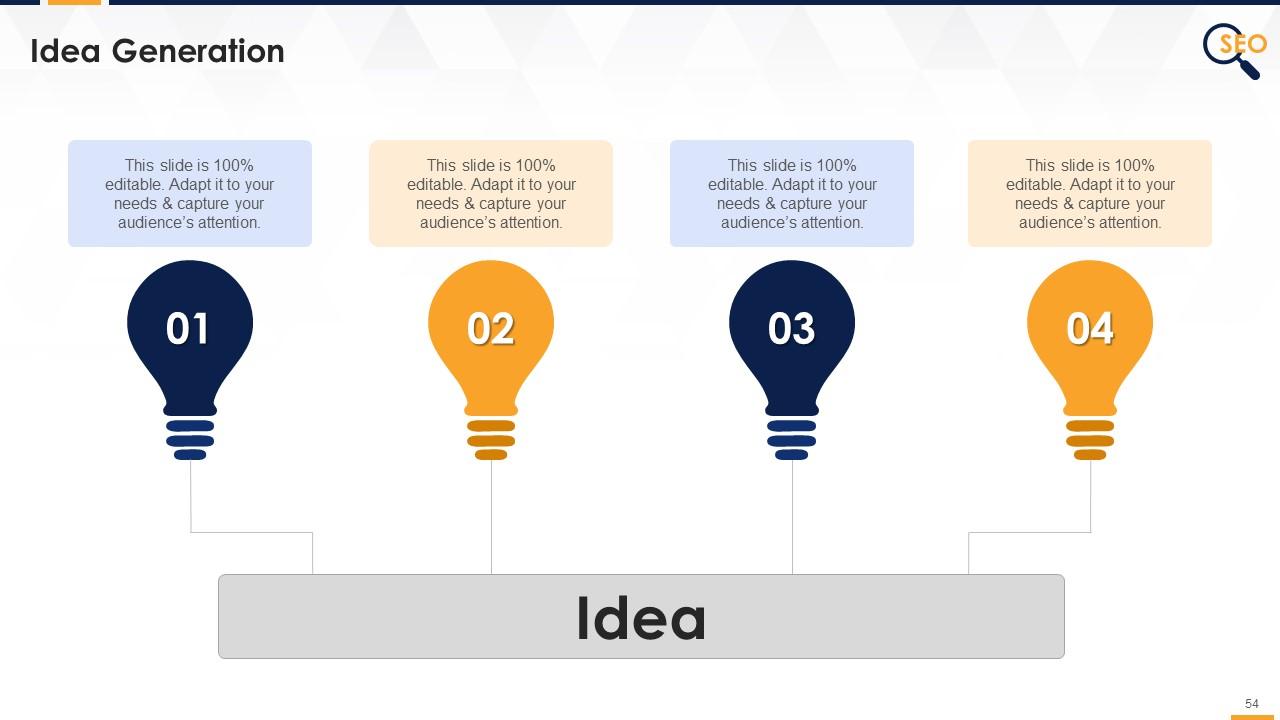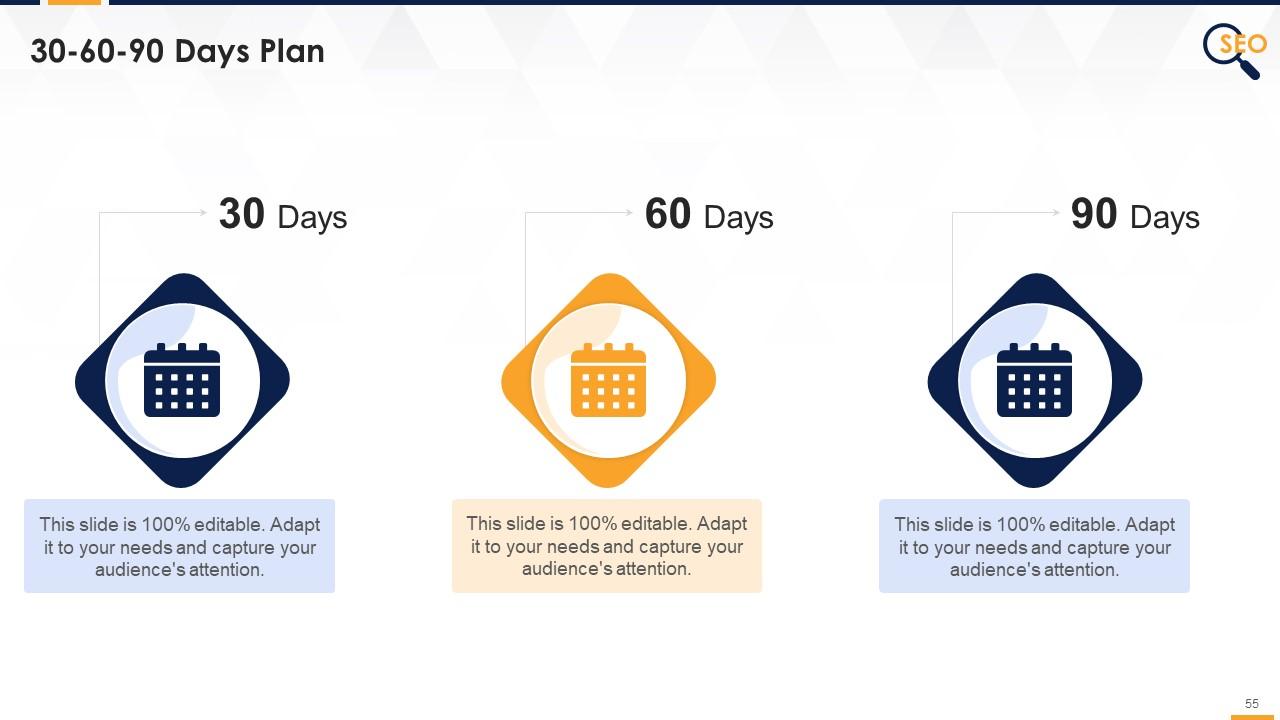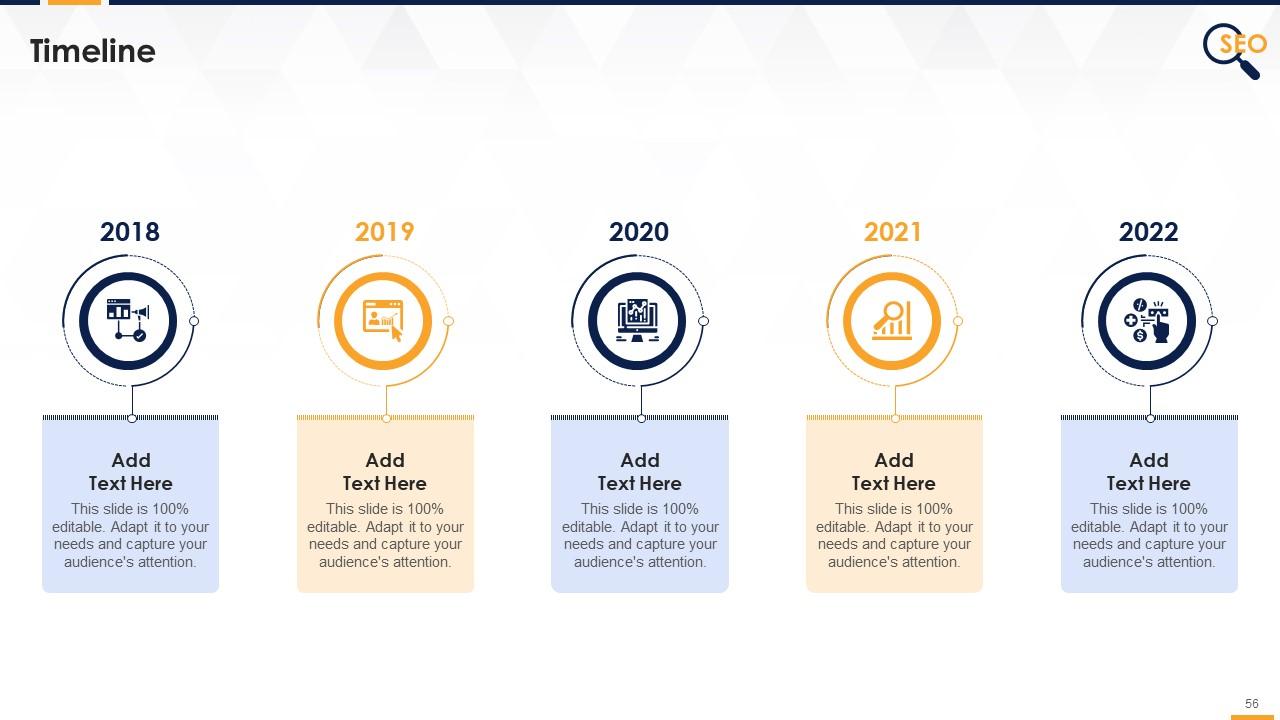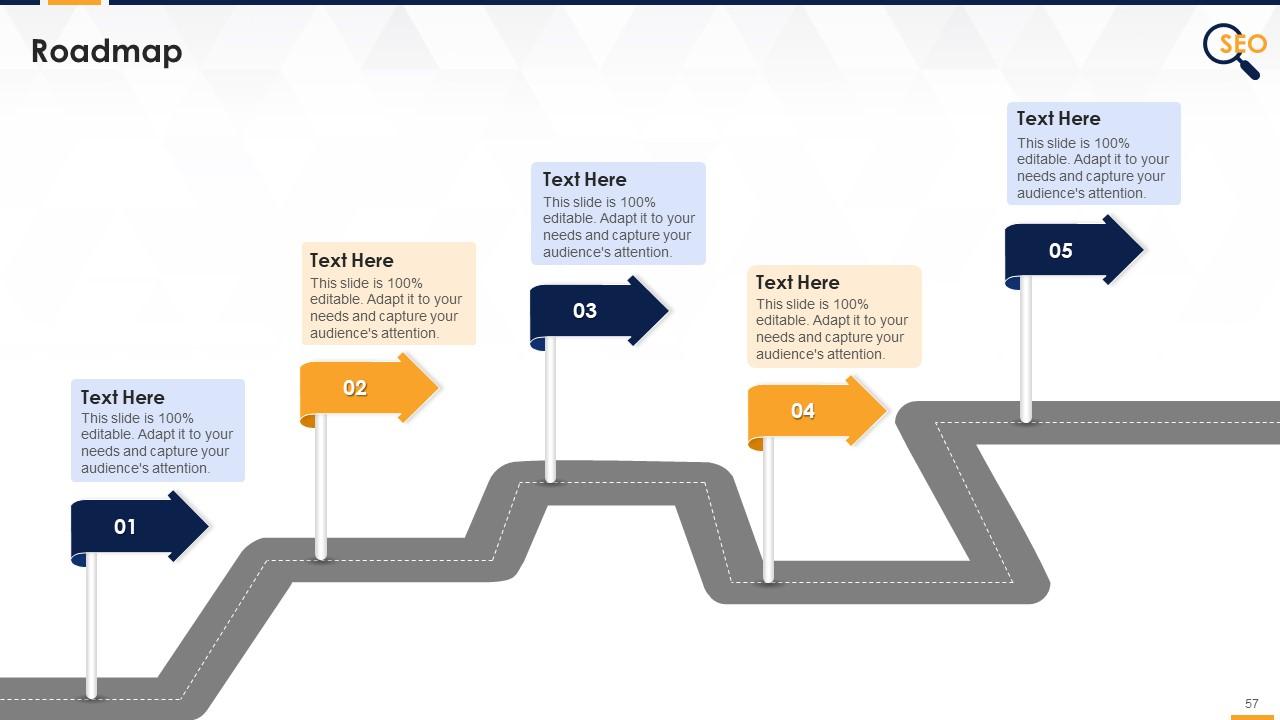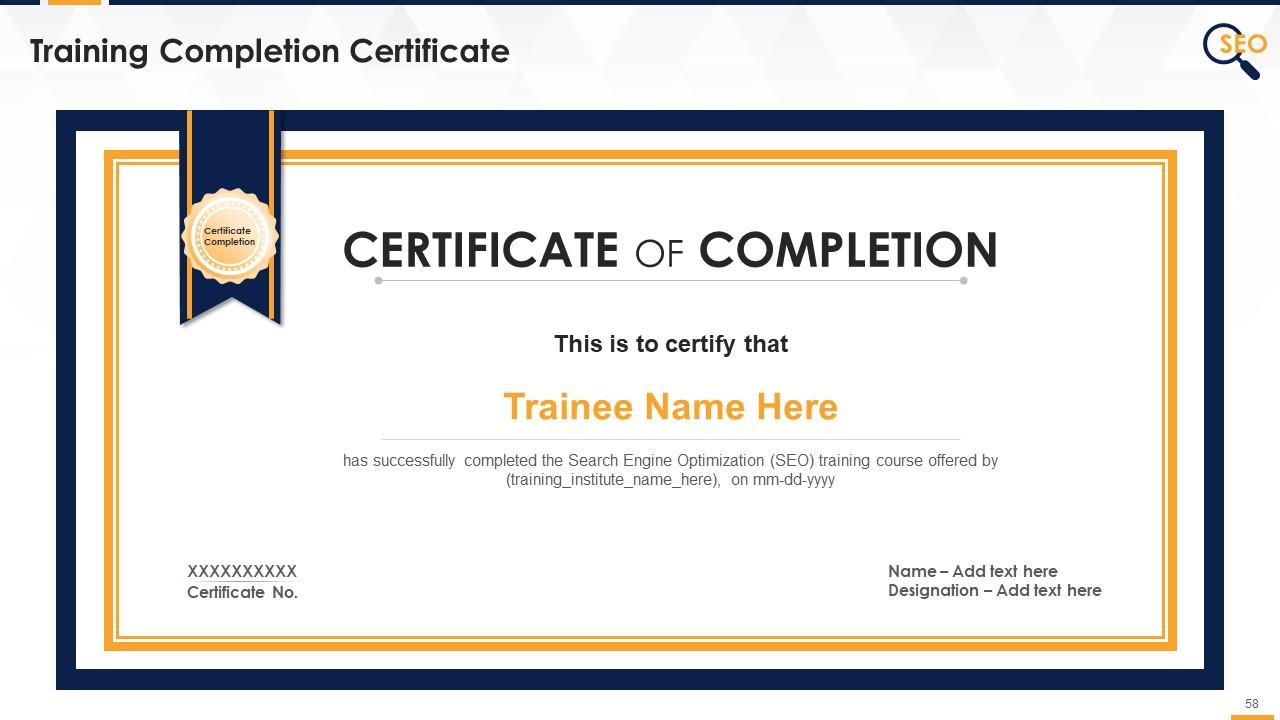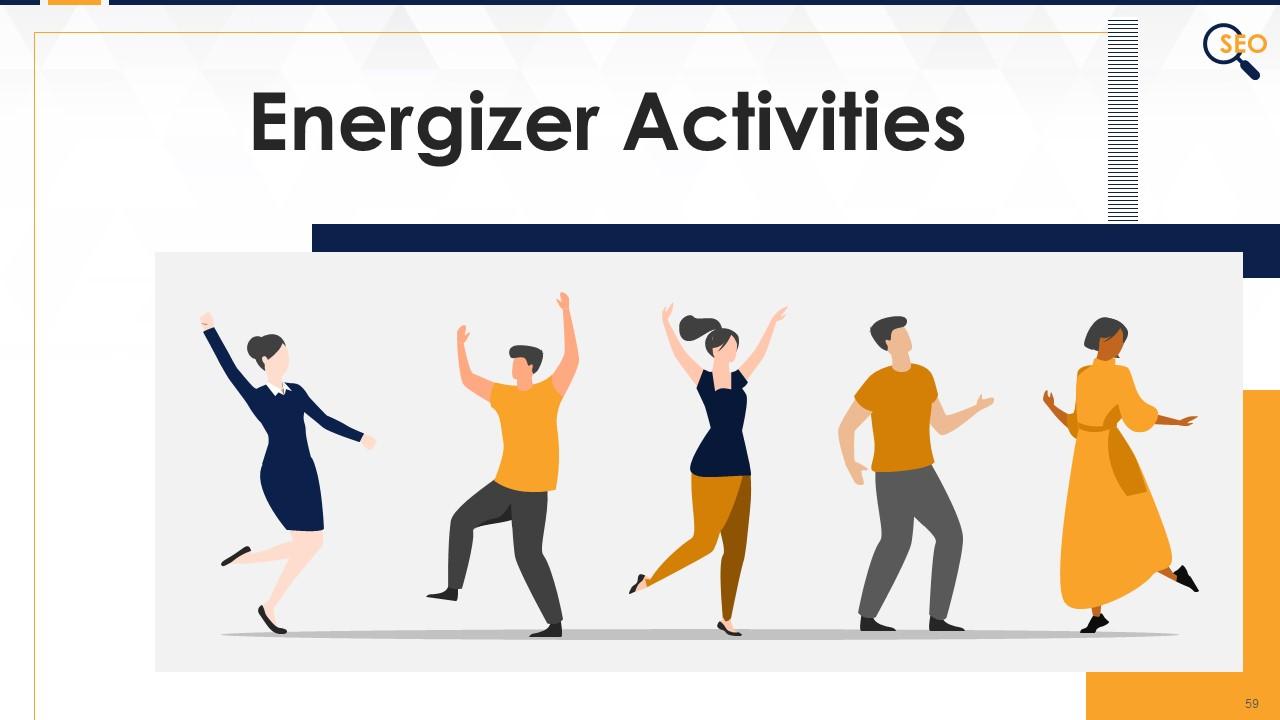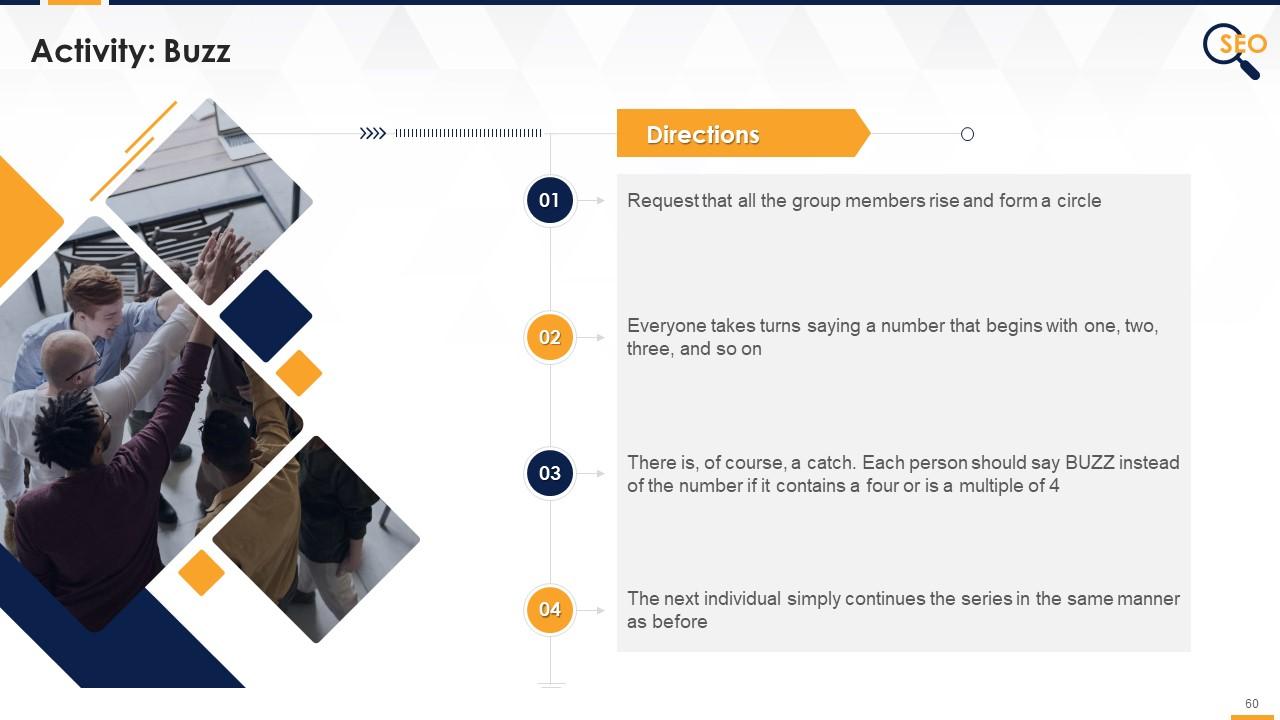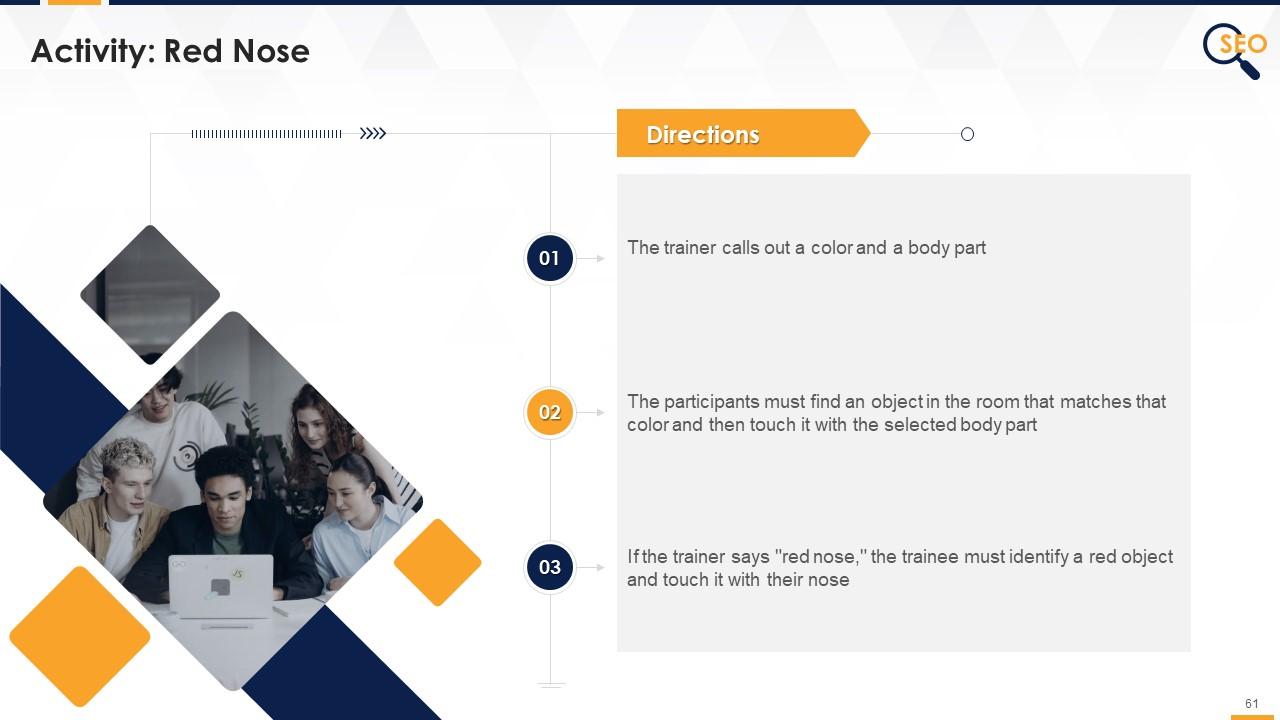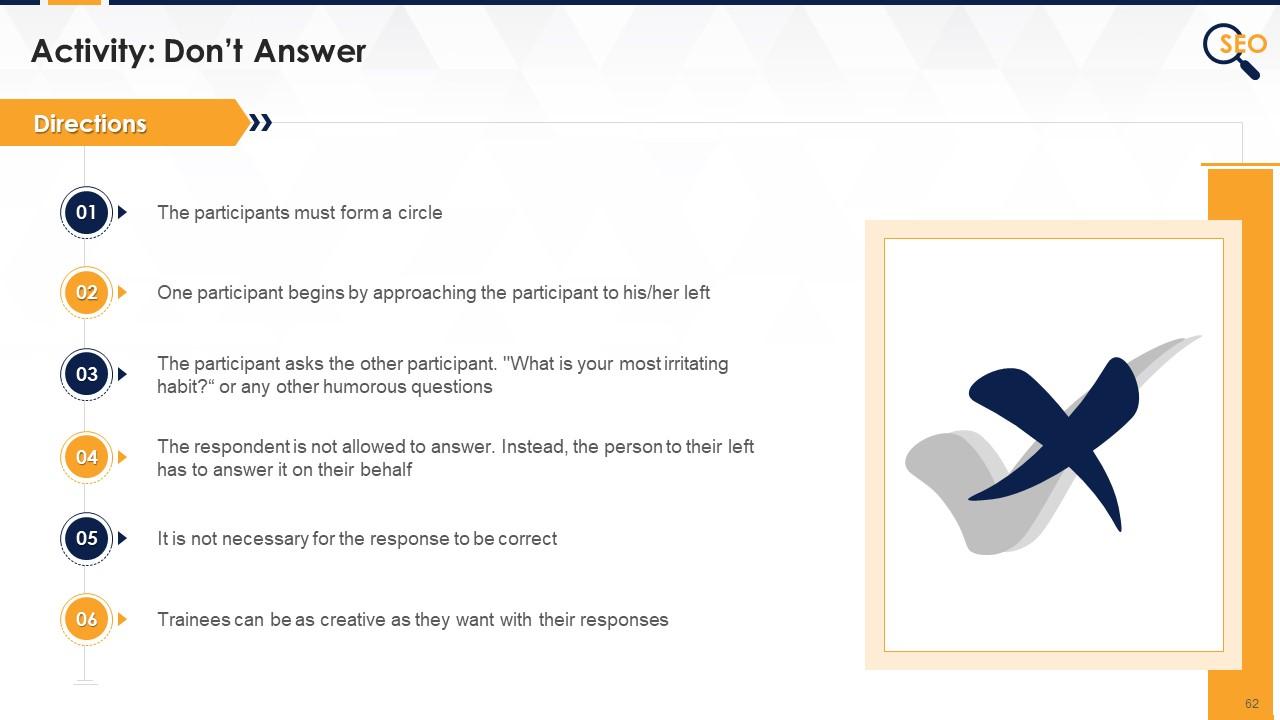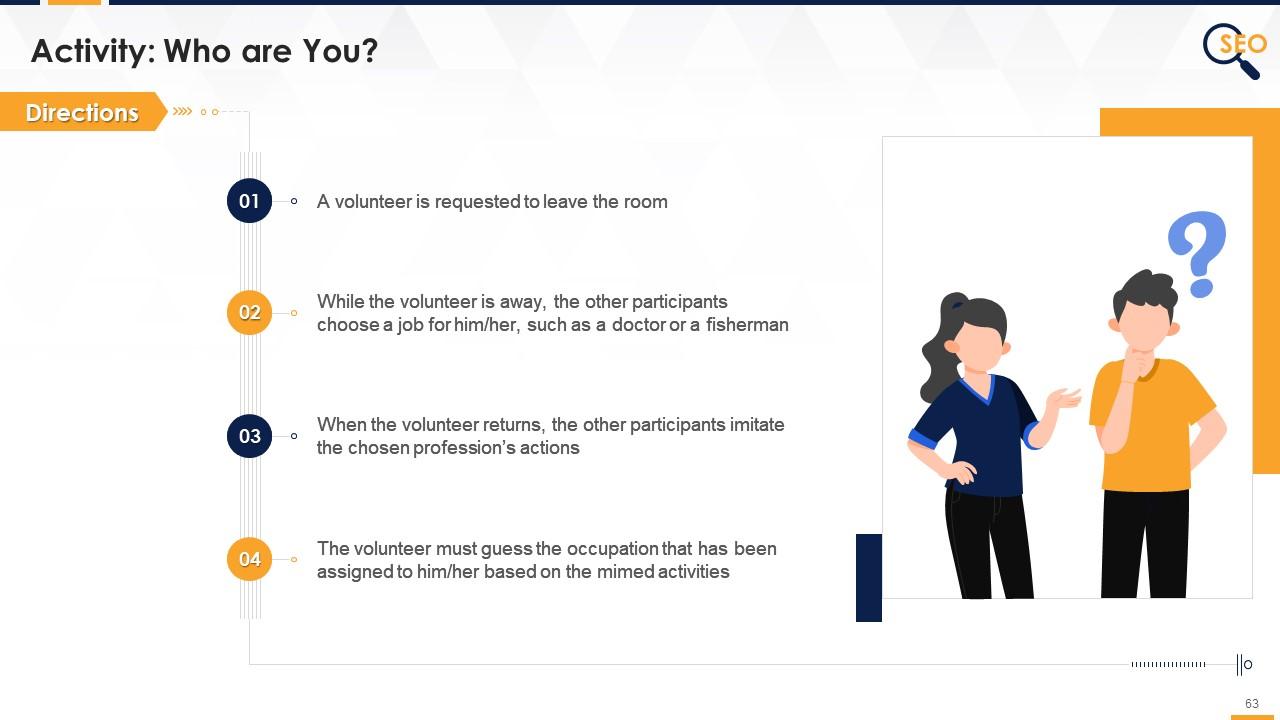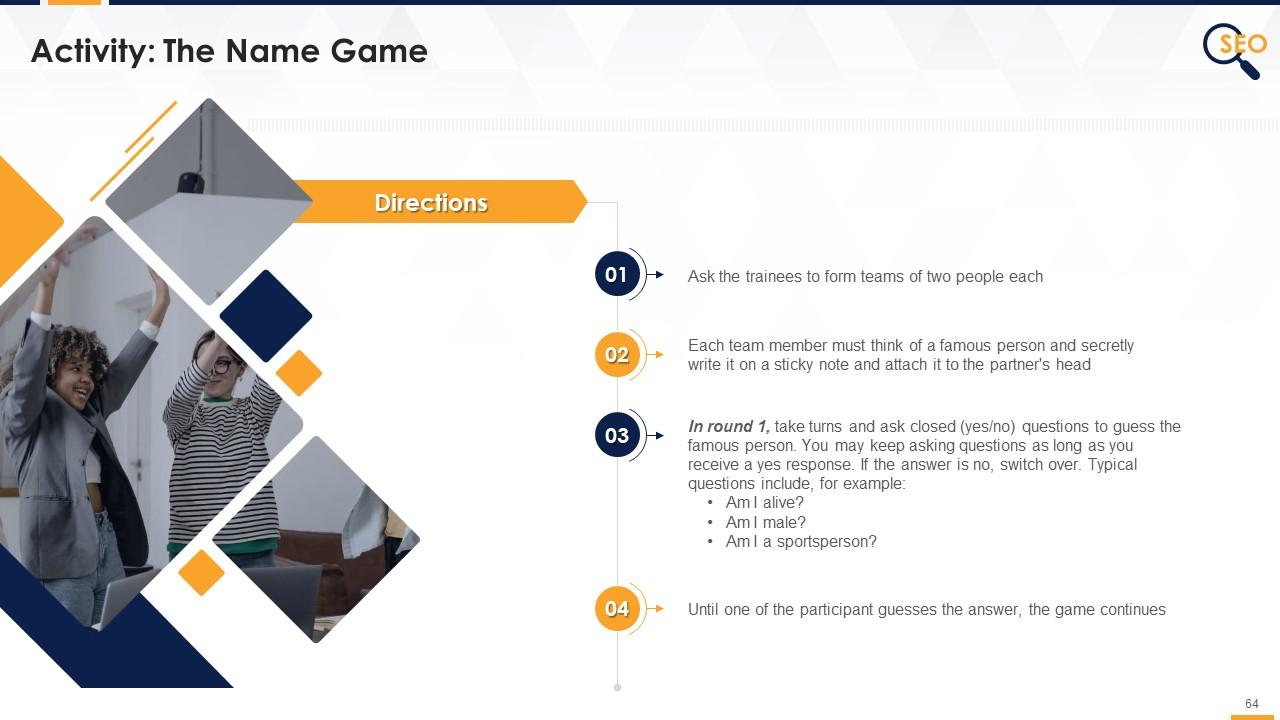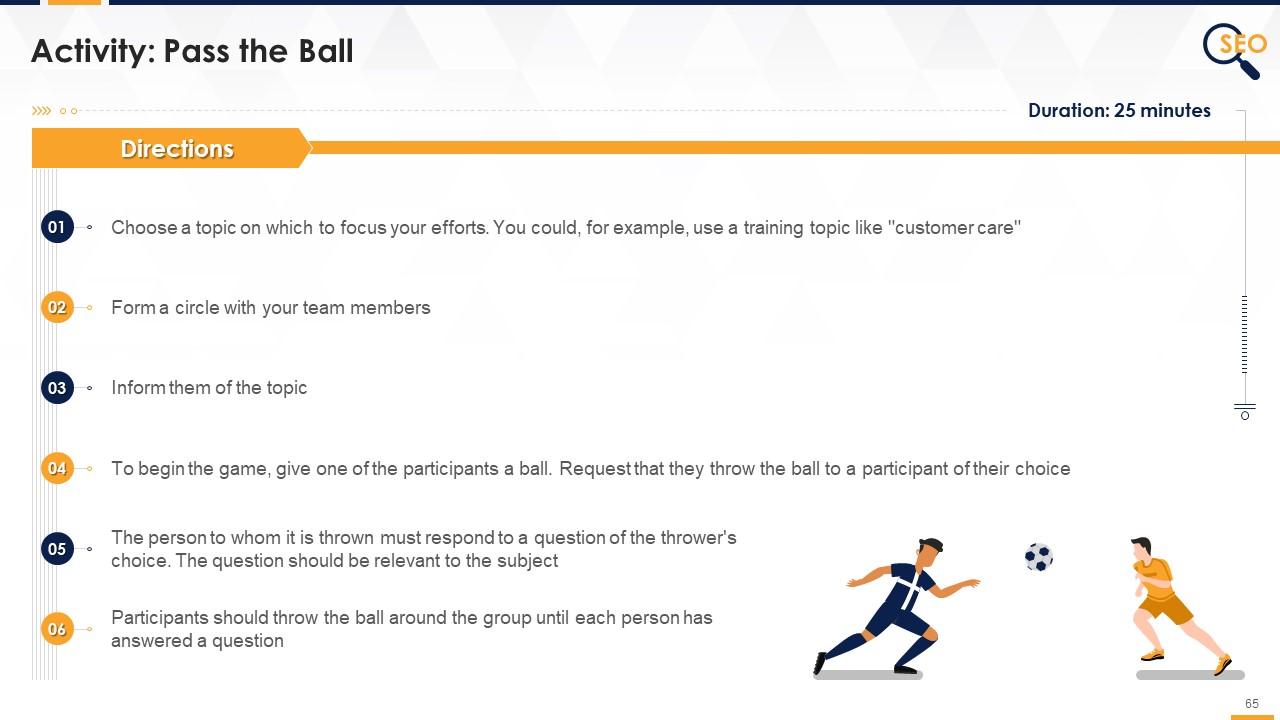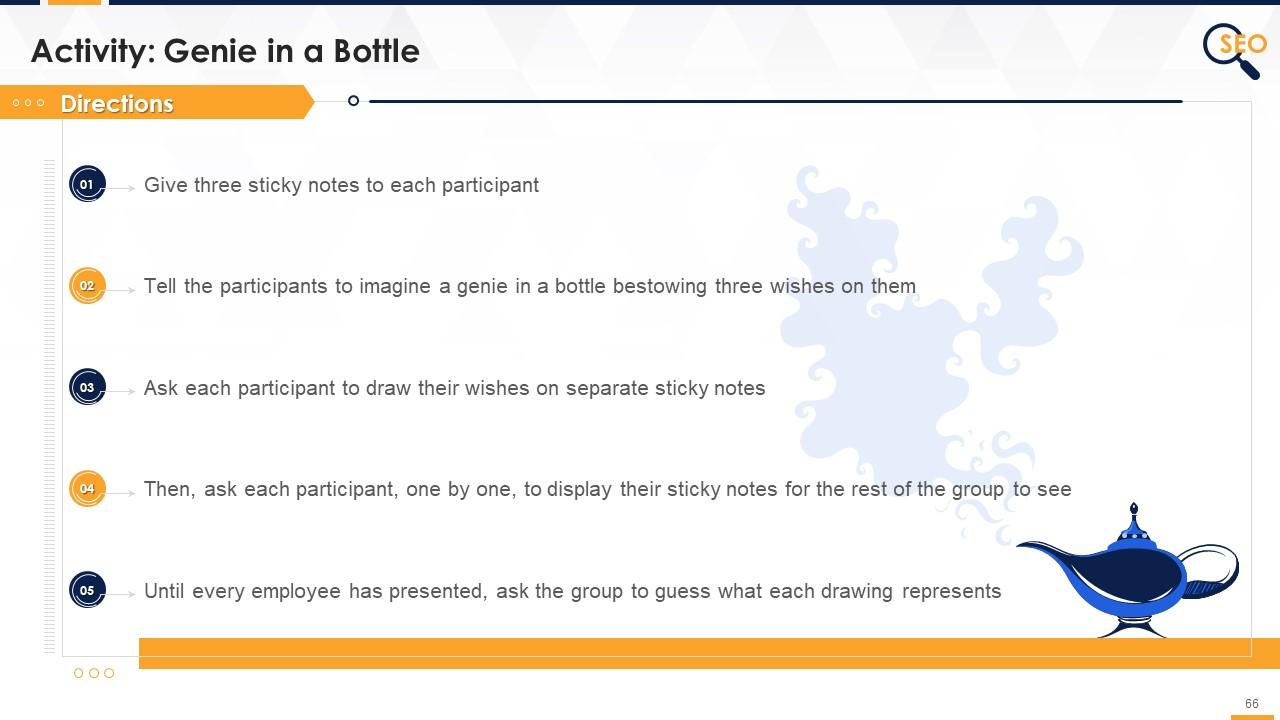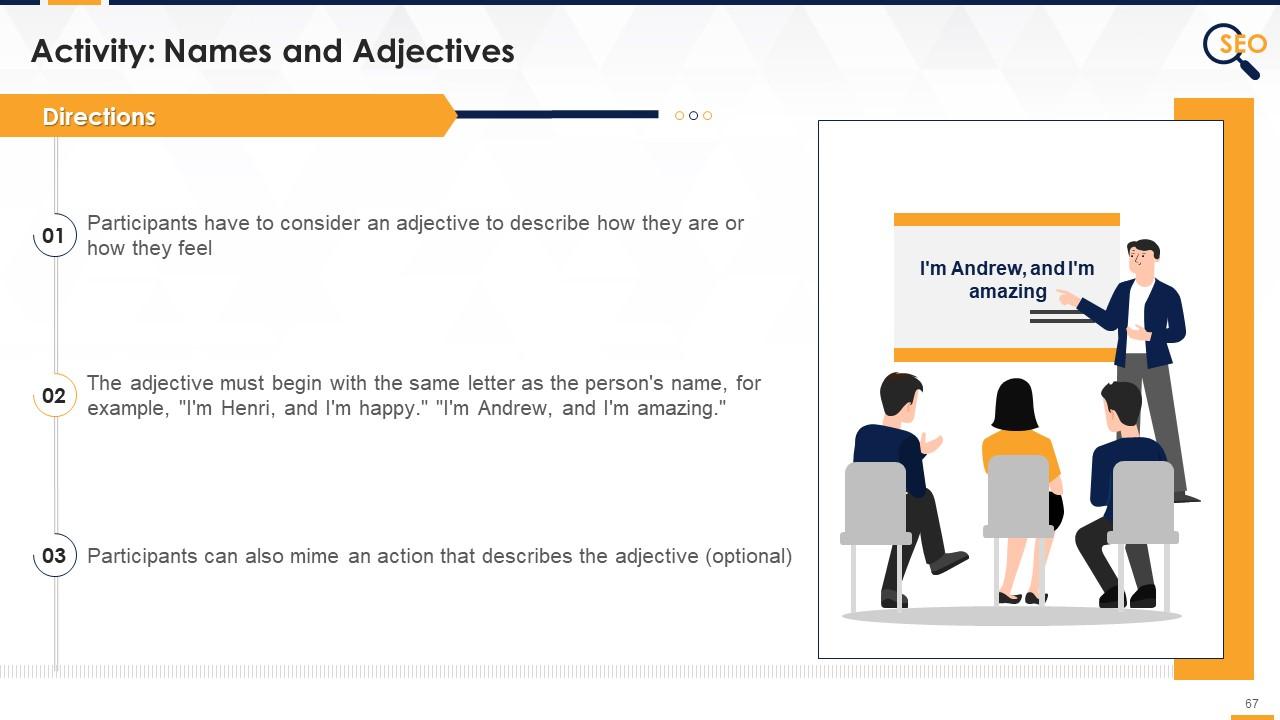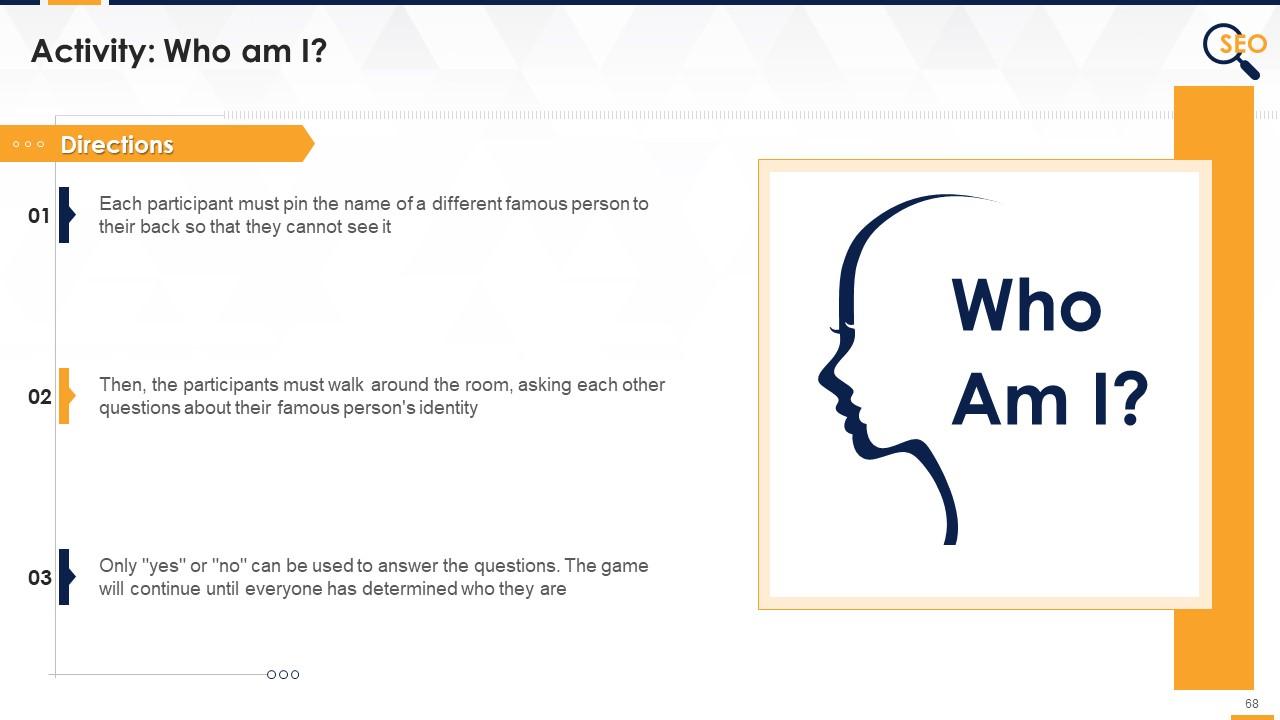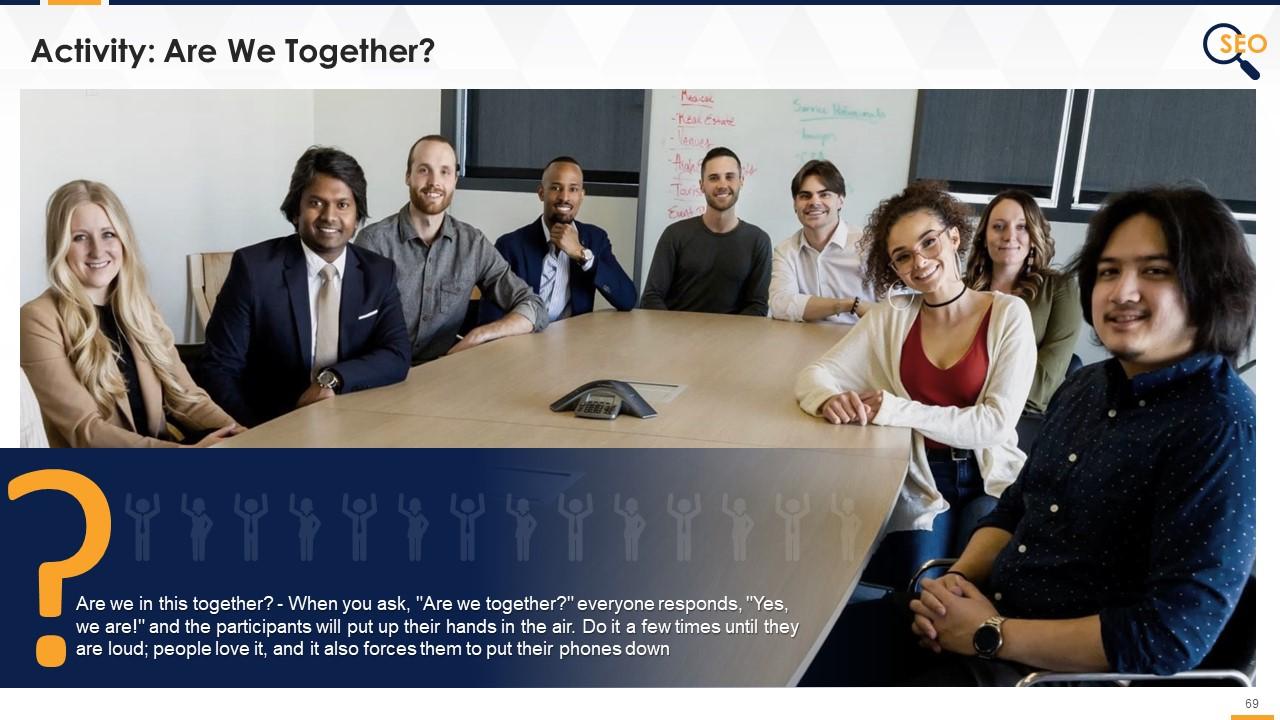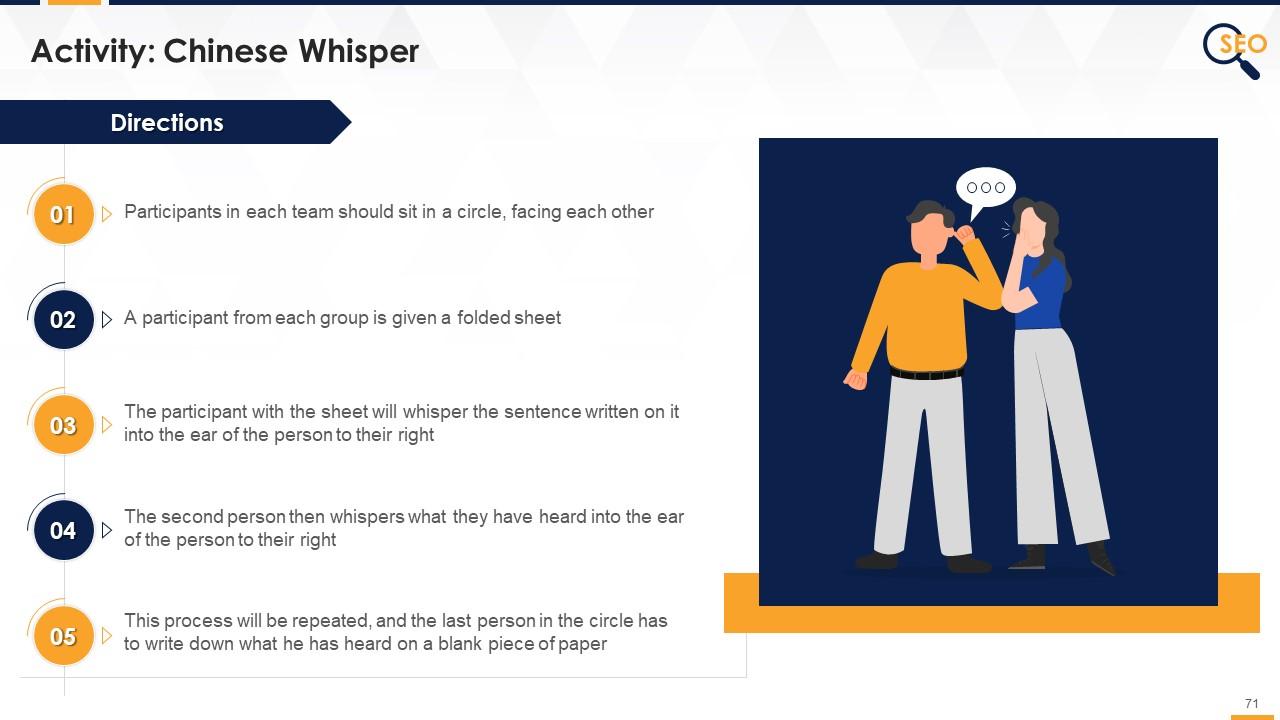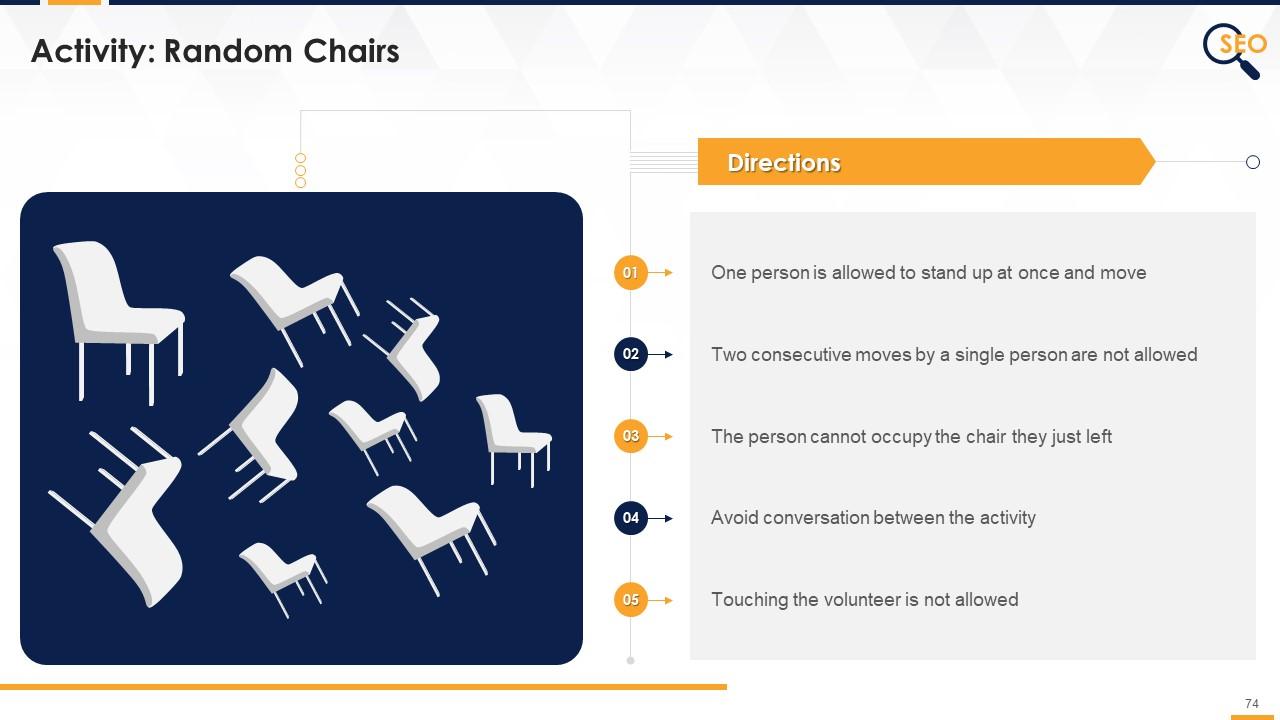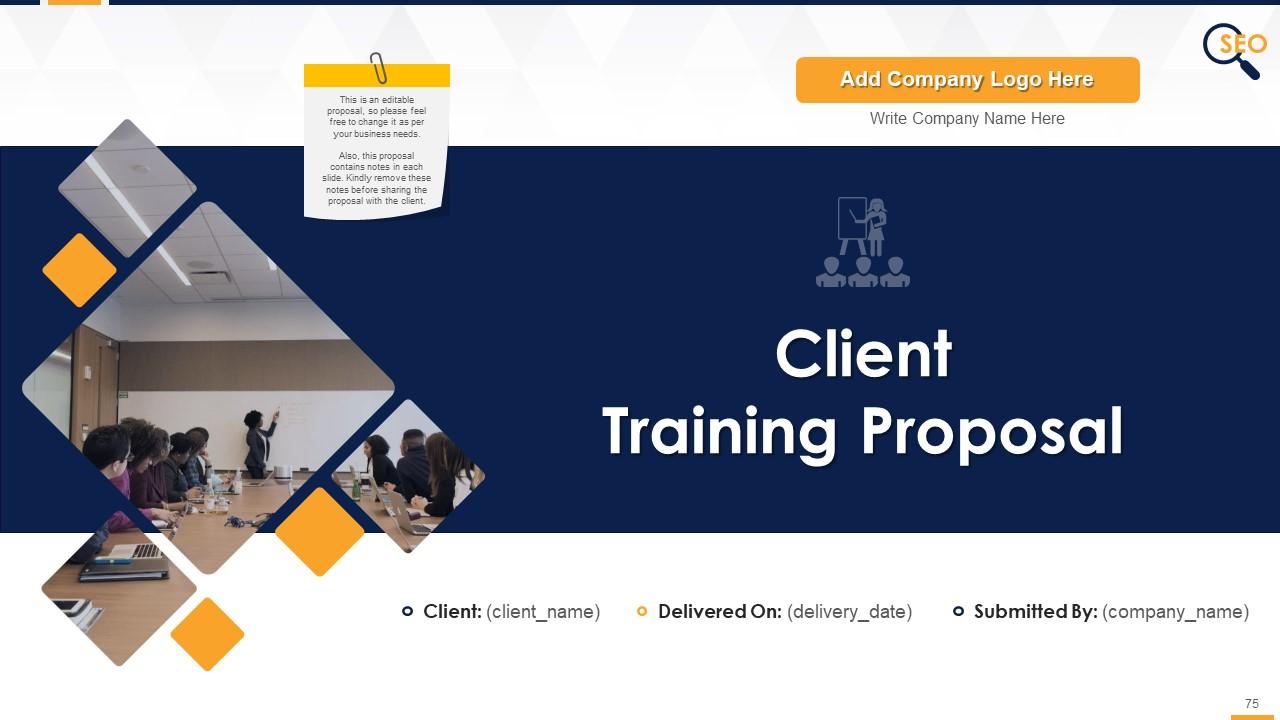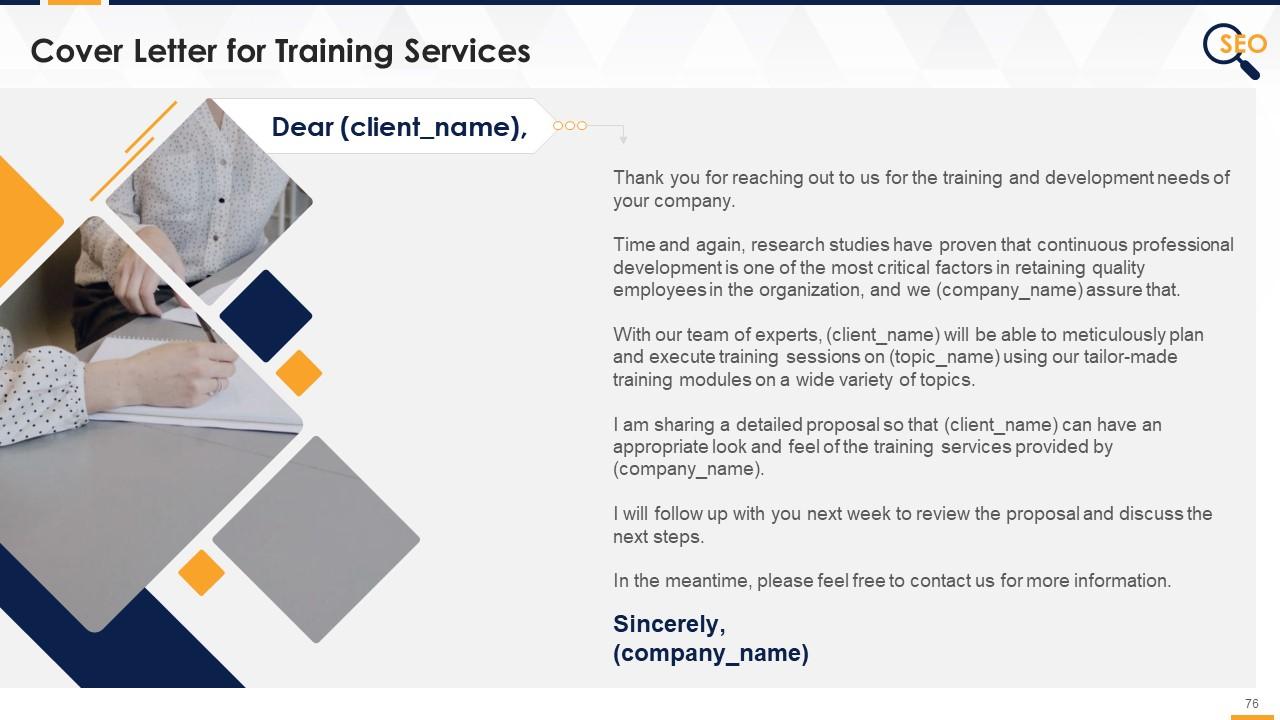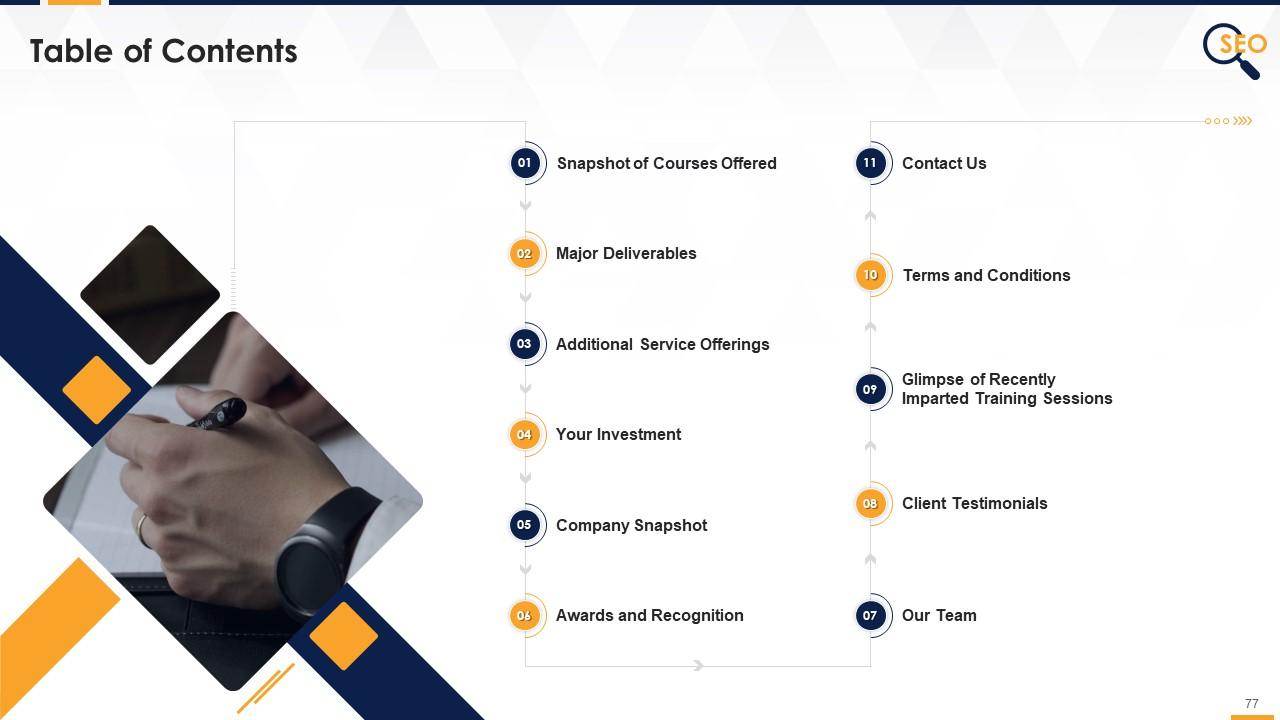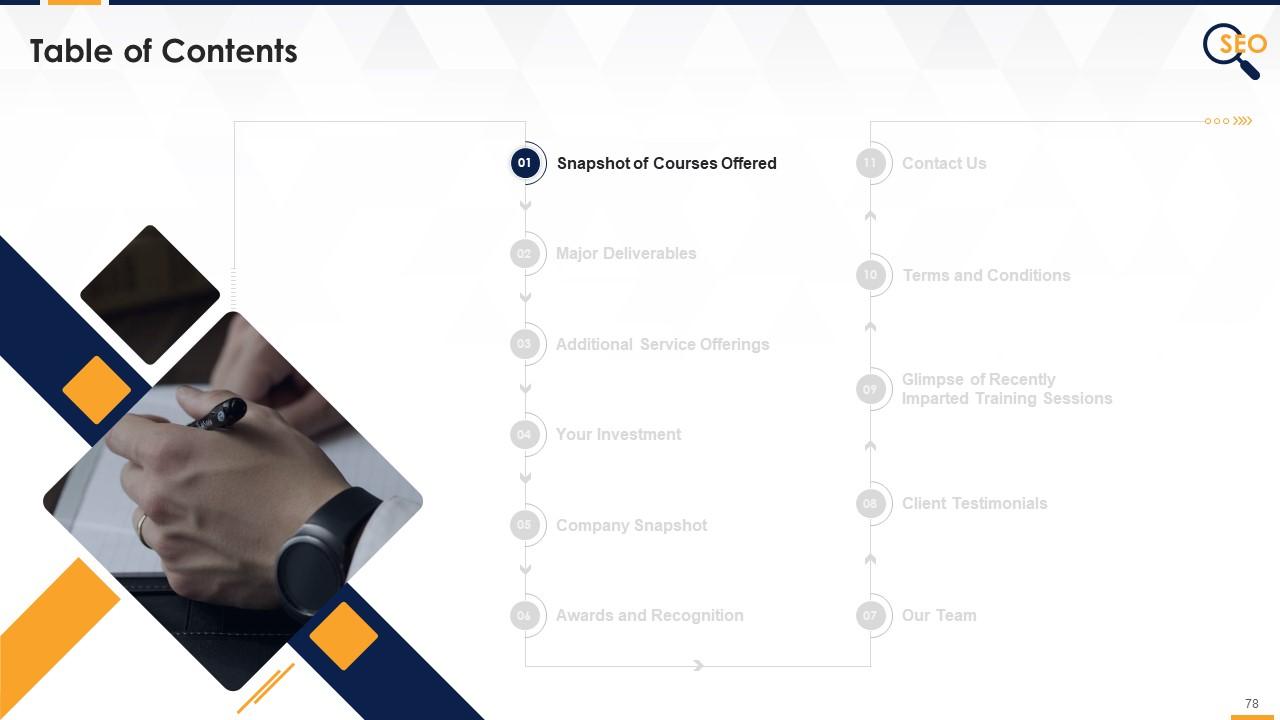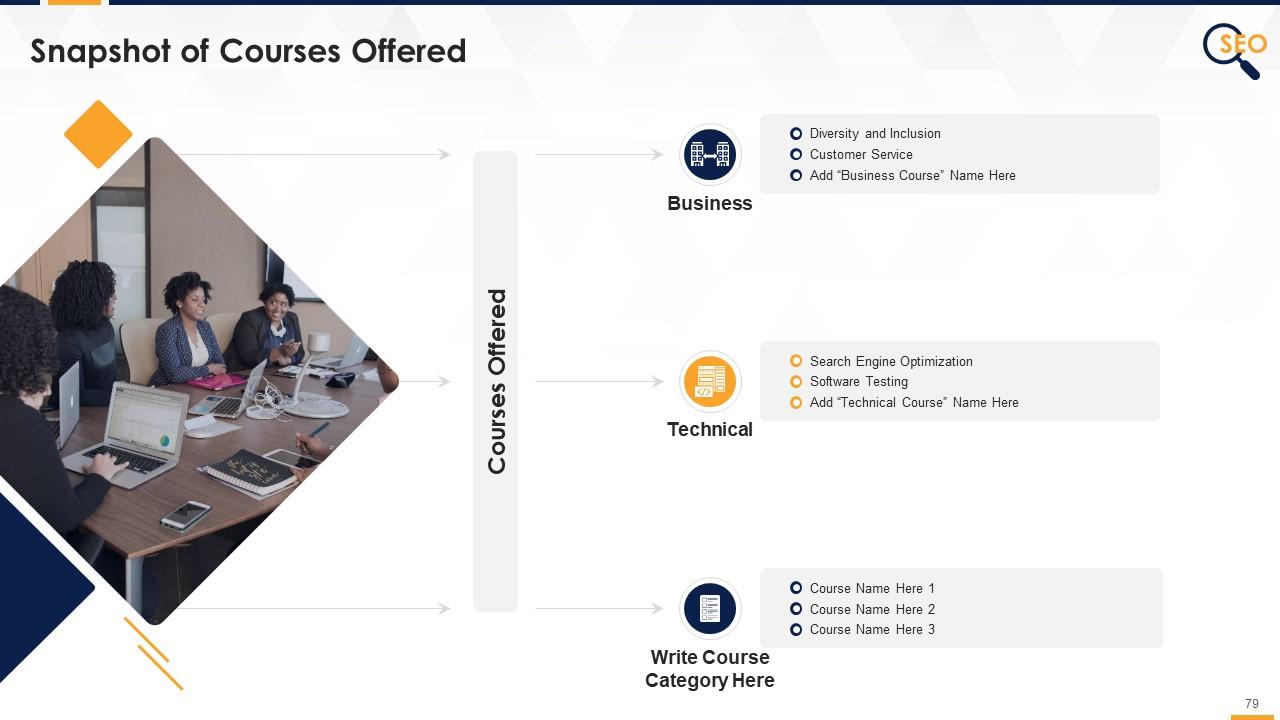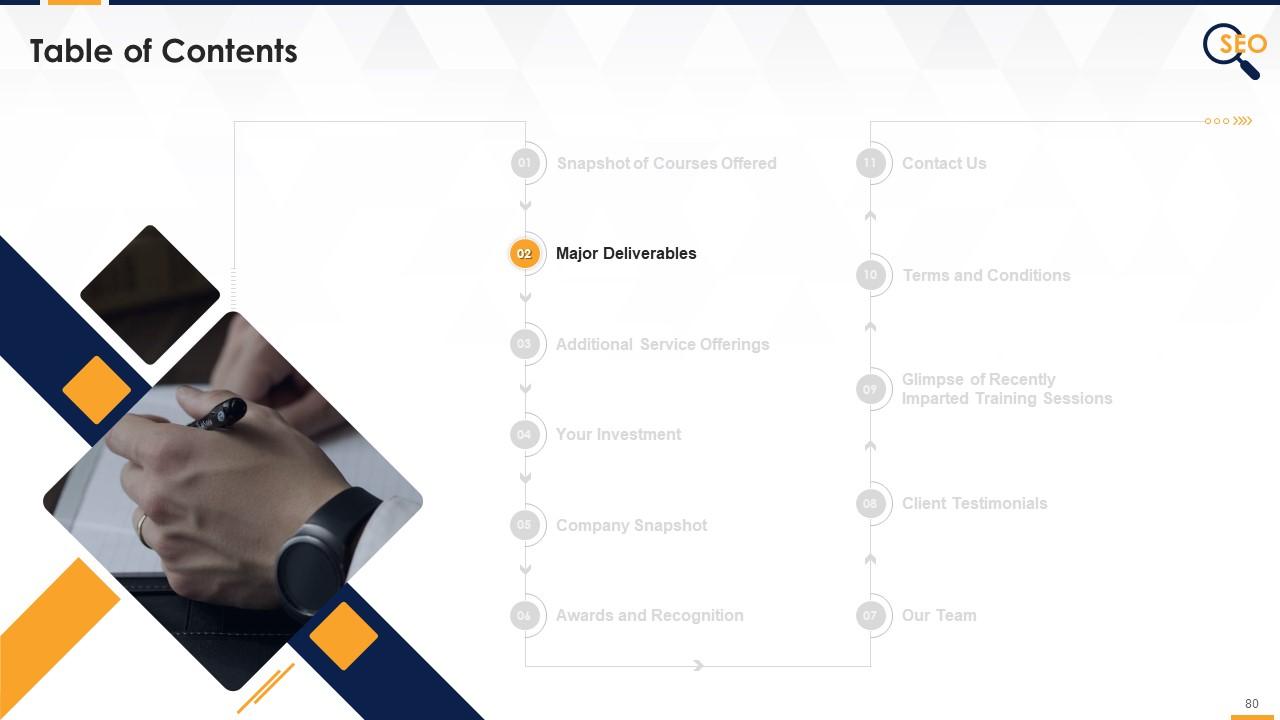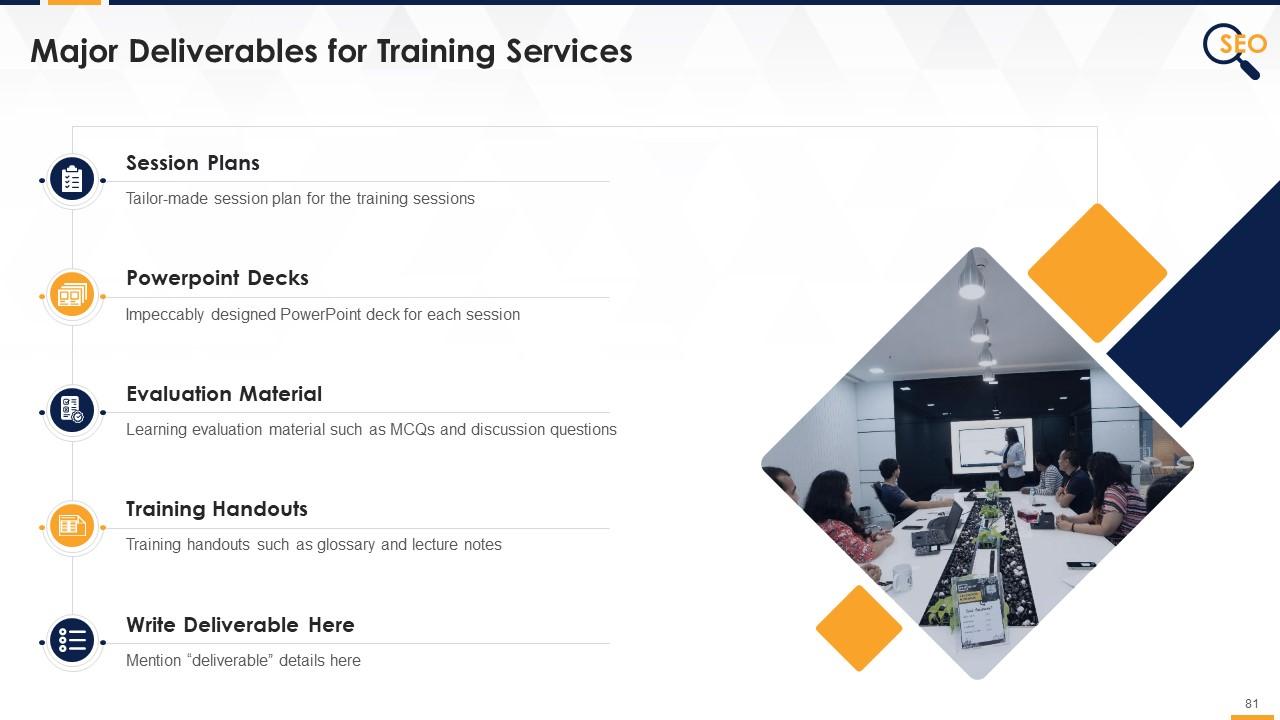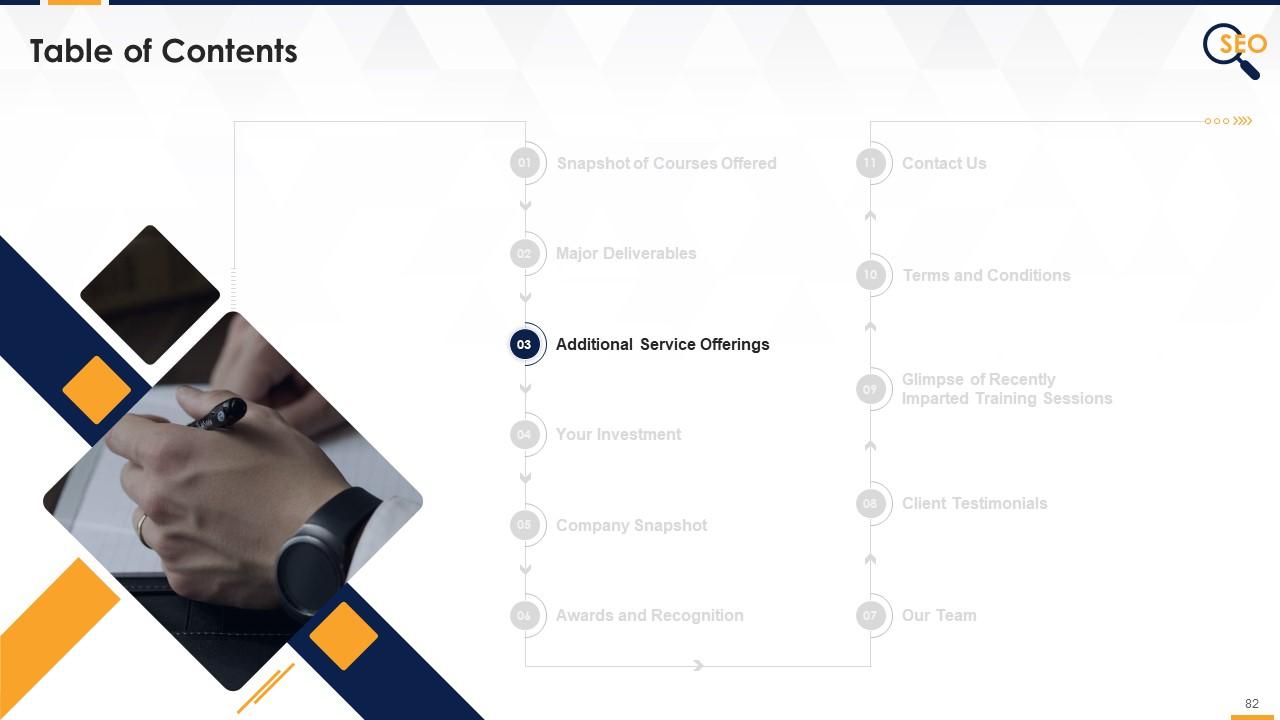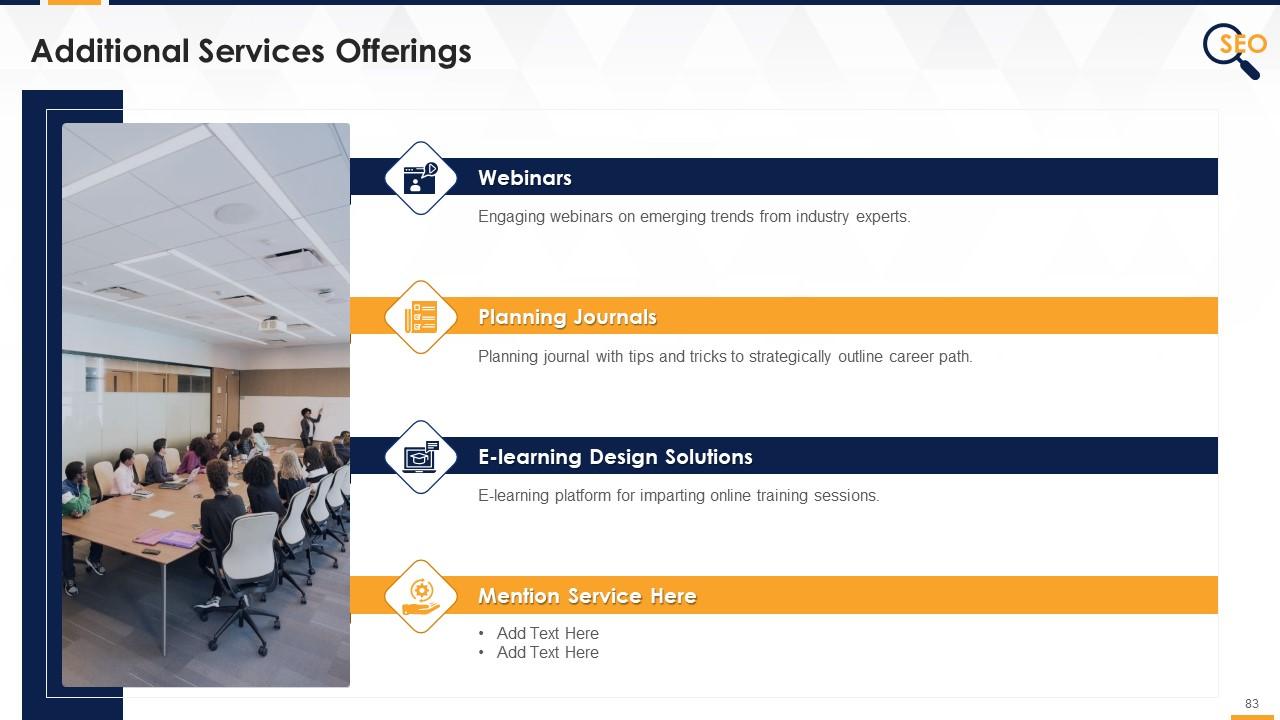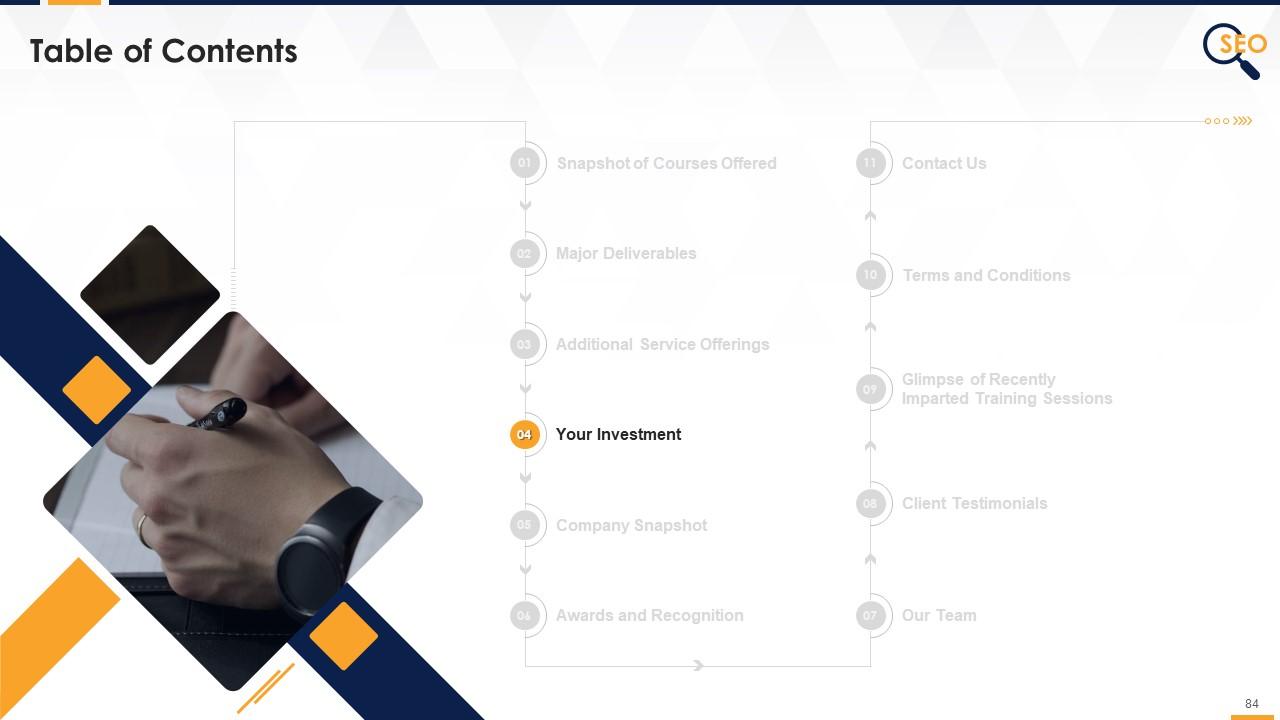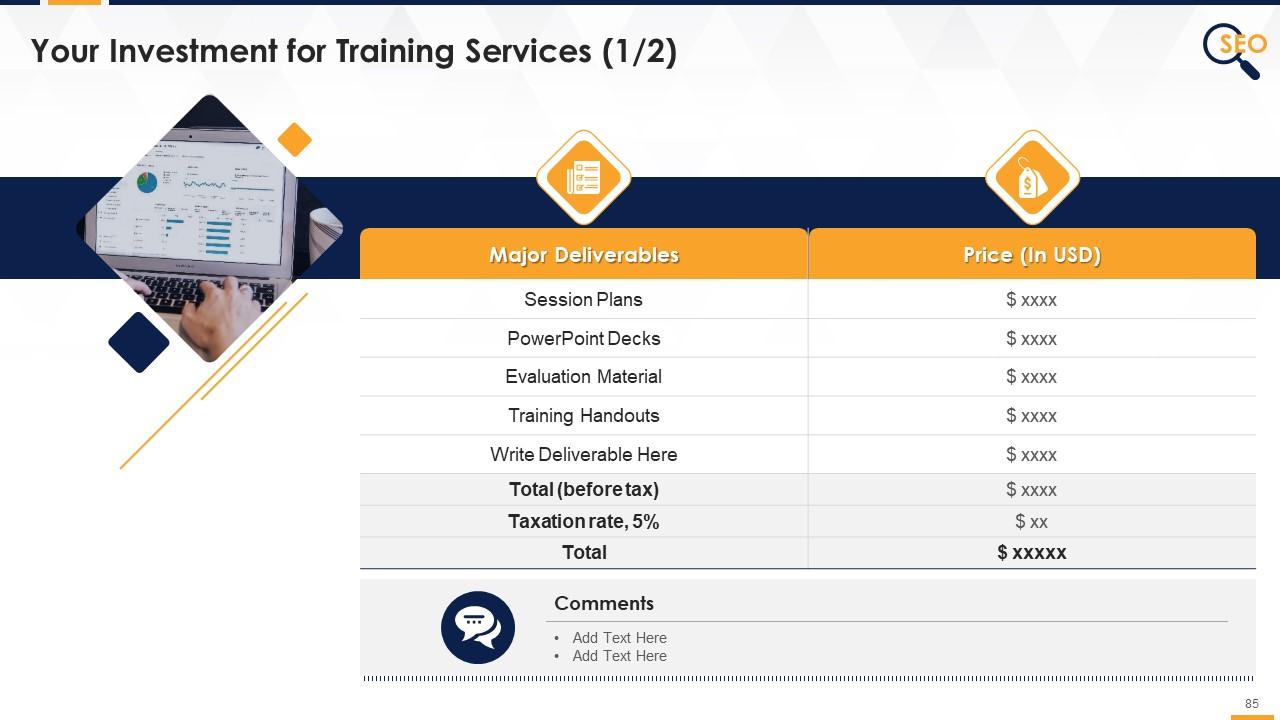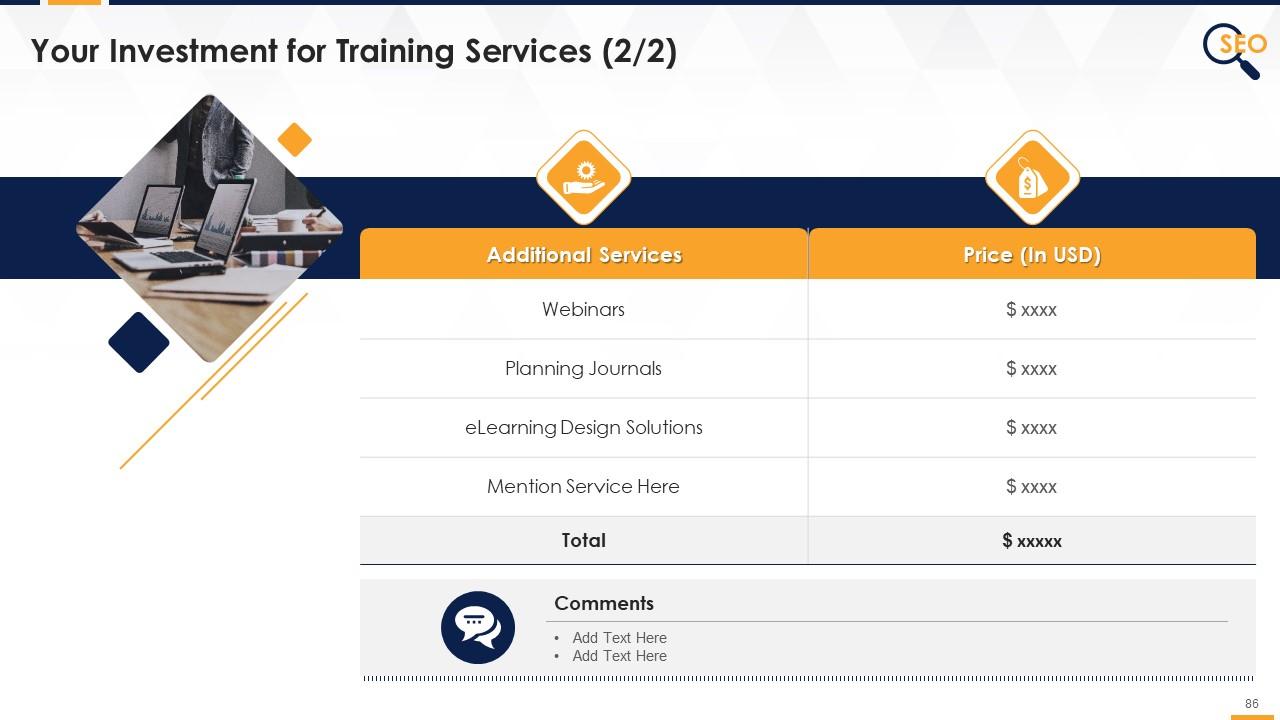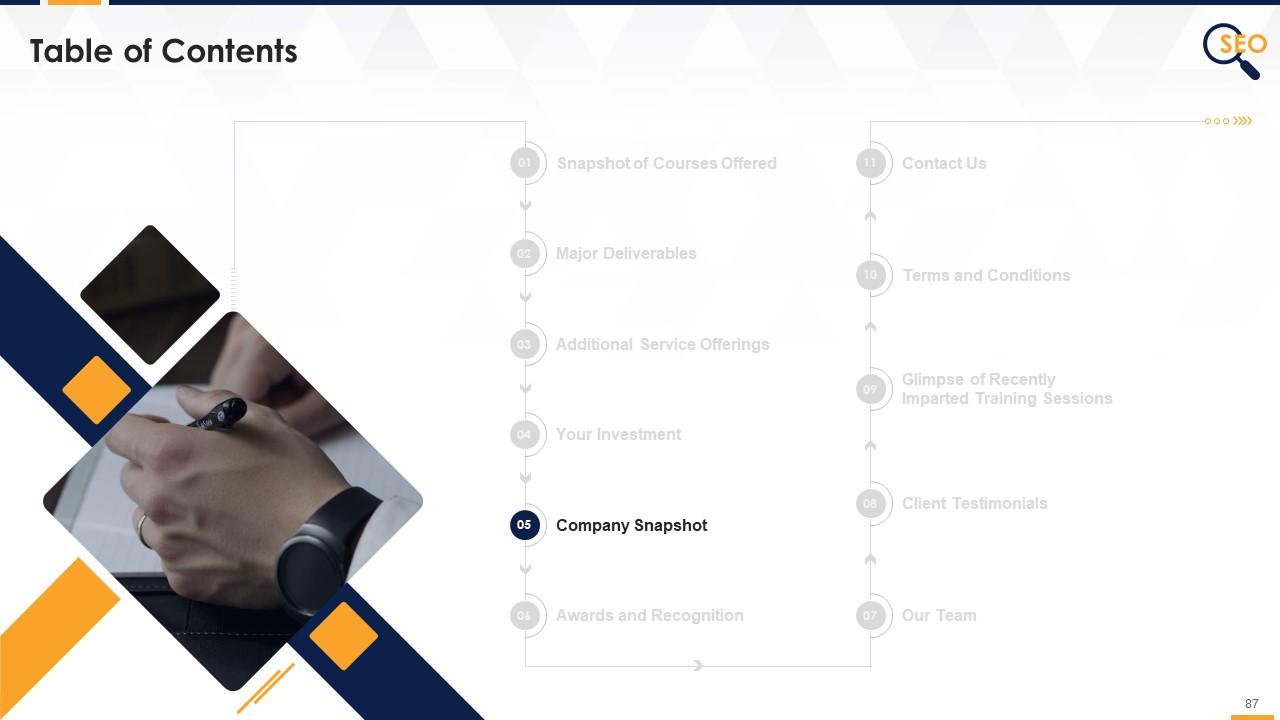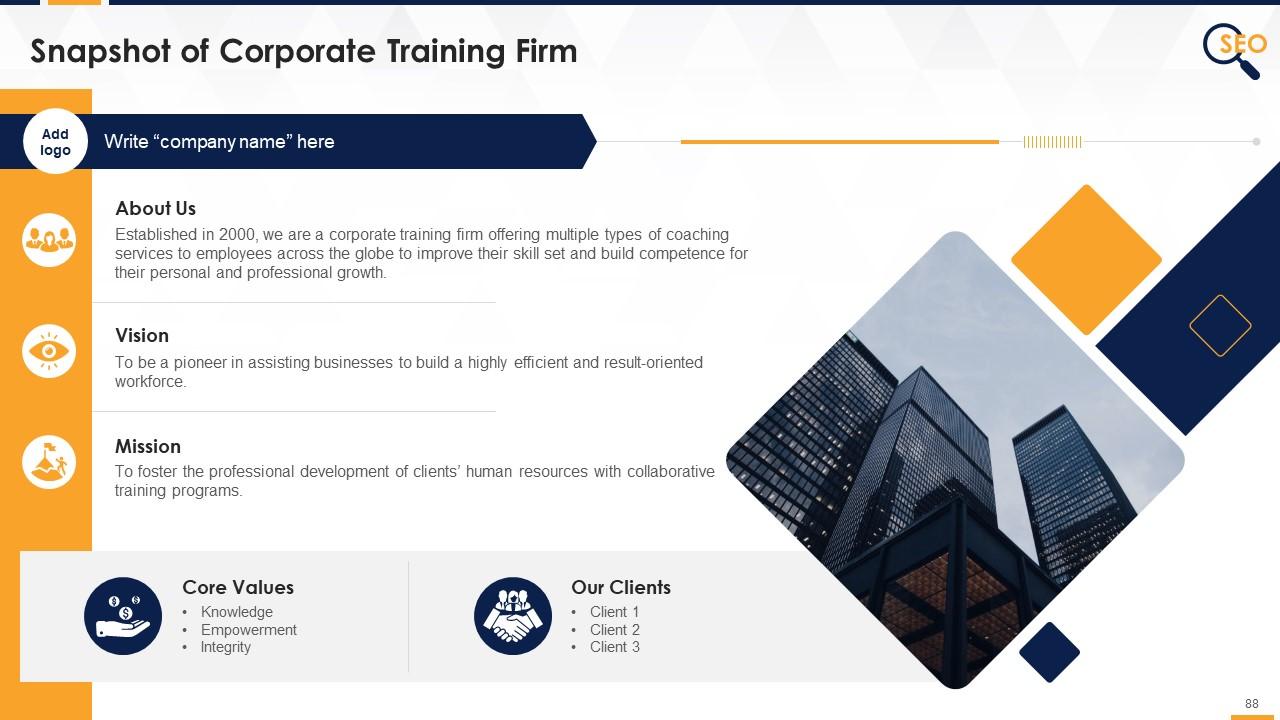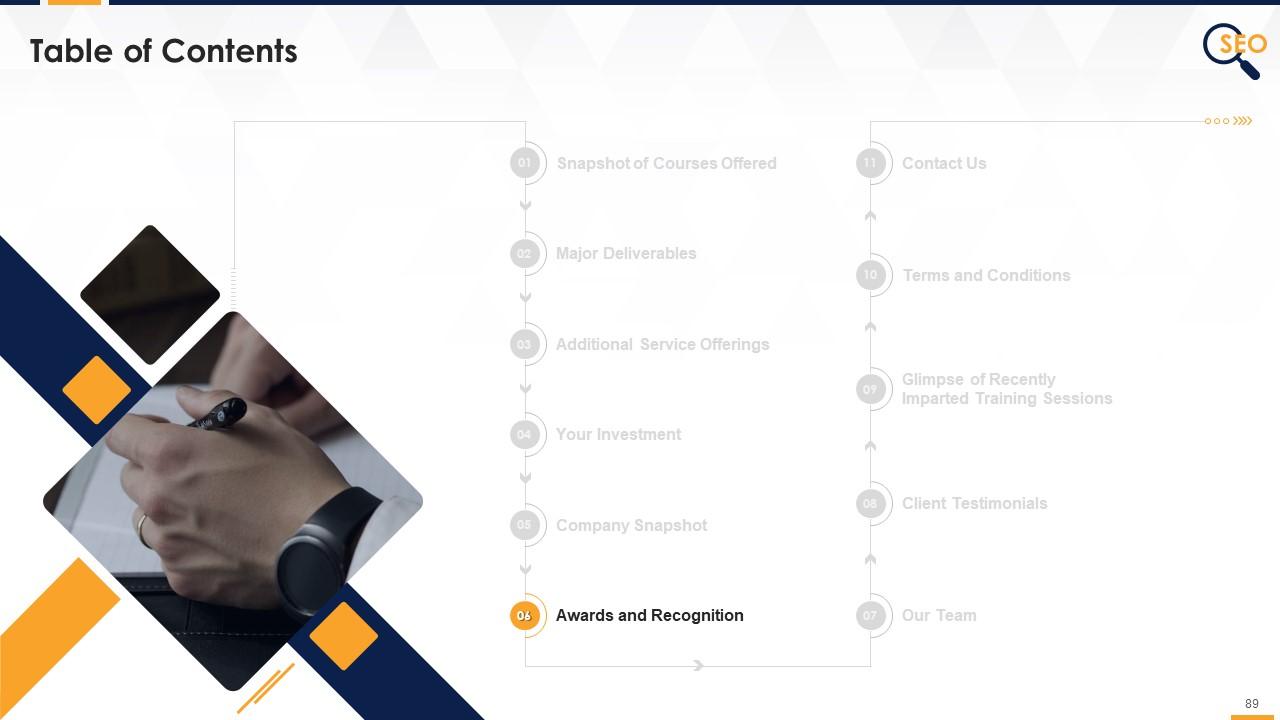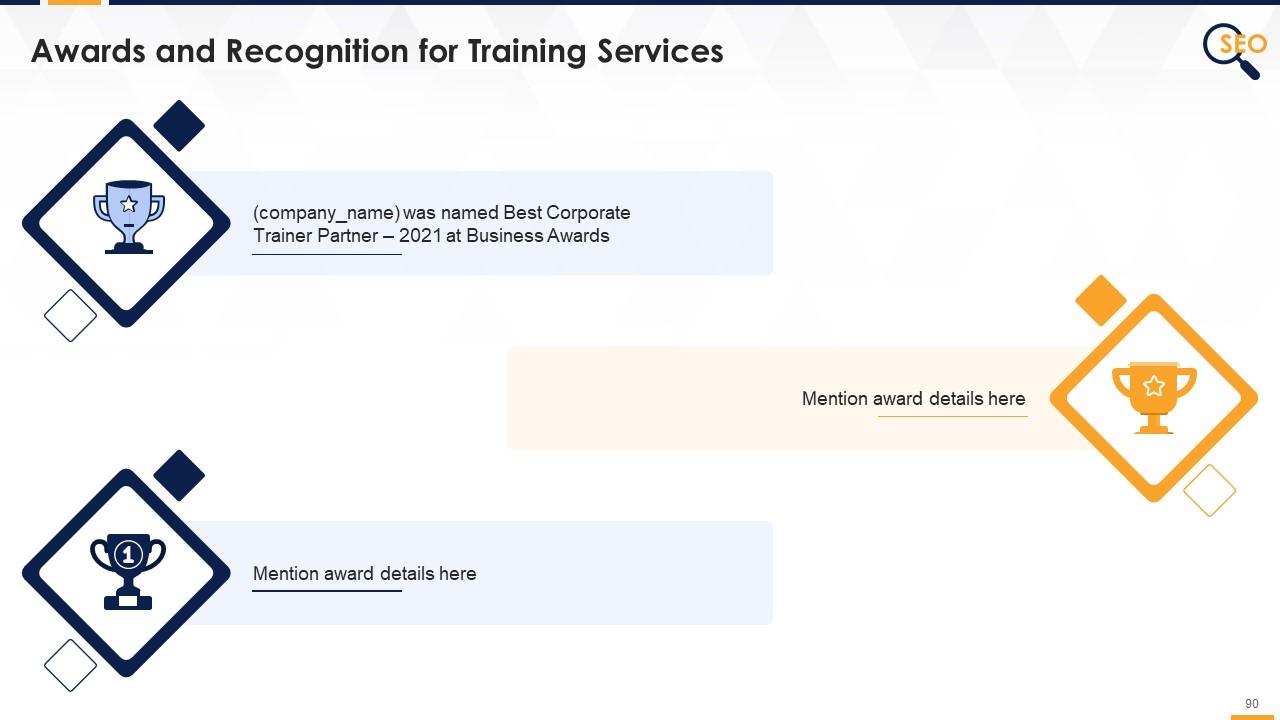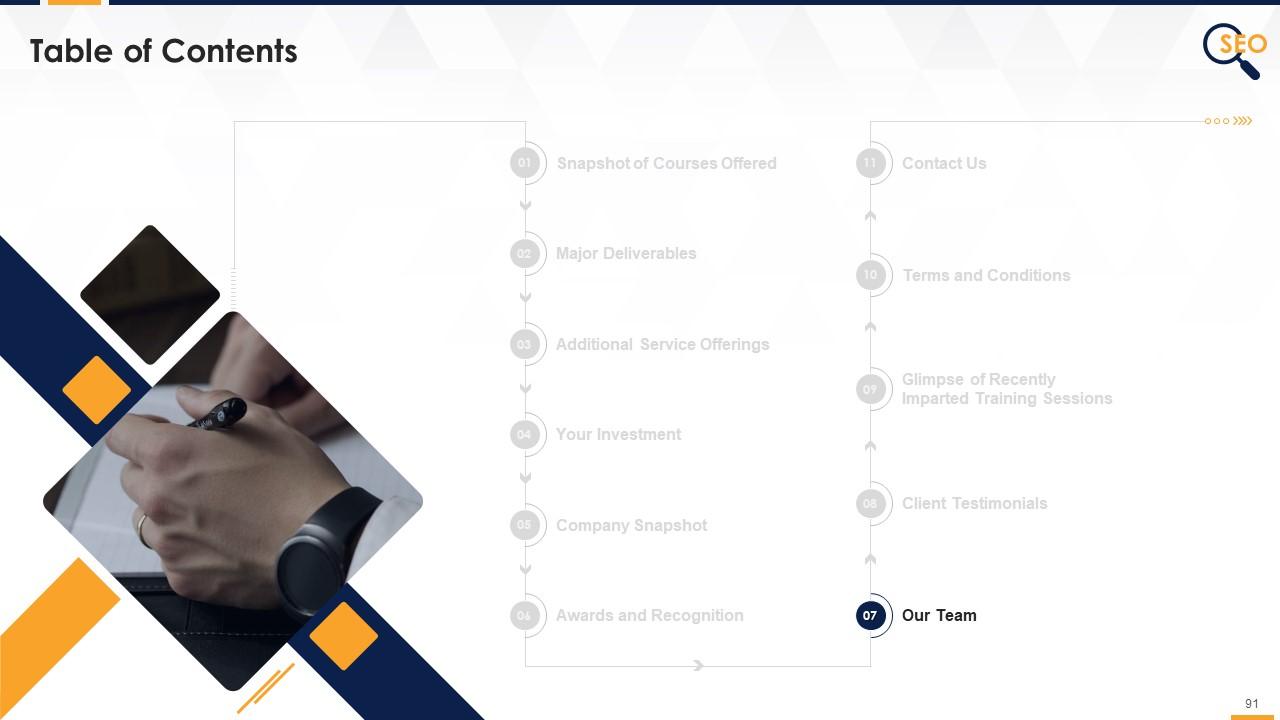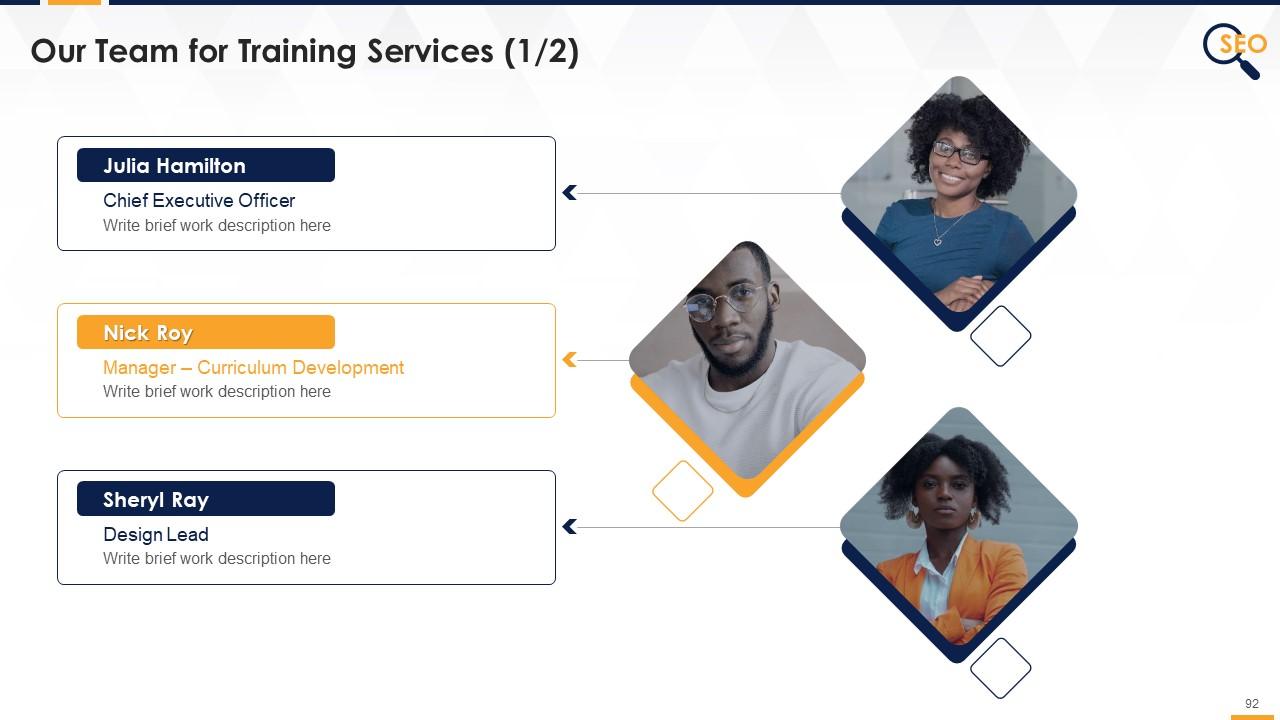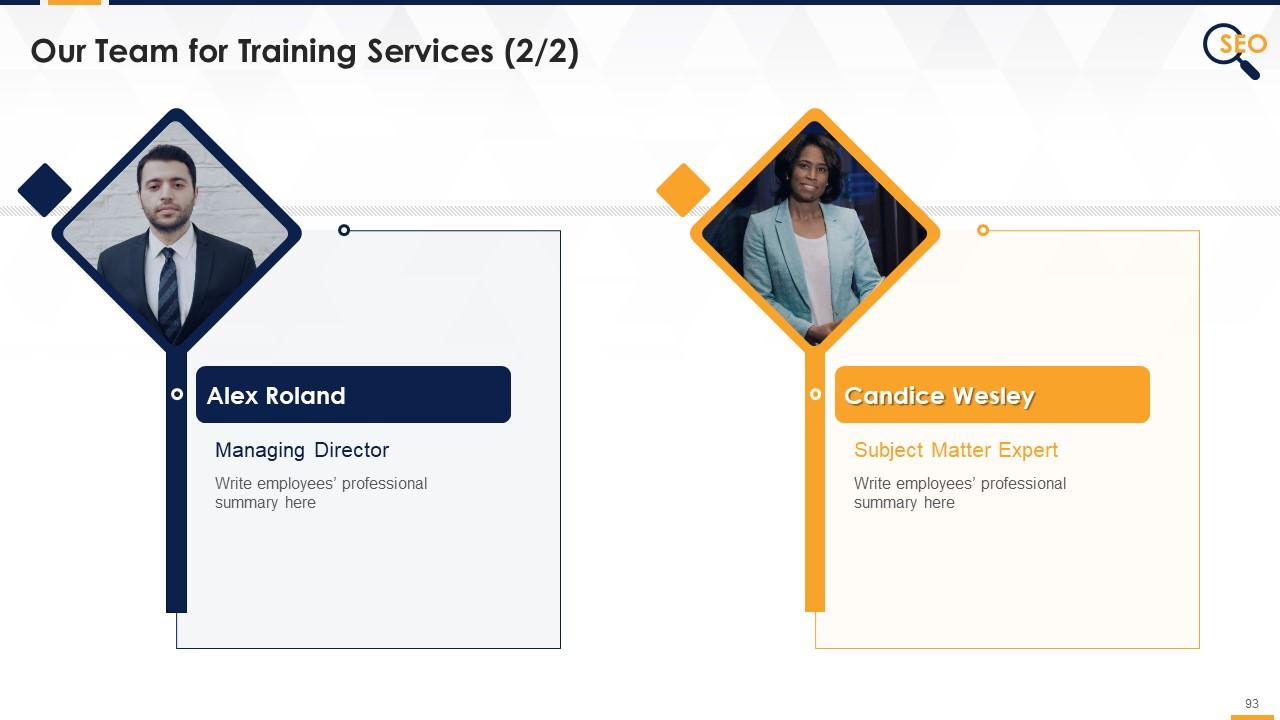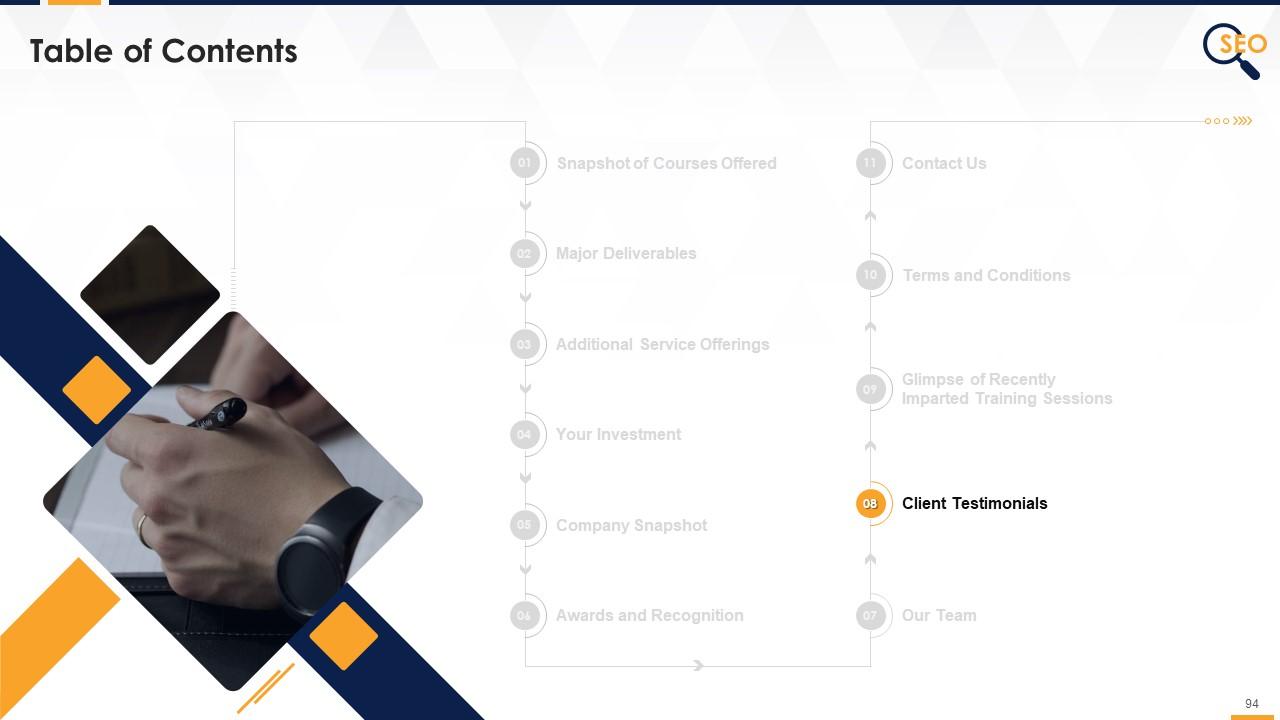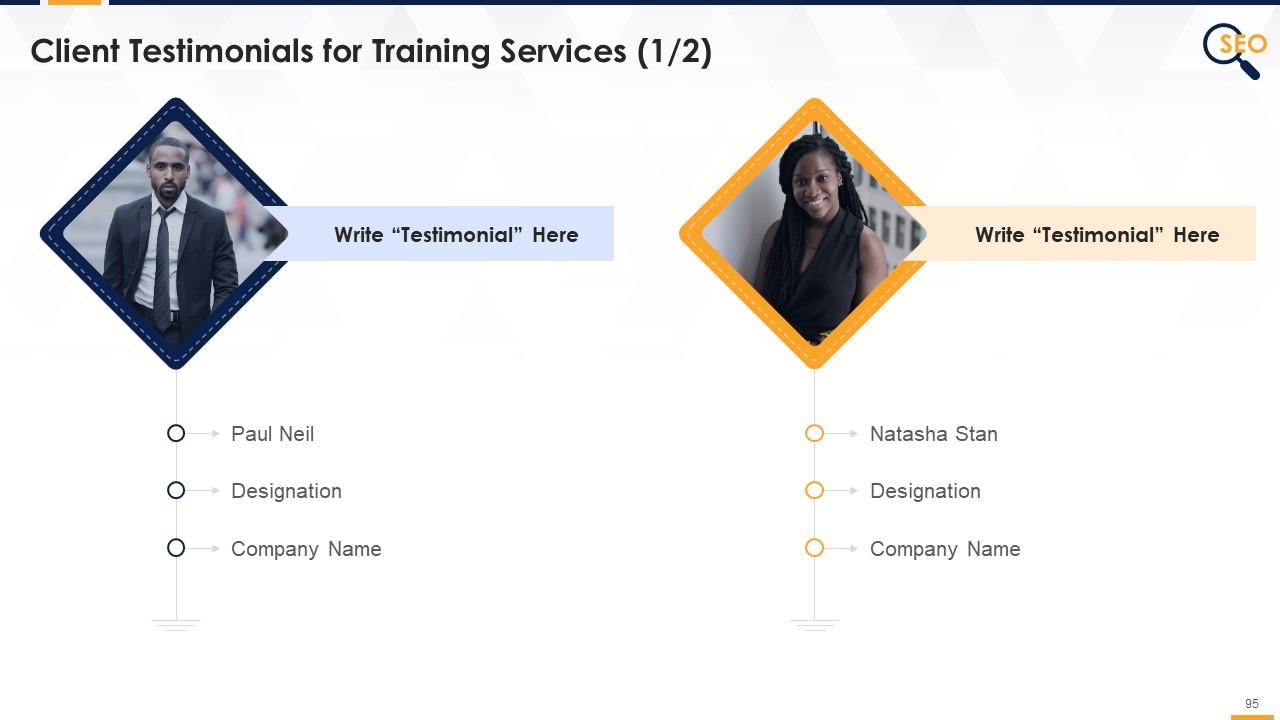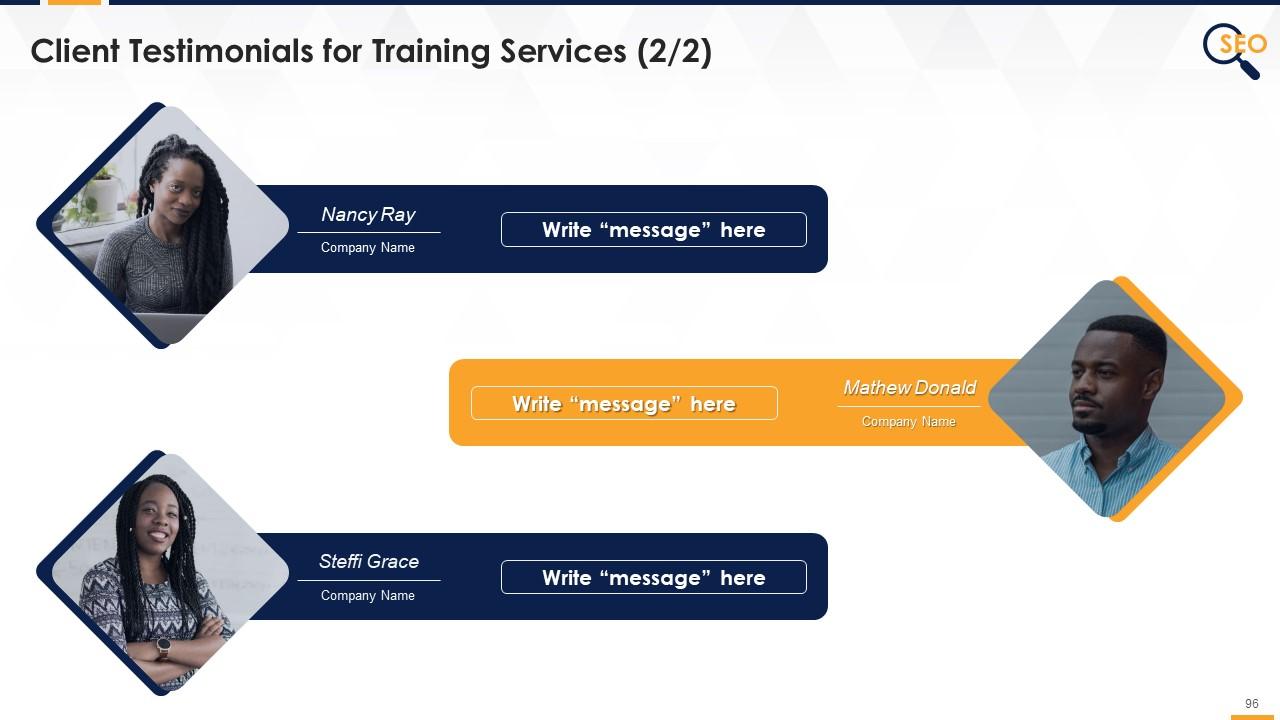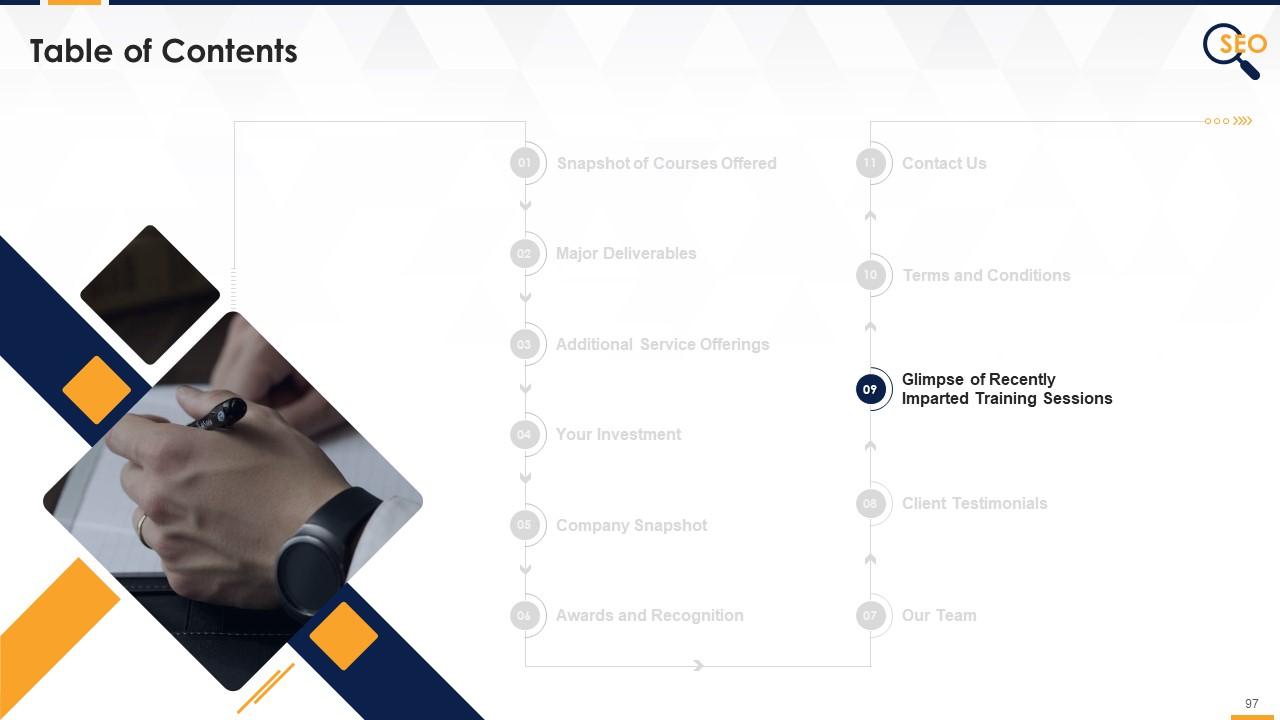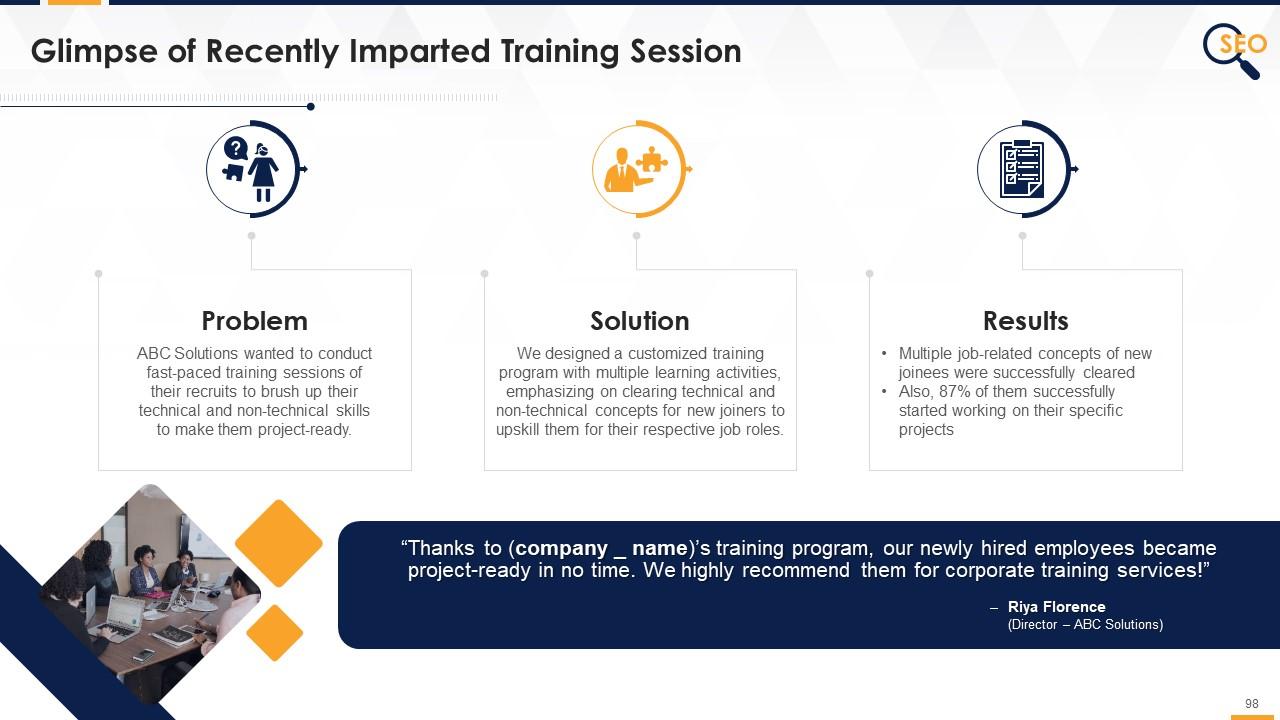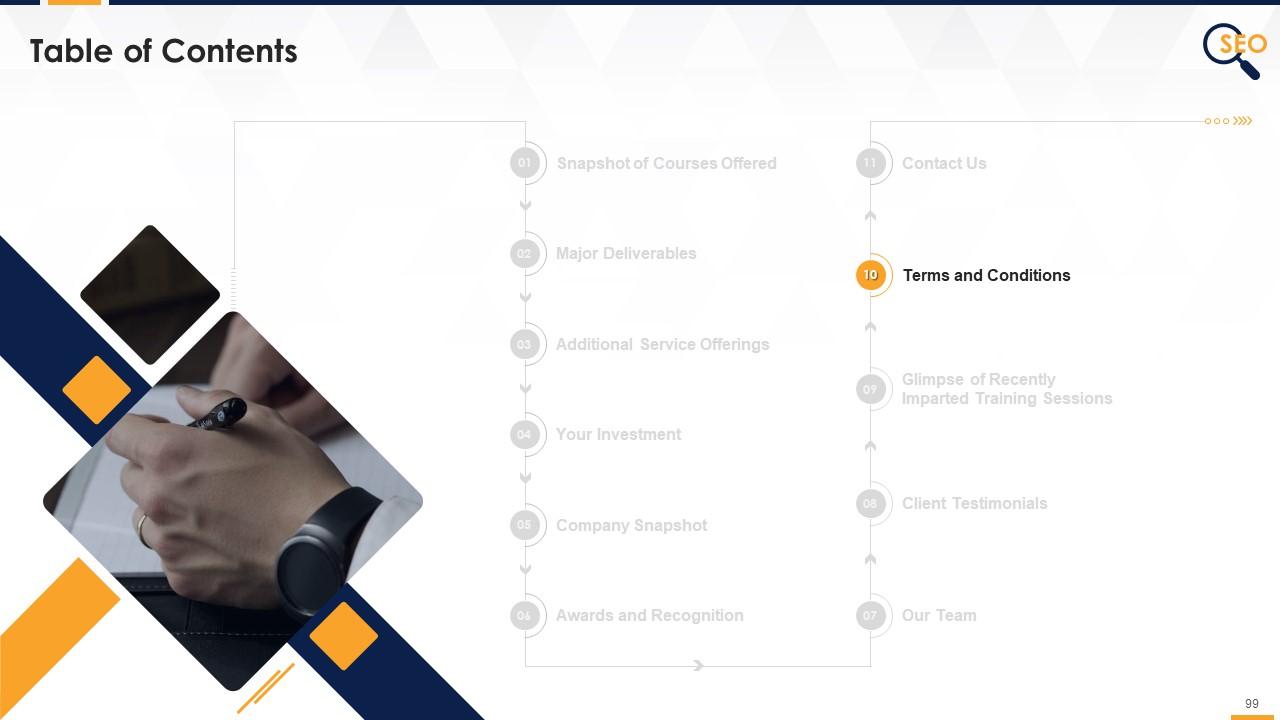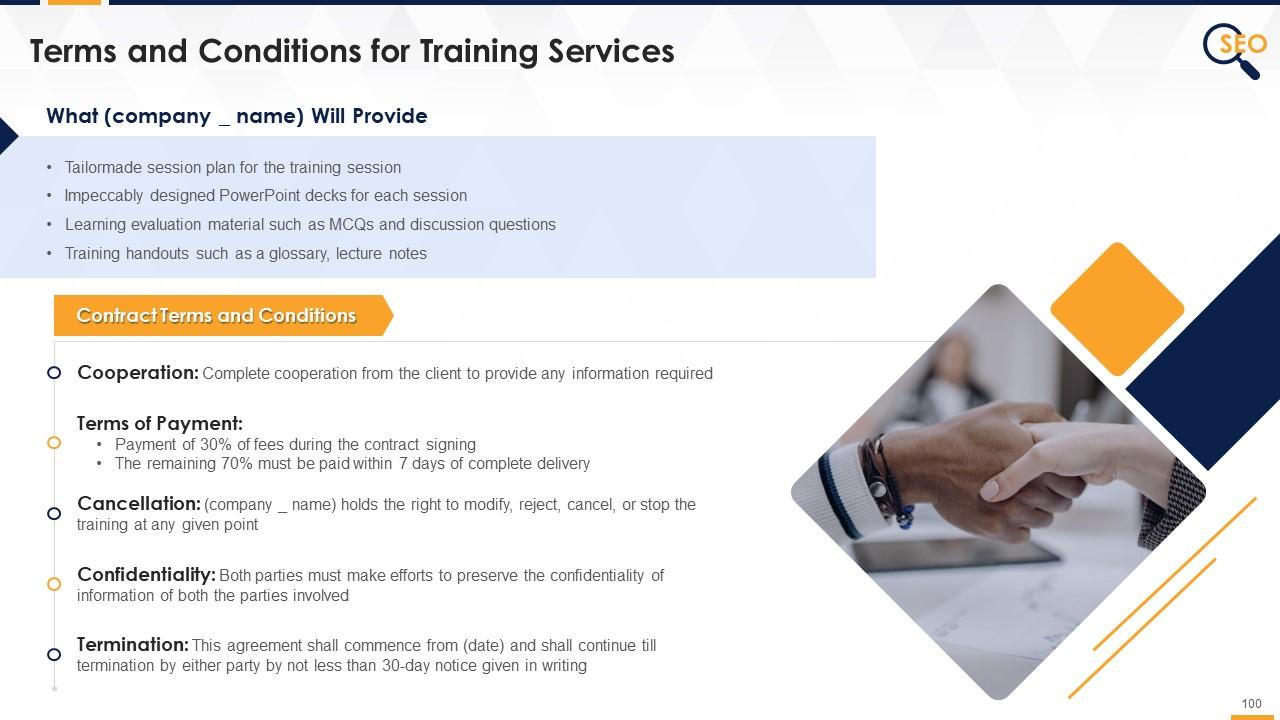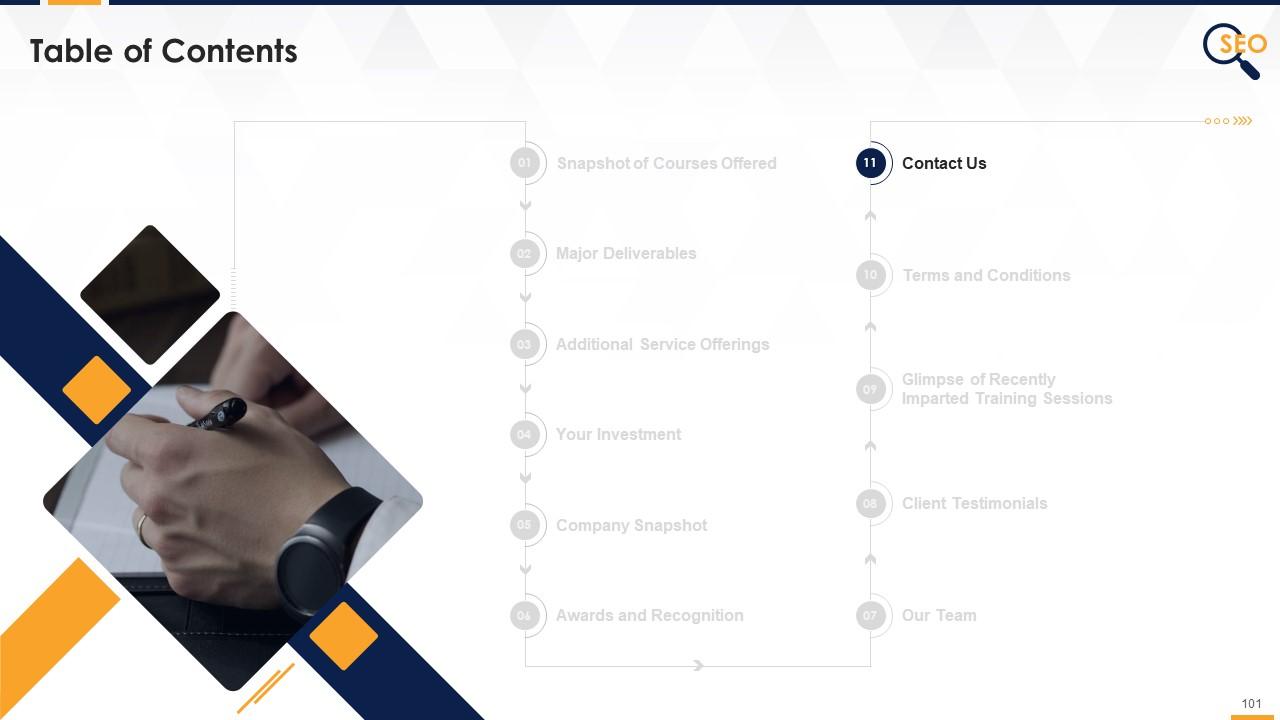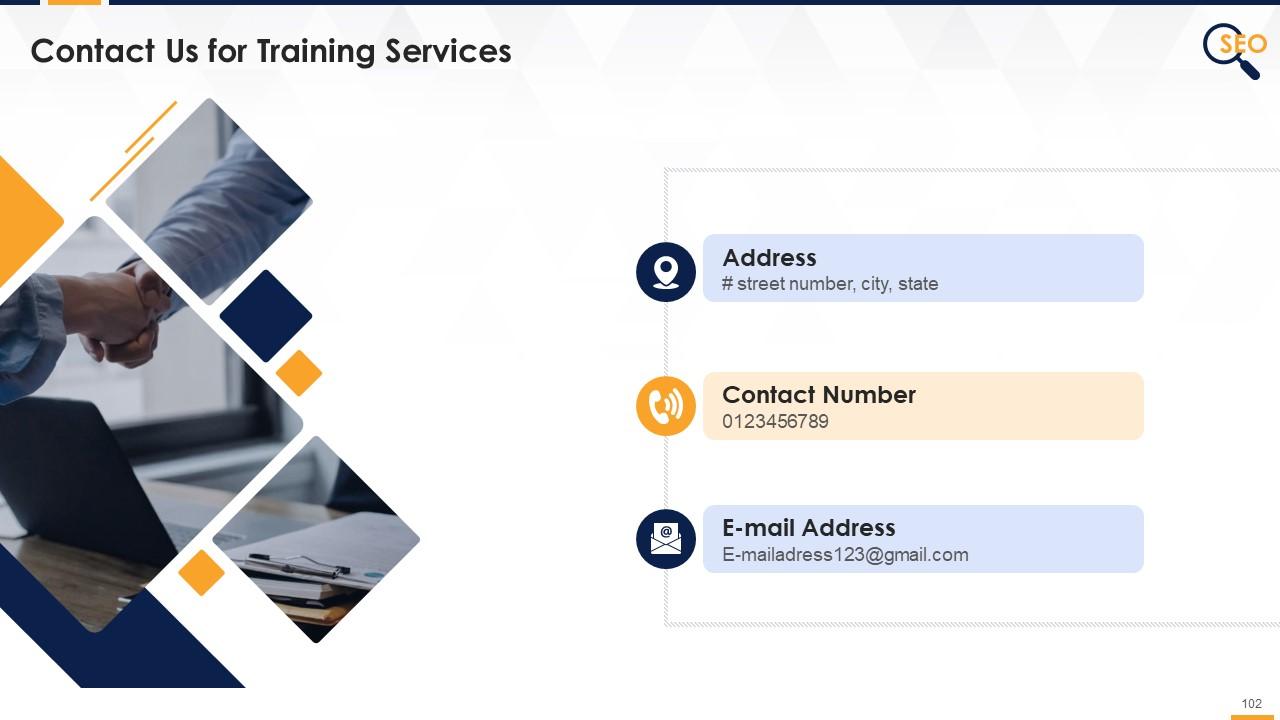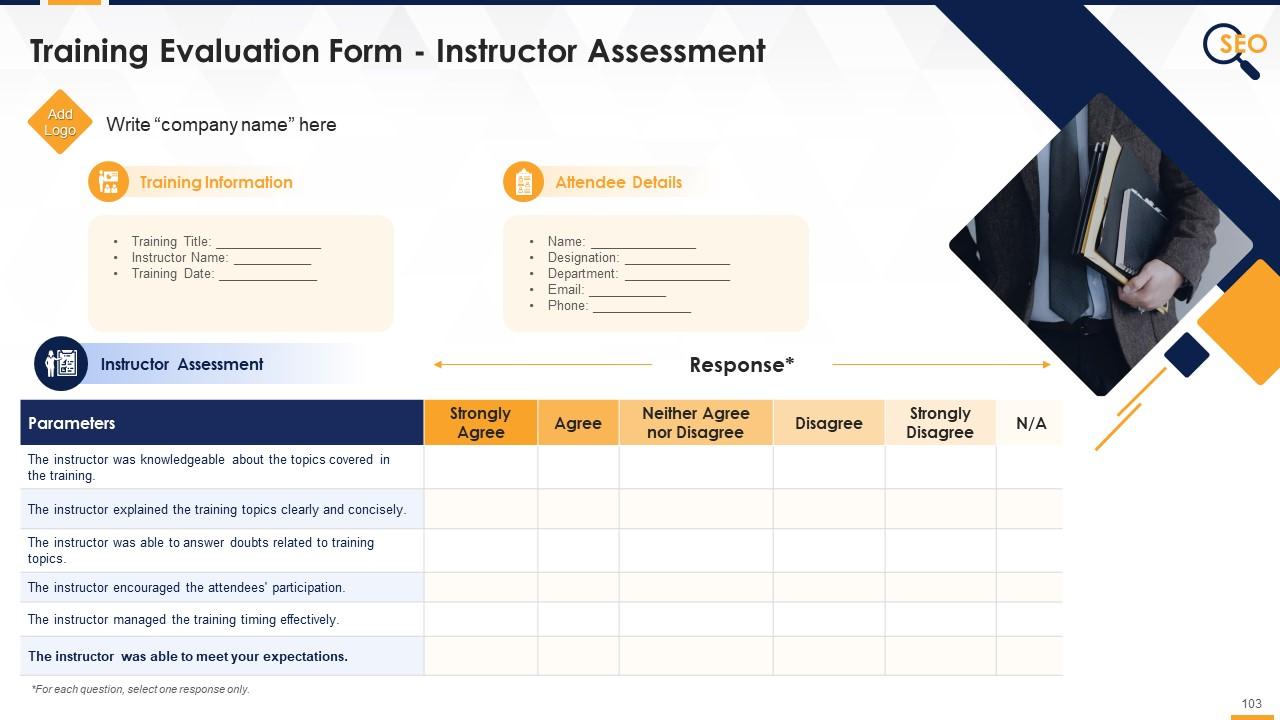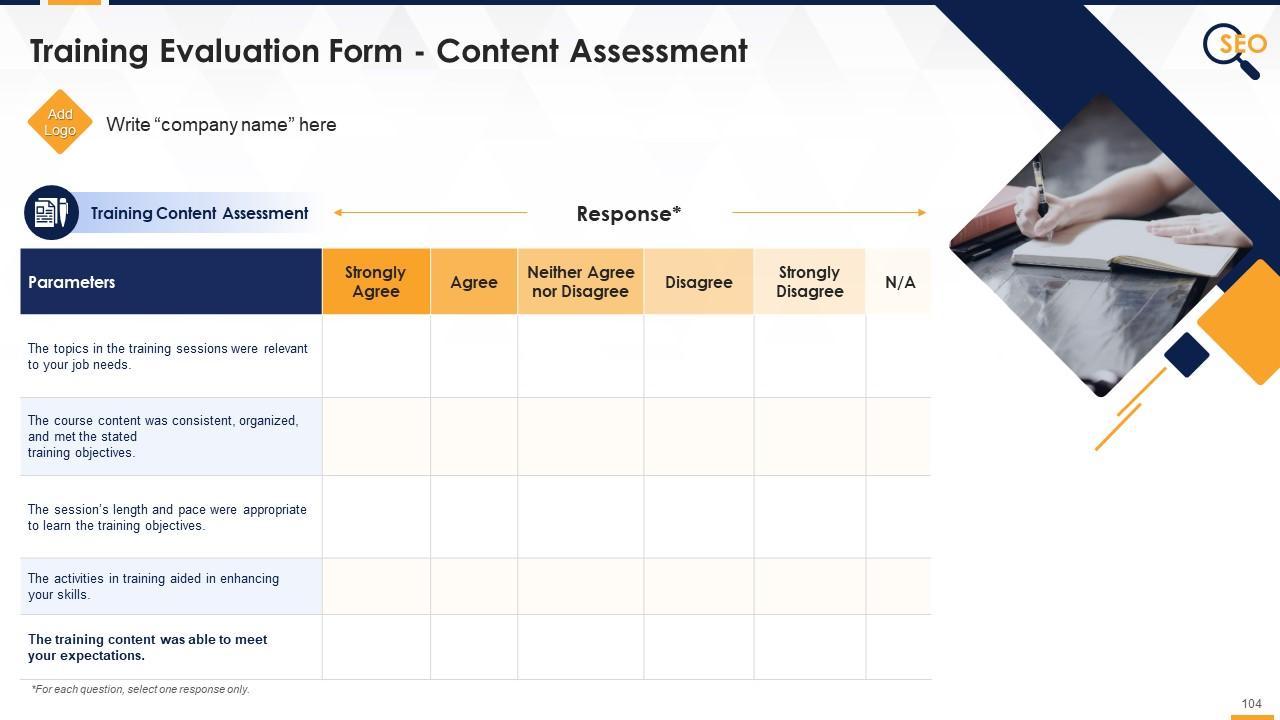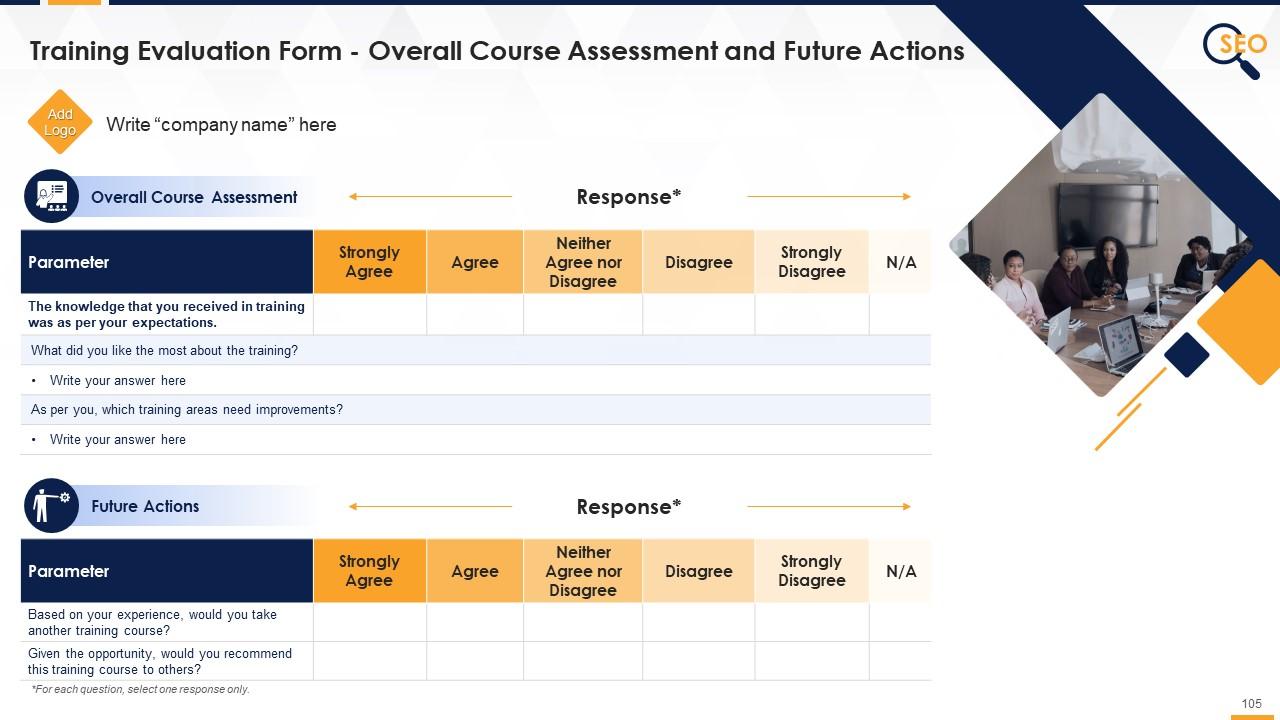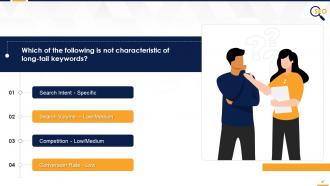Keyword Research Training Module On Search Engine Optimisation Edu Ppt
This training module covers the concept of keyword research in SEO search engine optimization. The PPT deck includes content on the significance of keyword research and selection factors. Further, it exemplifies the broad and long-tail keywords and compares them on multiple parameters such as the number of keywords, search intent, the effort required to rank, and conversion rate. It also contains the strategy to conduct keyword research effectively. The training deck covers the keyword density and its relevancy in SEO along with the LSI keywords. The PowerPoint training module also includes impeccably designed slides on dos and donts of keyword research and key takeaways to summarize the session learnings. The deck also has a hands-on activity to showcase to the trainees how to implement learned knowledge of keyword research in SEO practically.
- Google Slides is a new FREE Presentation software from Google.
- All our content is 100% compatible with Google Slides.
- Just download our designs, and upload them to Google Slides and they will work automatically.
- Amaze your audience with SlideTeam and Google Slides.
-
Want Changes to This PPT Slide? Check out our Presentation Design Services
- WideScreen Aspect ratio is becoming a very popular format. When you download this product, the downloaded ZIP will contain this product in both standard and widescreen format.
-

- Some older products that we have may only be in standard format, but they can easily be converted to widescreen.
- To do this, please open the SlideTeam product in Powerpoint, and go to
- Design ( On the top bar) -> Page Setup -> and select "On-screen Show (16:9)” in the drop down for "Slides Sized for".
- The slide or theme will change to widescreen, and all graphics will adjust automatically. You can similarly convert our content to any other desired screen aspect ratio.
Compatible With Google Slides

Get This In WideScreen
You must be logged in to download this presentation.
PowerPoint presentation slides
Presenting Training Module on Keyword Research in SEO. This presentation deck contains 105 well researched and uniquely designed slides. These slides are 100 percent made in PowerPoint and are compatible with all screen types and monitors. They also support Google Slides. Premium Customer Support available. Suitable for use by managers, employees and organizations. These slides are easily customizable. You can edit the color, text, icon and font size to suit your requirements.
People who downloaded this PowerPoint presentation also viewed the following :
Content of this Powerpoint Presentation
Slide 4
This slide provides information regarding the definition of a keyword in SEO. It also visually presents the position of the keyword in the search engine webpage
Slide 5
The purpose of this slide is to highlight the importance of keyword research in search engine optimization, such as to achieve a higher ranking in SERP, have a better understanding of user demands, drive more traffic towards the website, etc.
Slide 7
This slide showcases the major factors that impact SEO keyword selection, such as search volume, competition, keyword effectiveness index, relevancy, and intent. It also provides information regarding the ideal keyword and order of importance of the factors.
Instructor's Notes:
The major factors impacting keyword selection in SEO are following:
Search Volume:
- Search volume is a metric to determine the number of times a keyword is searched in a given time
- Prefer the keywords with high/moderate search volume as it will help in driving more traffic towards the website
Competition:
- Keyword competition is a metric that provides an idea of how much effort will be required to get a good rank in SERPs by using particular keywords
- It is measured on a scale of 0 to 100, 100 being more competitive
- Avoid choosing highly competitive keywords, as it will be tough to rank even on page 1 of SERPs
Keyword Effectiveness Index:
- Keyword effectiveness index = Keyword Search Volume/Keyword Competition
- Always select the keywords with high search volume and low/moderate competition
- The higher the keyword effectiveness index, the more suitable it is for SEO
Relevancy:
- Always use keywords that reflect the essence of the website/webpage
- Using non-relevant keywords will result in lower search rankings and poor user engagement
- Relevancy always trumps over both search volume and competition in keyword selection
Intent:
- Use commercial intent keywords such as buy, download, discount, etc., as they result in better conversion rates
Slide 9
This slide provides an overview of broad keywords in SEO in terms of their characteristics, such as three or less than three combinations of words, generic in nature, etc. It also contains two examples to showcase the broad keywords in the search engine webpage.
Slide 10
The purpose of this slide is to provide an overview of long-tail keywords in SEO. It includes details regarding long-tail keywords such as specific in nature, low search volume, etc.
Instructor's Notes:
The long-tail keywords have the following types:
Informational:
- When keyword context is “how,” it is called an informational long-tail keyword
- Examples: How to sell flower bouquets online?, How to sell handmade eco-friendly bags online?
Transactional:
- When keyword context is “action-oriented,” it is called a transactional long tail keyword
- Examples: Order flower bouquets online in New Jersey, Buy eco-friendly grocery bags online
General:
- When a keyword is used to search about a particular product or service etc., it is called a general long-tail keyword
- Example: eCommerce website WordPress templates, Images for Business Presentation
Slide 11
This slide provides information regarding the comparison of board and long-tail keywords on multiple factors such as the number of words, search intent, keyword search volume, keyword competition, effort required to rank, and conversion rate.
Slide 12
The slide visually presents the information regarding search volume and conversion rate of broad and long-tail keywords. It also contains details about how broad keywords are used to make appropriate long-tail keywords.
Slide 14
This slide provides information regarding the multistep approach to conduct effective keyword research in SEO. It contains details of major steps such as creating a potential keyword list, conducting competitive analysis to get keyword ideas, using Google Keyword Planner to add more keywords, and validating keywords in the list.
Instructor's Notes:
Step 1: Create a Potential Keyword List:
- Create a list of potential keywords that reflects the essence of the business
Step 2: Conduct Competitive Analysis to get Keyword Ideas:
- Check out the keywords used by major business competitors and add similar ones to your potential keyword list
Step 3: Use Google Keyword Planner to Add More Keywords and Analyze Prepared Keyword List:
- Refine the prepared keyword list on metrics such as search volume (High), competition (Moderate/Low), and cost per click (Moderate/Low)
- If required, add more keywords to list from the keyword ideas in the google keyword planner
- Shortlist the final keywords to 5 to 20 with the metrics mentioned above
- Use Google Trends to compare shortlisted keywords based on interest over time & select the one that provides the best average over time
Step 4: Validate Keywords in List:
- Validate the final keyword list on the basis of the following parameters:
- Search Volume: High/Moderate
- Competition: Less than 0.3
Slide 16
This slide provides information regarding the keyword density in SEO and the formula to calculate it. It also contains the reasons for its low relevancy in SEO, which are the updation of ranking algorithms and unchecked keyword stuffing.
Slide 18
This slide provides an overview of LSI keywords in SEO. It also includes details of tools to find appropriate latent semantic indexing keywords such as Google autocomplete & related searches, LSI graph, etc.
Slide 19
This slide provides information regarding the importance of LSI keywords in SEO to have a better understanding of website content in order to achieve higher ranks in search engine results pages (SERPs).
Slide 21
This slide lists down the multiple dos and don’ts of keyword research in SEO. The common dos are using long tail keywords, focusing on customer search intent while selecting keywords, etc., and don’ts are avoiding usage of acronyms and too much keyword repetition.
Slide 23
This slide provides information regarding the approach used for the hands-on activity to understand the concept of keyword research in SEO.
Slide 24
This slide provides information regarding obtaining keyword ideas from Wikipedia and Google Search Results to create a potential keyword list. It also includes details of the primary keyword and its usage context.
Slide 25
The purpose of this slide is to provide information regarding obtaining SEO keyword ideas from Ubersuggest to develop a potential list.
Slide 26
This slide tabulates the SEO keyword ideas obtained from multiple sources post performing keyword research. The multiple sources to obtain keyword ideas tabulated are Wikipedia, Google Search, and Ubersuggest.
Slide 27
This slide provides information regarding the technique to perform the competitor analysis for SEO keyword research. It also includes details of shortlisted competitors. Further, it lists down the tools used to identify organic keywords used by the competitors such as Spyfu, Similarweb, and SEMrush.
Slide 28
This slide provides information on how to conduct the competitor analysis in SEO keyword research using Spyfu software. It also includes details of the organic search overview and top organic keywords of the competitor URL analyzed.
Slide 29
The purpose of this slide is to provide an overview of the tool Similarweb in performing competitor analysis for SEO keyword research. It also includes details of top organic keywords used by the competitor along with the information of multiple traffic sources.
Slide 30
This slide provides information regarding utilizing the SEMrush tool to perform the competitor analysis in SEO keyword research. It contains details regarding the software, such as domain overview, authority score, organic and paid search traffic, etc. It also includes details of the top organic keywords used by the competitor.
Slide 31
This slide provides information regarding the relevant SEO keywords used by the major competitors. It also contains the details of the tools used for competitor analysis, such as Spyfu, Similarweb, and SEMrush.
Slide 32
The purpose of this slide is to provide information regarding steps to access Google Keyword Planner. It also includes details of options to choose to discover new keywords for SEO.
Slide 33
This slide showcases the working of Google Keyword Planner’s Discover New Keywords option to find more relevant keywords for SEO.
Instructor's Notes:
From the list, pick the keywords and add them to google planner to get more keyword ideas.
Slide 34
This slide showcases the dashboard of Google Keyword Planner’s Discover New Keywords Options. The major components of the dashboard highlighted are the save option and list keyword ideas.
Instructor's Notes:
Once keyword ideas are shown on Google Planner, save them as a .csv file using the option given in the top hand right corner.
Slide 35
This slide highlights the complete list with potential SEO keywords ideas obtained from keyword competitive analysis and Google Keyword Planner. It also contains the details regarding each SEO keyword’s average monthly searches, competition, and top of page bid.
Instructor's Notes:
Open the .csv file in excel and glance over the keyword ideas generated to verify if they are in context with the primary keyword or not.
Slide 36
This slide provides information regarding the validated list with SEO keywords. It also contains details of the parameters used to filter the keywords that are competition (low & medium) and competition indexed value (less than or equal to 30).
Instructor's Notes:
- Now extract the keywords from the list with low/medium competition and high search volume
- For that add filter in excel file as per following criteria:
- Competition: Low and Medium
- Competition (indexed value): Less than or equal to 30
- Then, sort the extracted keywords in descending order of search volume
Slide 37
The purpose of this slide is to showcase the technique to perform SEO keyword validation using Google Keyword Planner. It also contains details of the filtering metrics used that are competition and competition (indexed value).
Instructor's Notes:
- We can also apply filter in Google Keyword Planner to extract keywords
- Add filter as per following criteria:
- Competition: Low and Medium
- Competition (indexed value): Less than or equal to 30
Slide 38
This slide provides information about the relevant SEO keyword ideas obtained post conducting successful keyword research. It also provides details of the primary keyword for which keyword research is performed.
Instructor's Notes:
In the excel file, remove keywords that contain the brand names, are repeating, or have wrong spellings.
Slide 39
This slide provides information regarding how to perform the SEO keyword validation using Google Trends by comparing two keywords.
Instructor's Notes:
- Use Google Trends to check the internet user's interest in the keywords by comparing them over a period of time
- Select keywords with high average value of “interest over time” as they are best suited for SEO
- Repeat it for all the relevant keywords and then prepare the final list
Slide 41
This slide depicts the summary of the SEO keyword research session. It contains information regarding the factors impacting keyword selection, broad & long tail keywords characteristics, relevancy of keyword density, LSI keywords, and the list of keyword research assistance tools such as SEMrush, Google Keyword Planner, etc.
Slides 59 to 74
These slides include multiple energizer activities to break the monotony of training sessions and actively engage trainees. The energizer activities are as follows:
- Buzz
- Red Nose
- Don’t Answer
- Who are You?
- The Name Game
- Pass the Ball
- Genie in a Bottle
- Names and Adjectives
- Who am I?
- Are We Together?
- Write your Name
- Chinese Whisper
- Random Chairs
Slide 76
This slide highlights the cover letter for the training proposal. It includes details regarding what the company providing corporate training can accomplish for the client.
Slide 79
The purpose of this slide is to showcase the multiple types of courses offered by the training company.
Slide 81
This slide indicates the major deliverables that the corporate training firm will provide to the client. The key deliverables highlighted are session plans, PowerPoint deck, evaluation material, and training handouts.
Slide 83
This slide represents the multiple additional services offered by the training firm to the client, such as webinars, planning journals, and e-learning design solutions.
Slide 84
This slide tabulates the major deliverables offered by the training company to the client along with their associated costs.
Slide 86
The purpose of this slide is to highlight the multiple additional services offered by the training firm along with their cost details.
Slide 88
This slide provides an overview of the corporate training firm's vision and mission statements, core values, and key clients.
Slide 90
This slide highlights the major awards and recognition won by the training firm for their exceptional service to clients.
Slide 92
The slide provides information regarding the team members that would be providing the training services to the client. It includes details of the trainer and their respective designations.
Slide 93
The slide provides information regarding the team members that would be providing the training services to the client. It includes details of the employees names and their respective designations.
Slide 95
This slide provides information pertaining to testimonials given by satisfied clients of the training firm.
Slide 96
This slide highlights the testimonials from multiple satisfied clients of the training firm providing information regarding congratulatory messages, client name, and company details.
Slide 98
This slide showcases the case study for the training proposal. It includes information regarding the problem faced by the client and solutions offered by the training firm. It also covers details of the results and client testimonial.
Slide 100
This slide provides information regarding the contract terms and conditions of the training proposal. It also includes details of deliverables that the training company will provide to the client.
Slide 102
The purpose of this slide is to provide the contact information of the corporate training firm. It includes the firm’s official address, contact number, and email address.
Slide 103
This slide highlights the training evaluation form for instructor assessment. It also includes sections to fill details of training information and attendee details.
Slide 104
This slide showcases the questions for the assessment of the training content by the attendees.
Slide 105
The slide indicates the evaluation form for course assessment. It also includes questions pertaining to the future actions of the attendees.
Keyword Research Training Module On Search Engine Optimisation Edu Ppt with all 110 slides:
Use our Training Module On Search Engine Optimization Keyword Research Edu Ppt to effectively help you save your valuable time. They are readymade to fit into any presentation structure.
-
Great quality slides in rapid time.
-
Very unique, user-friendly presentation interface.



